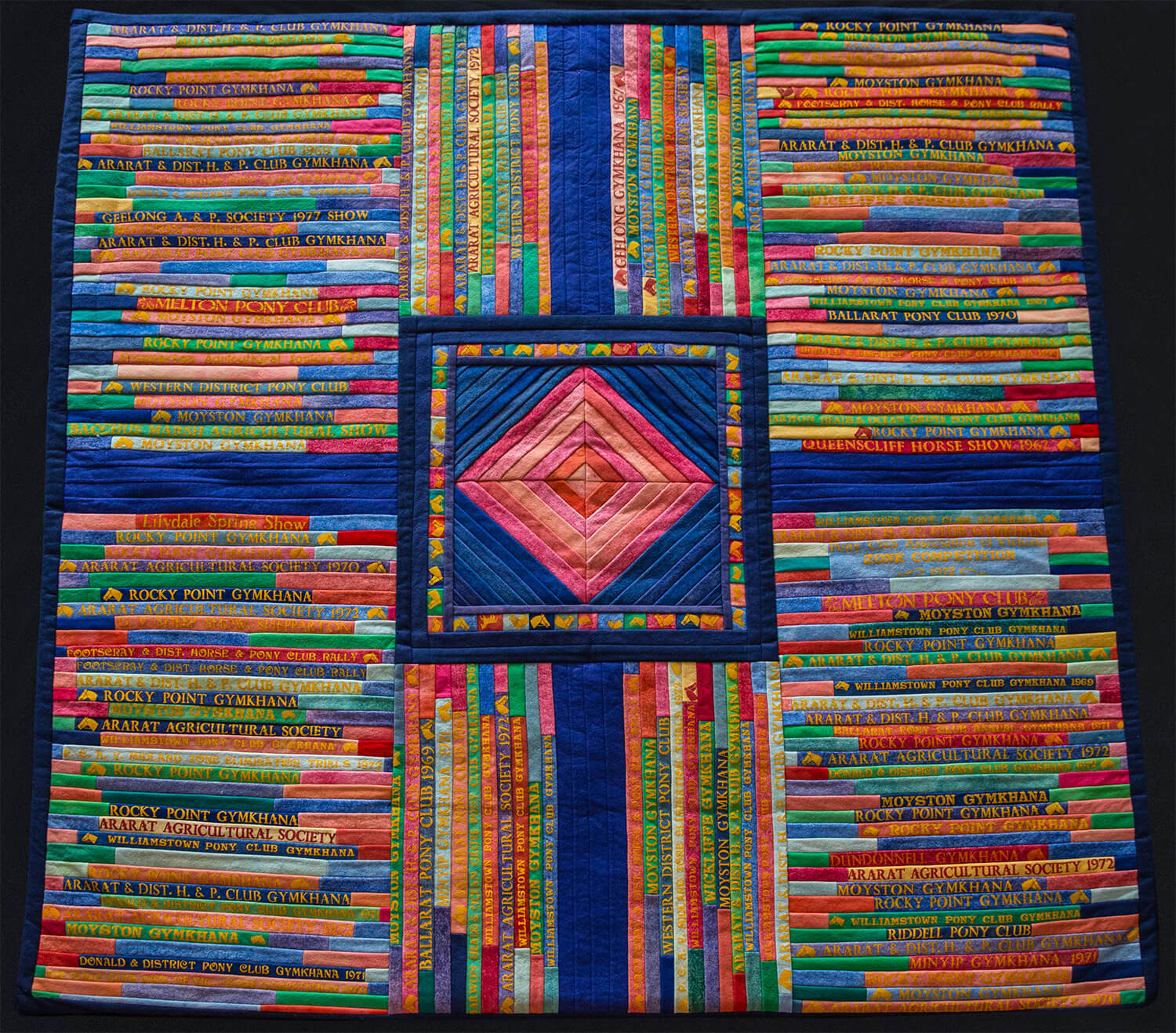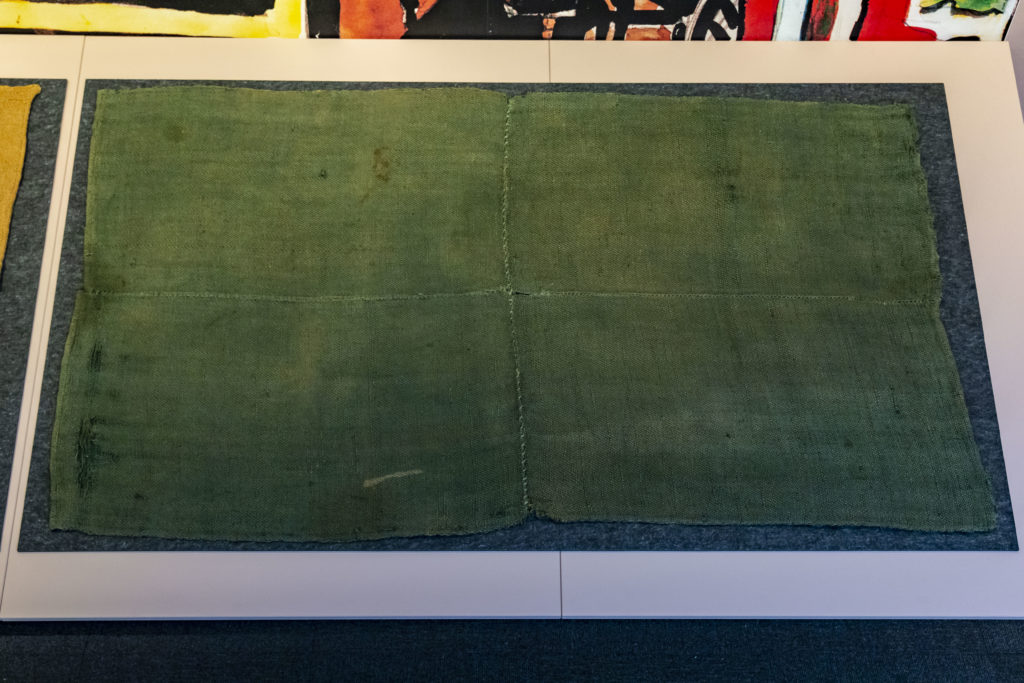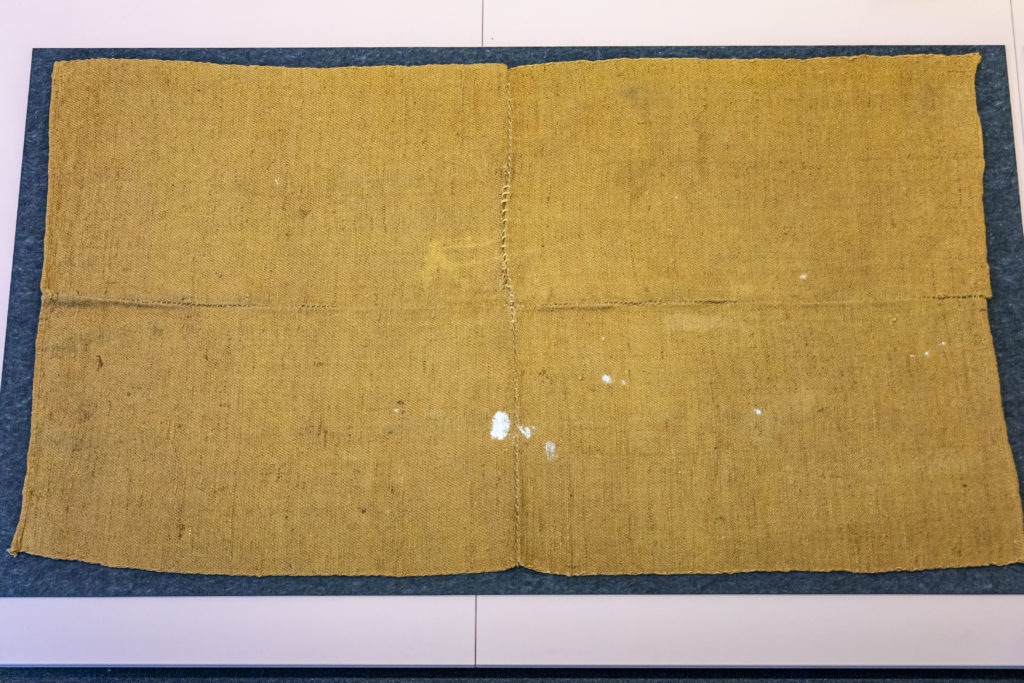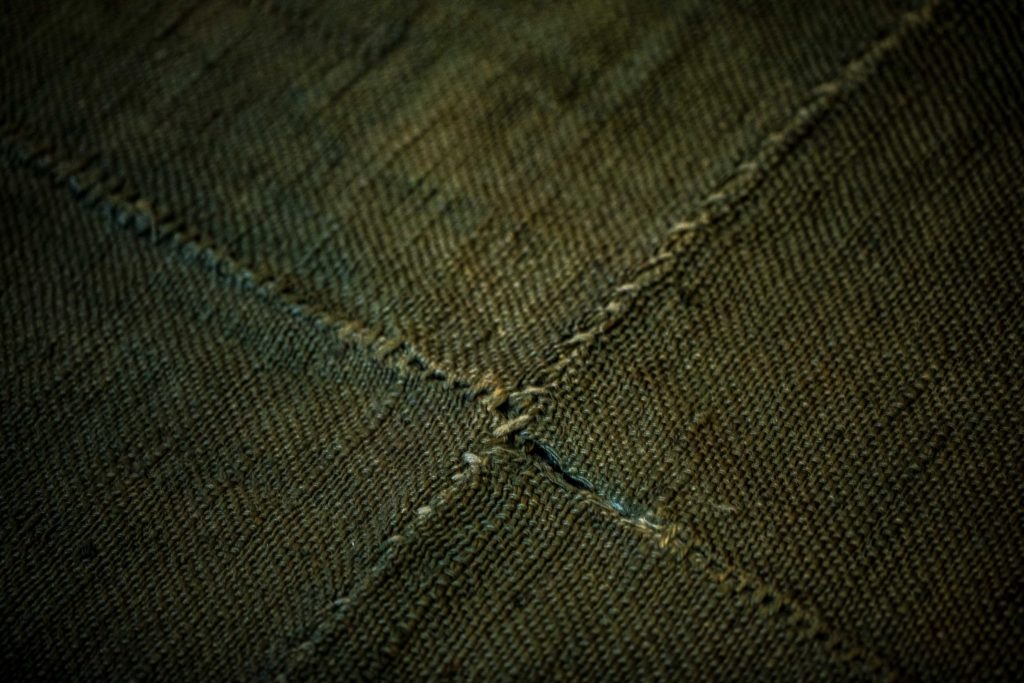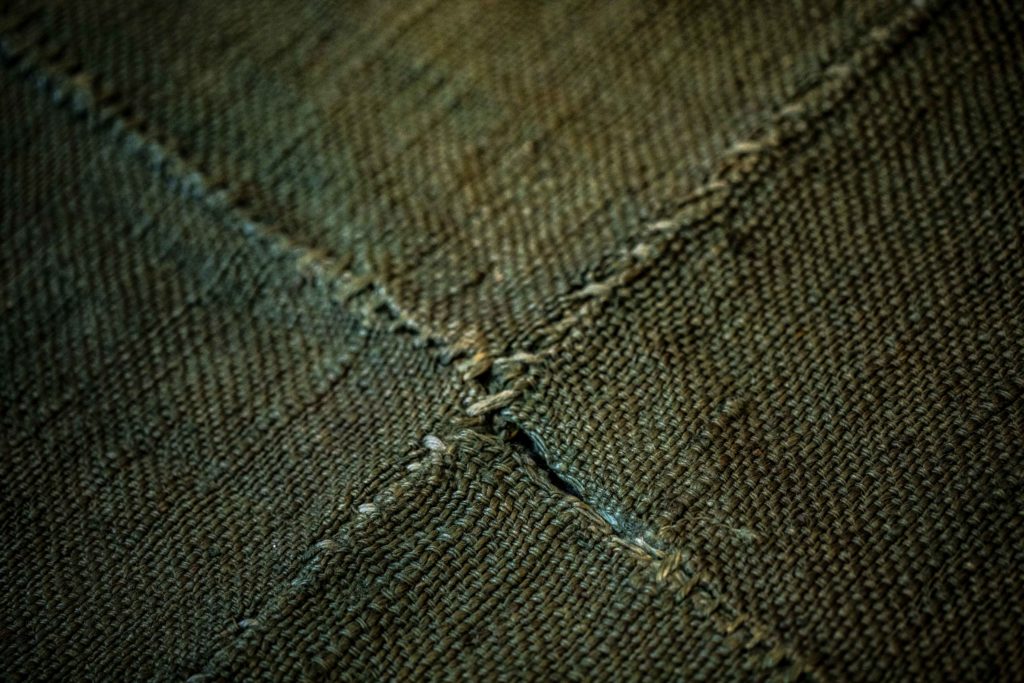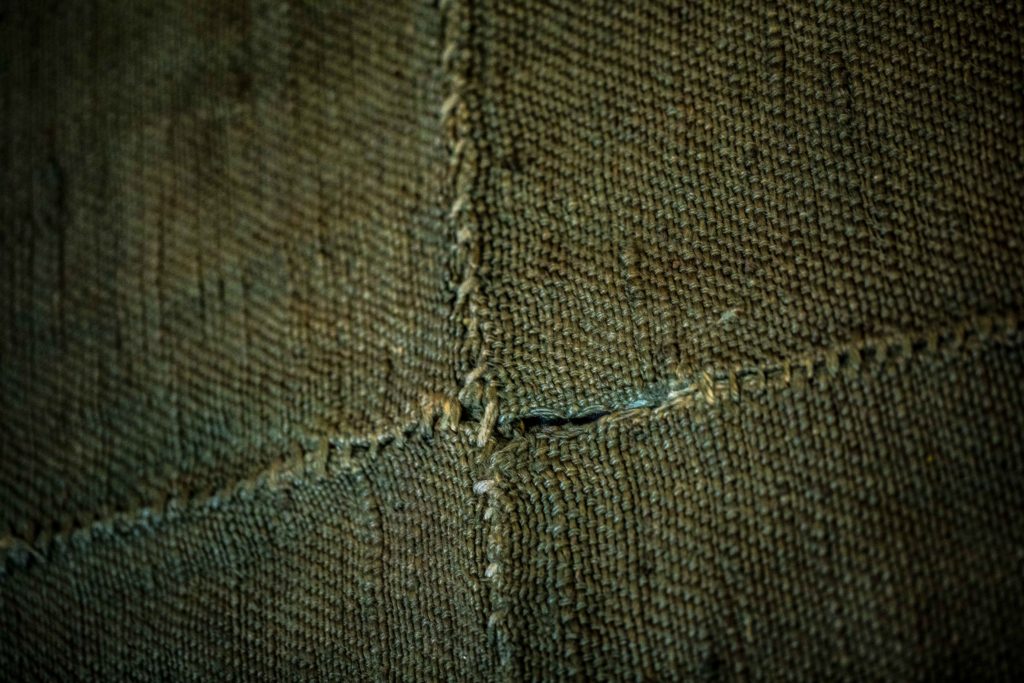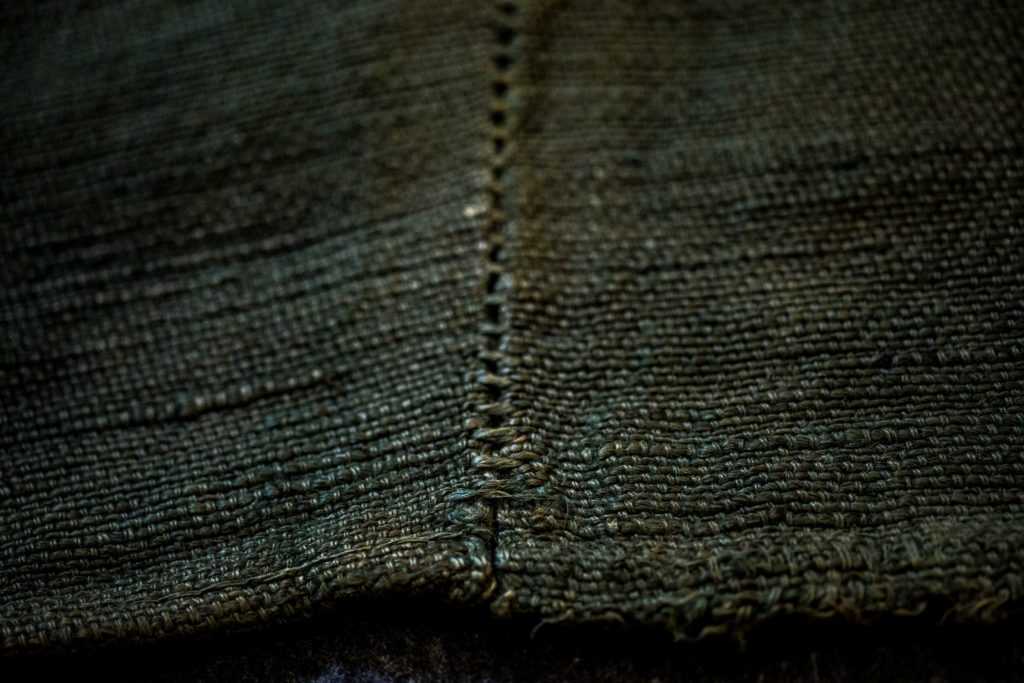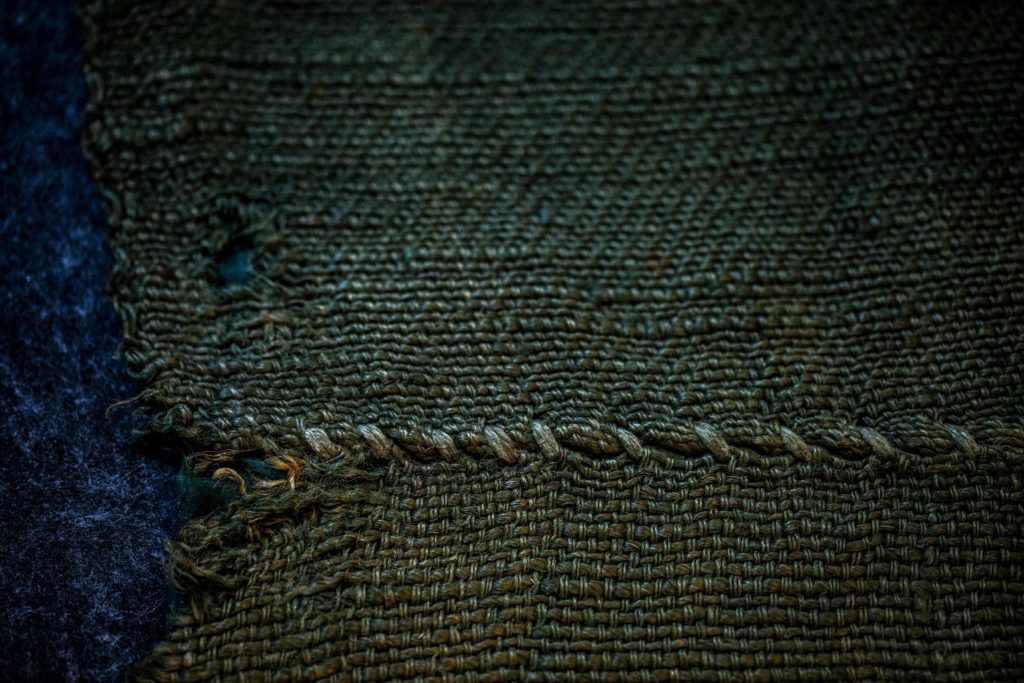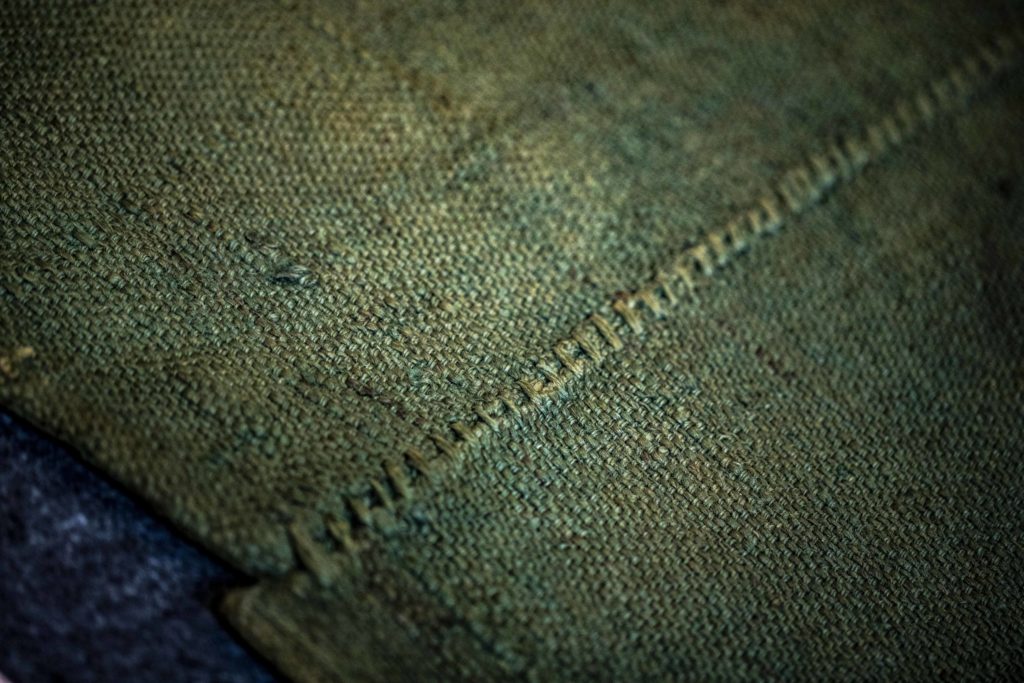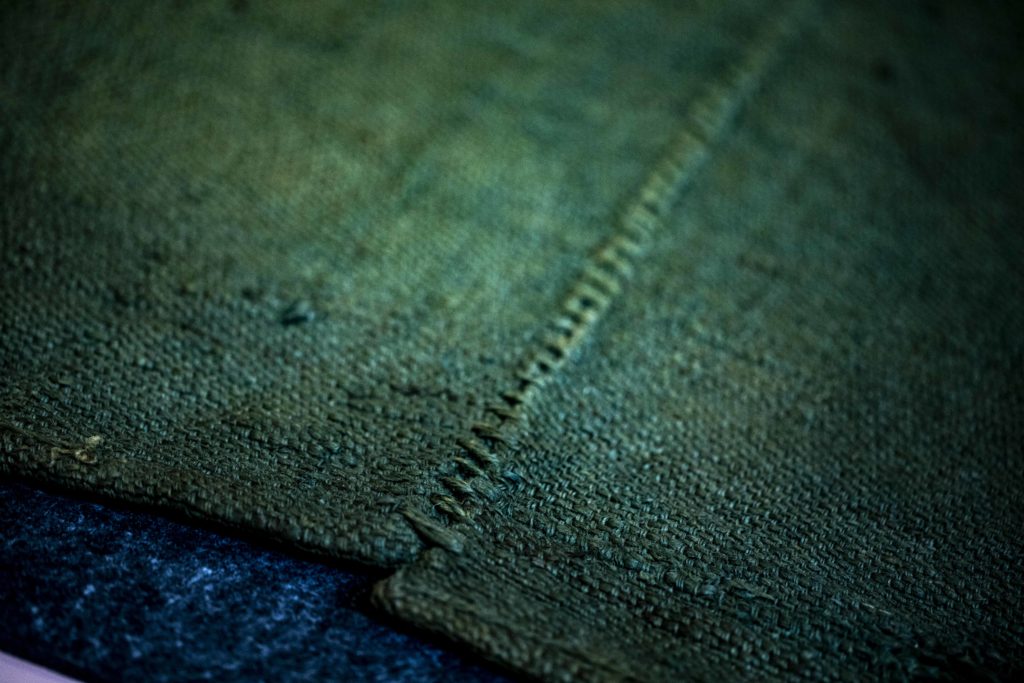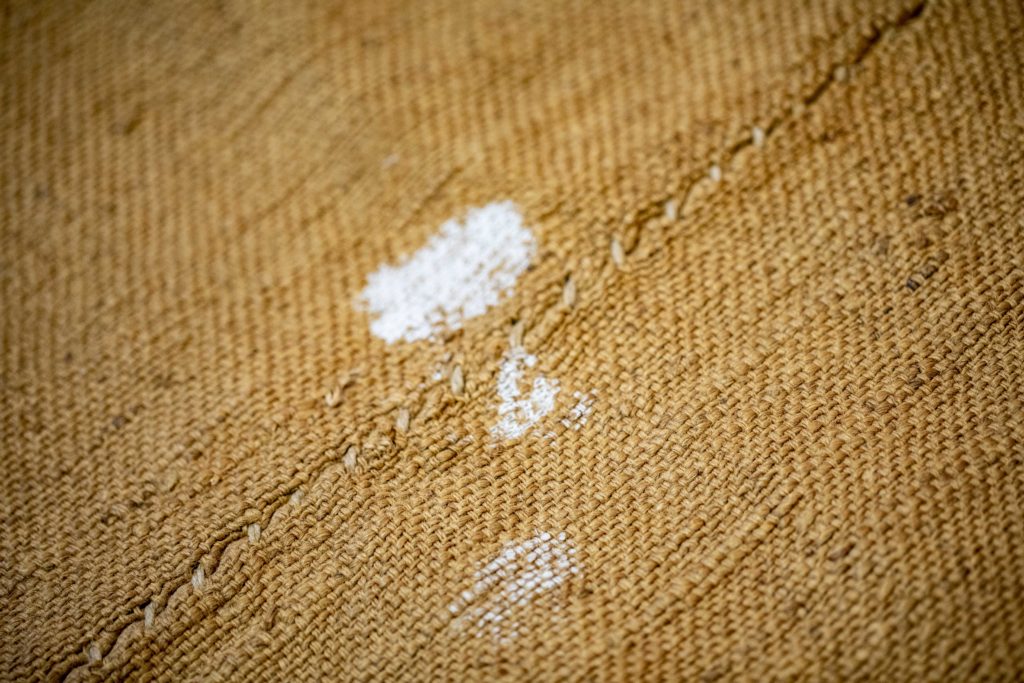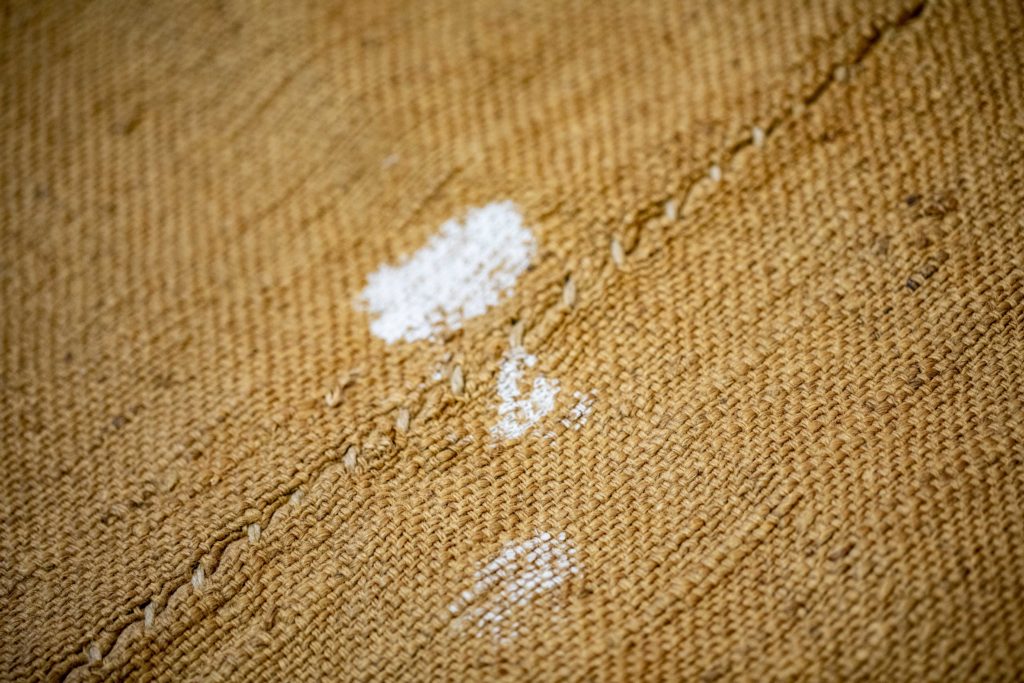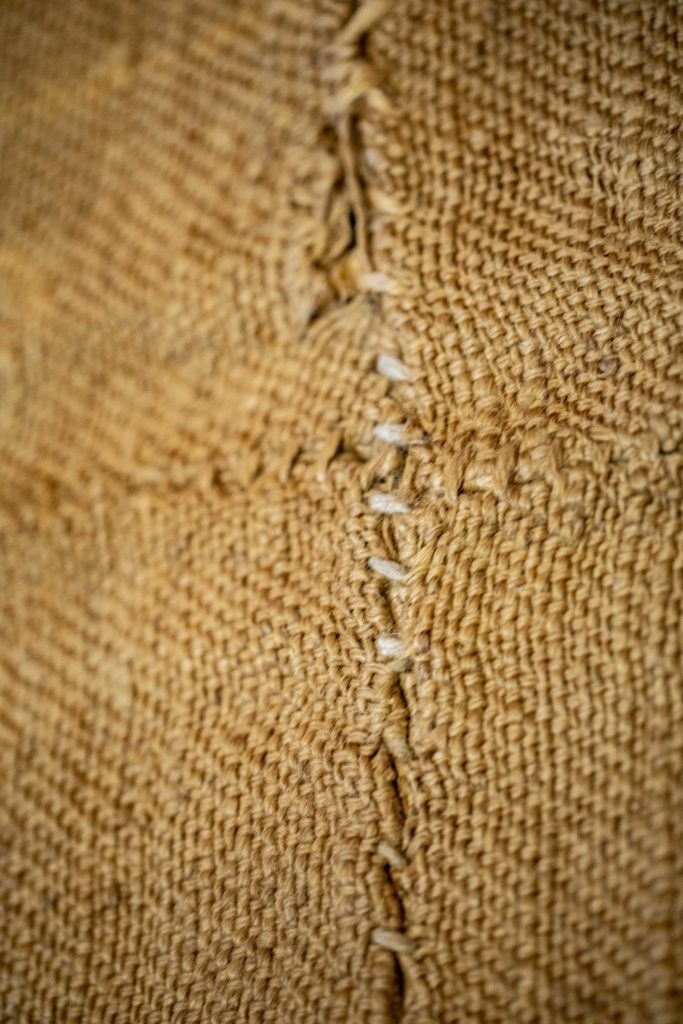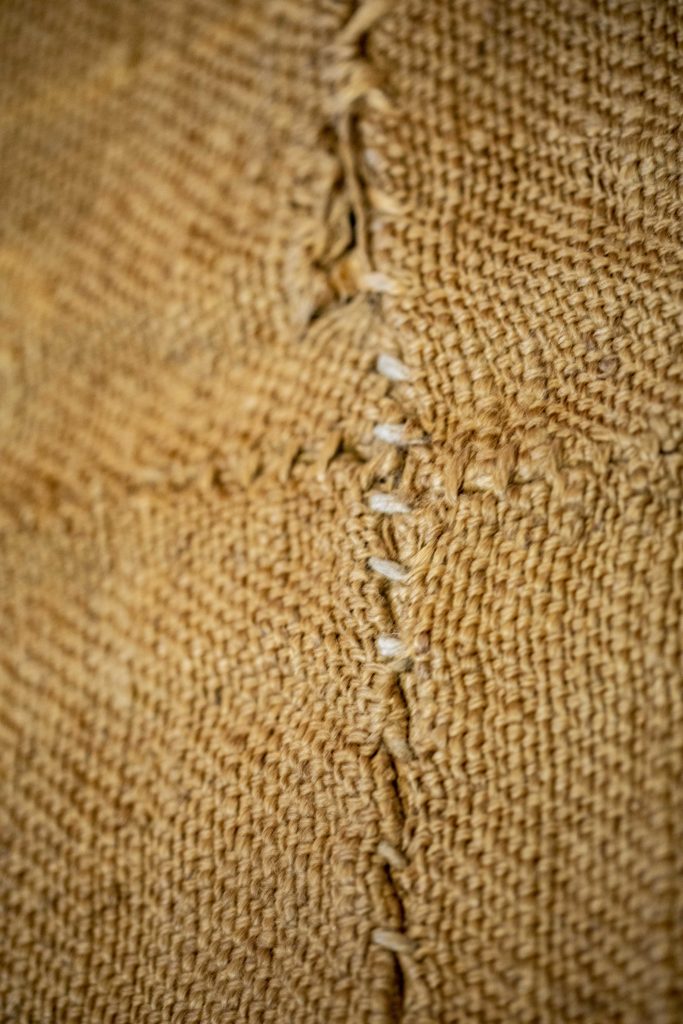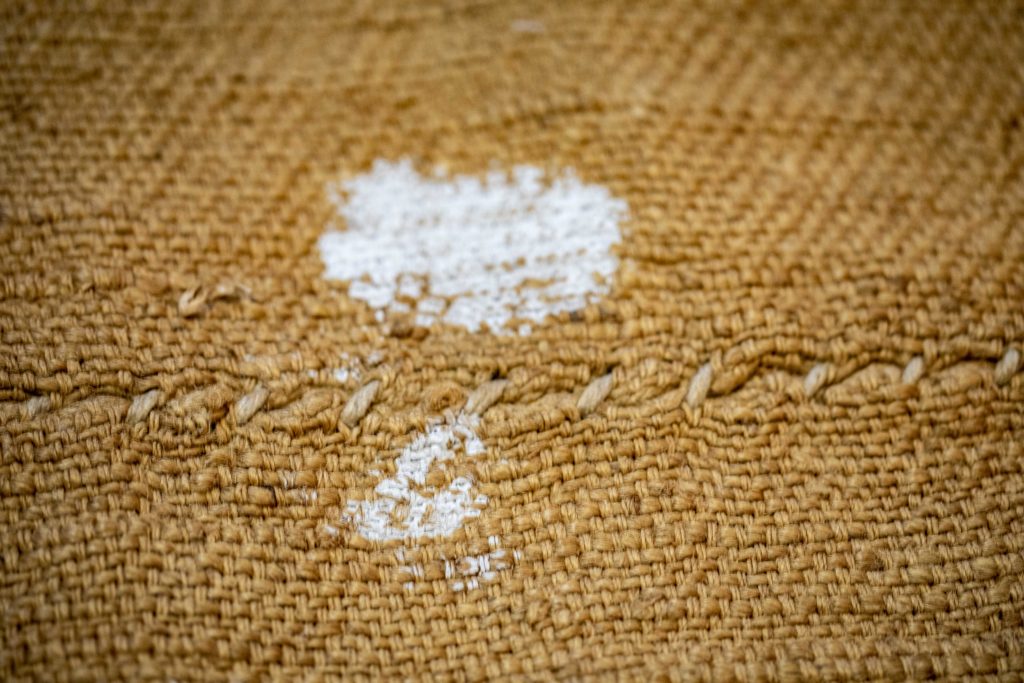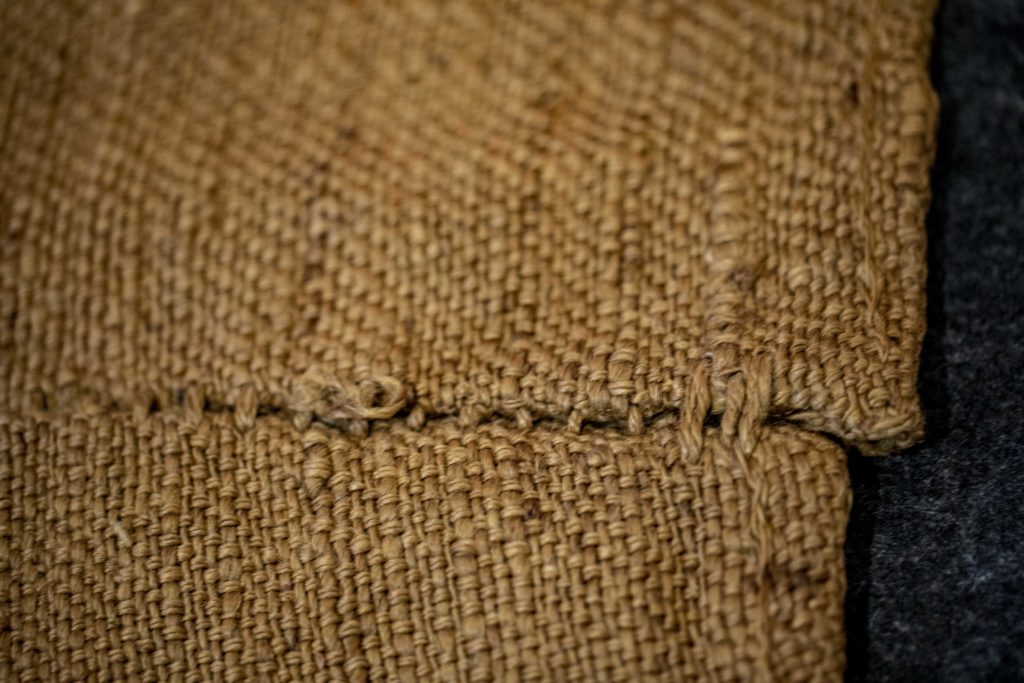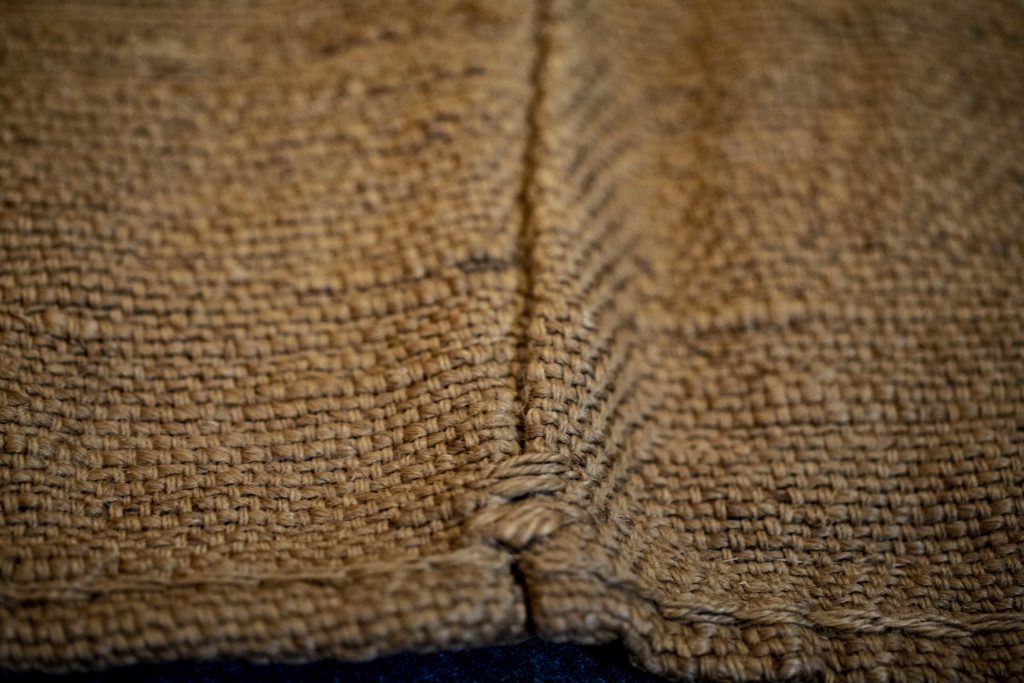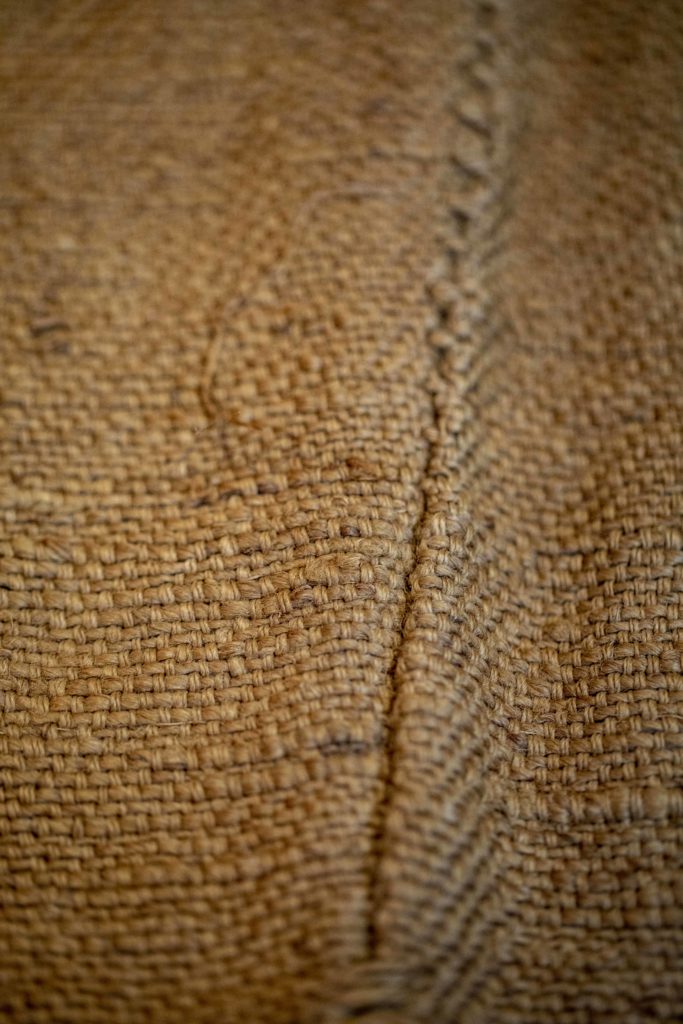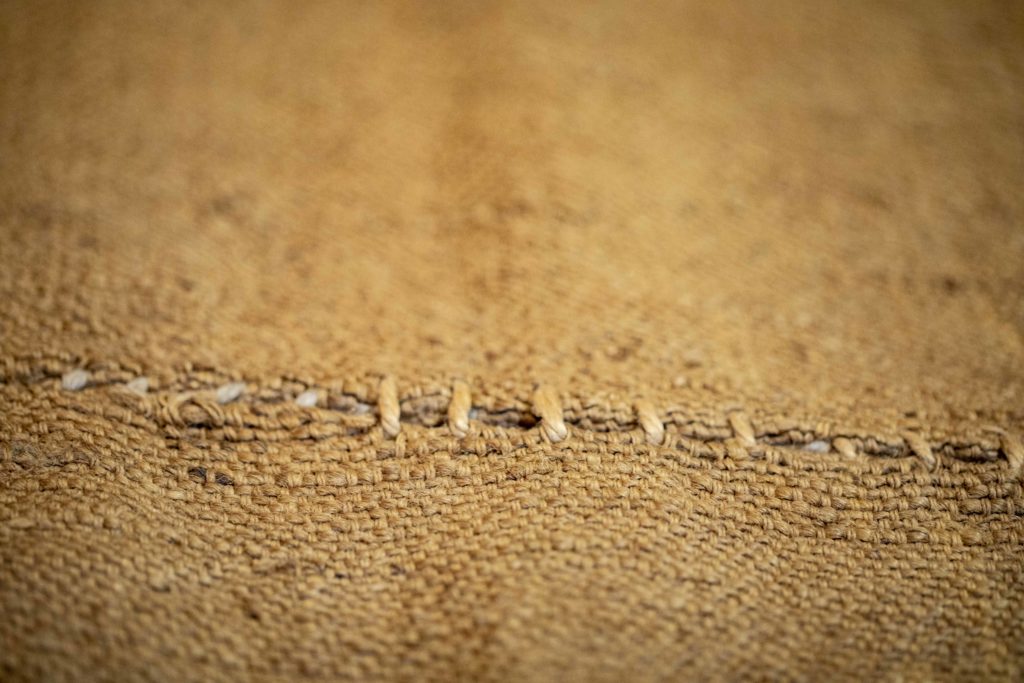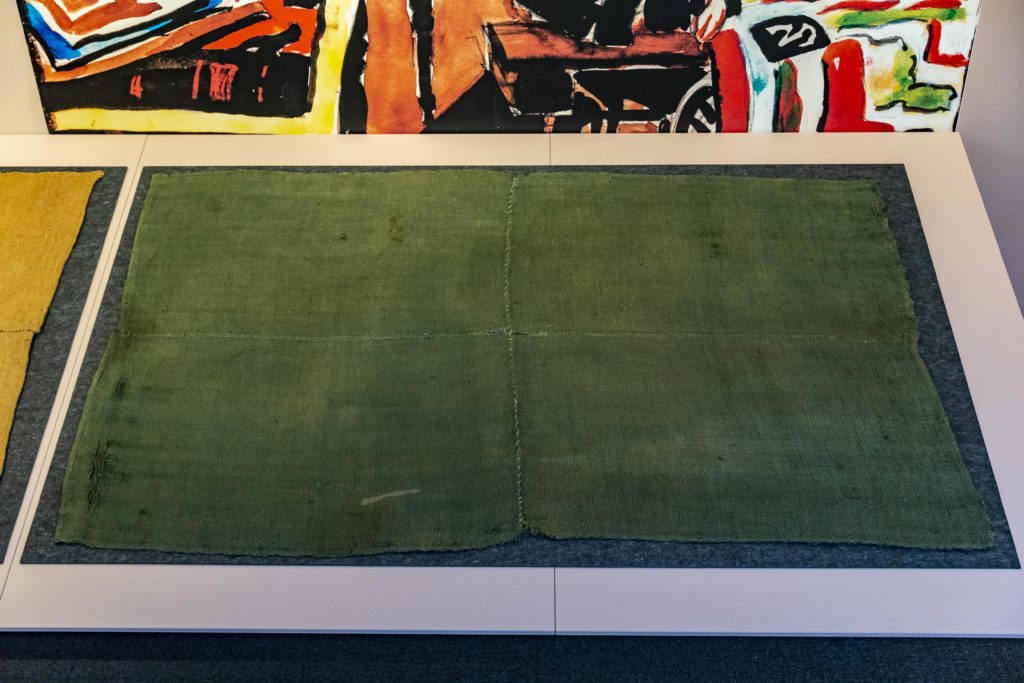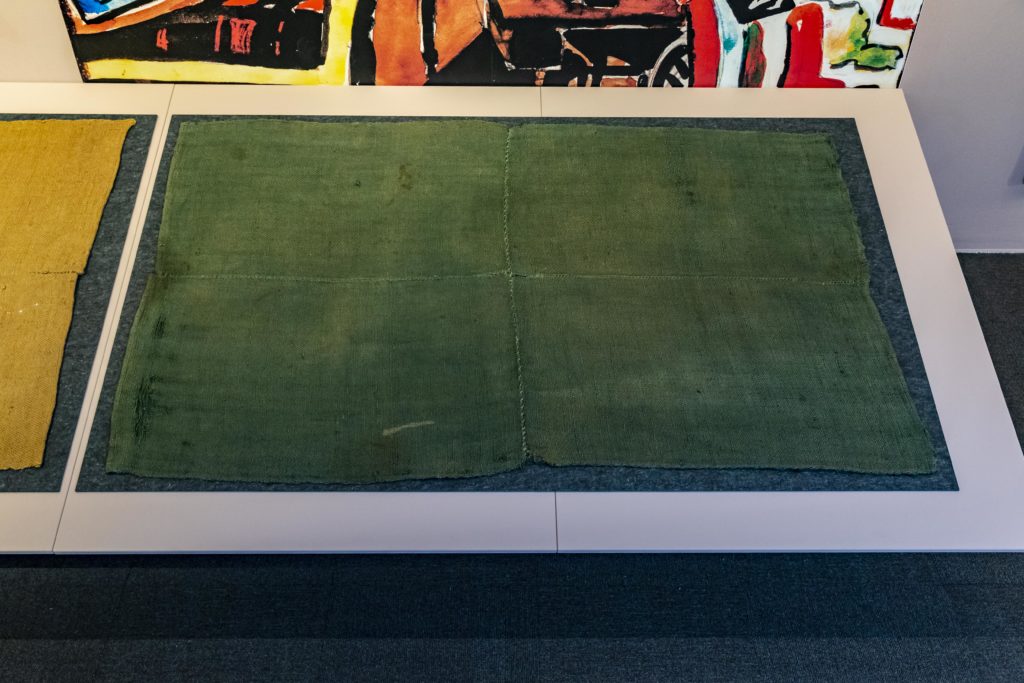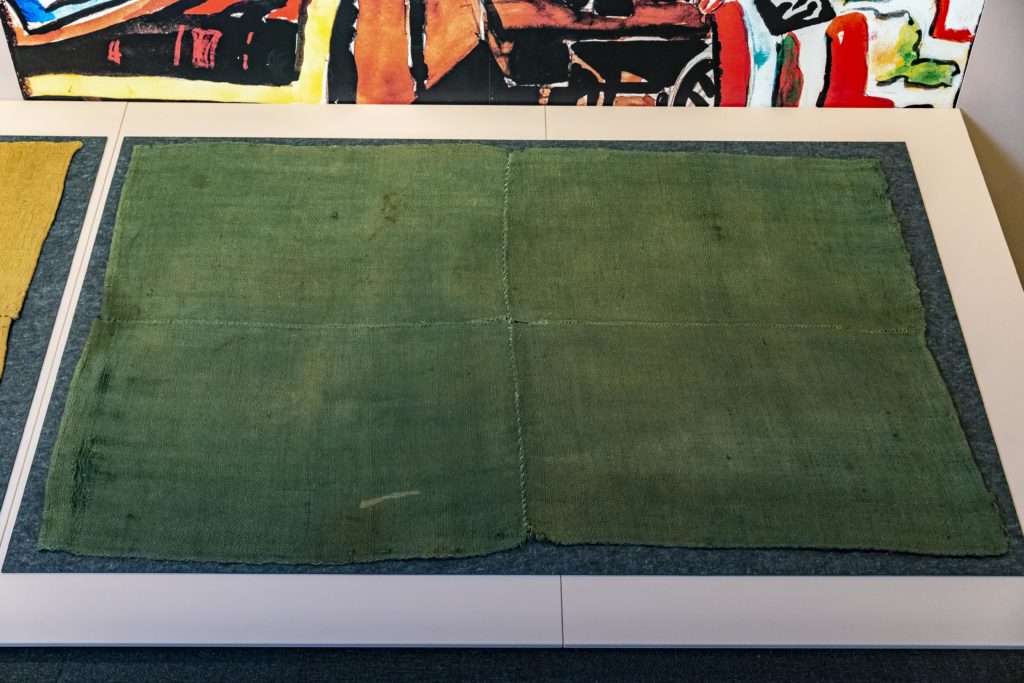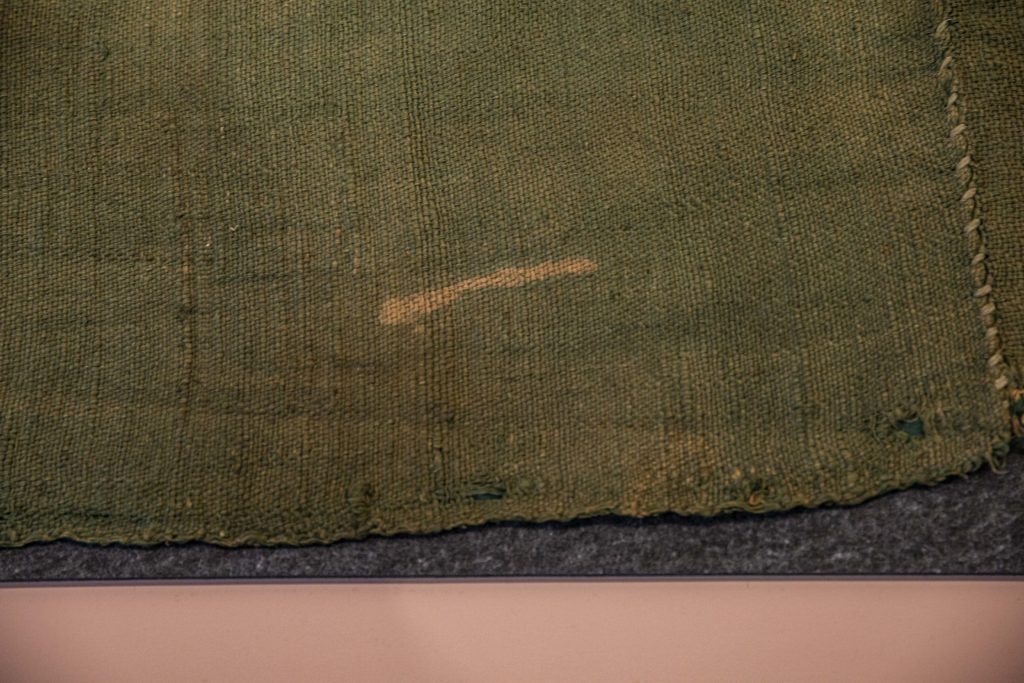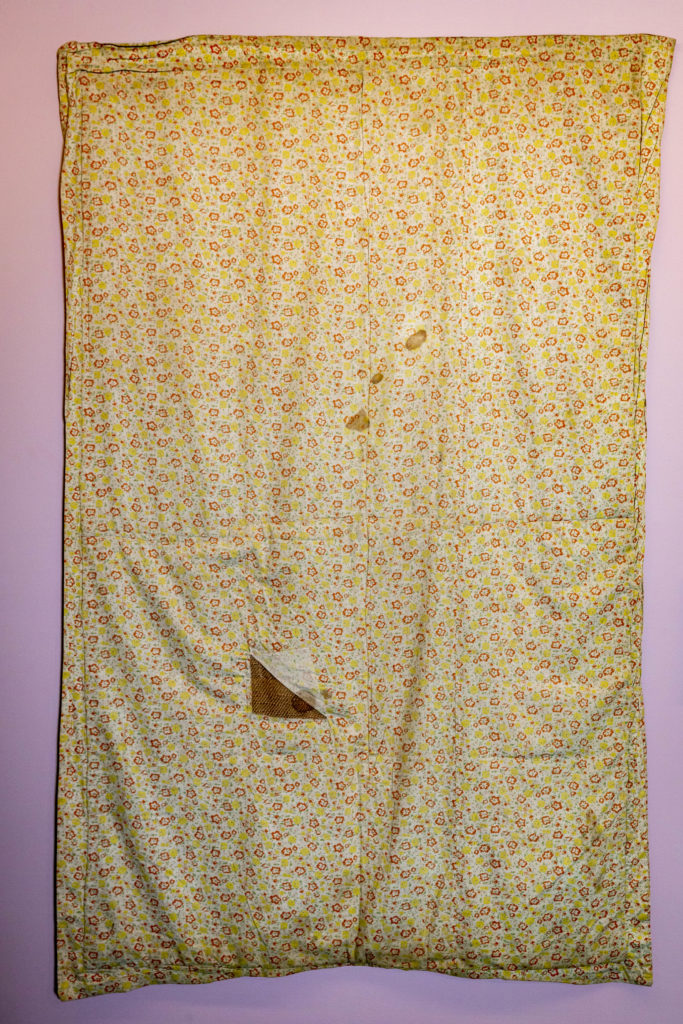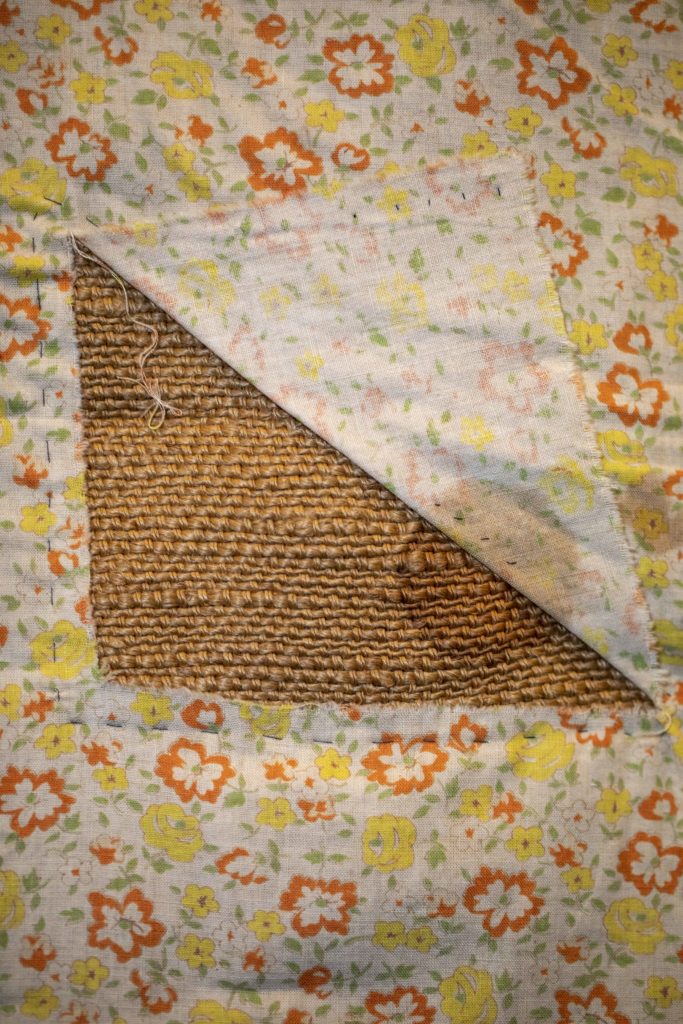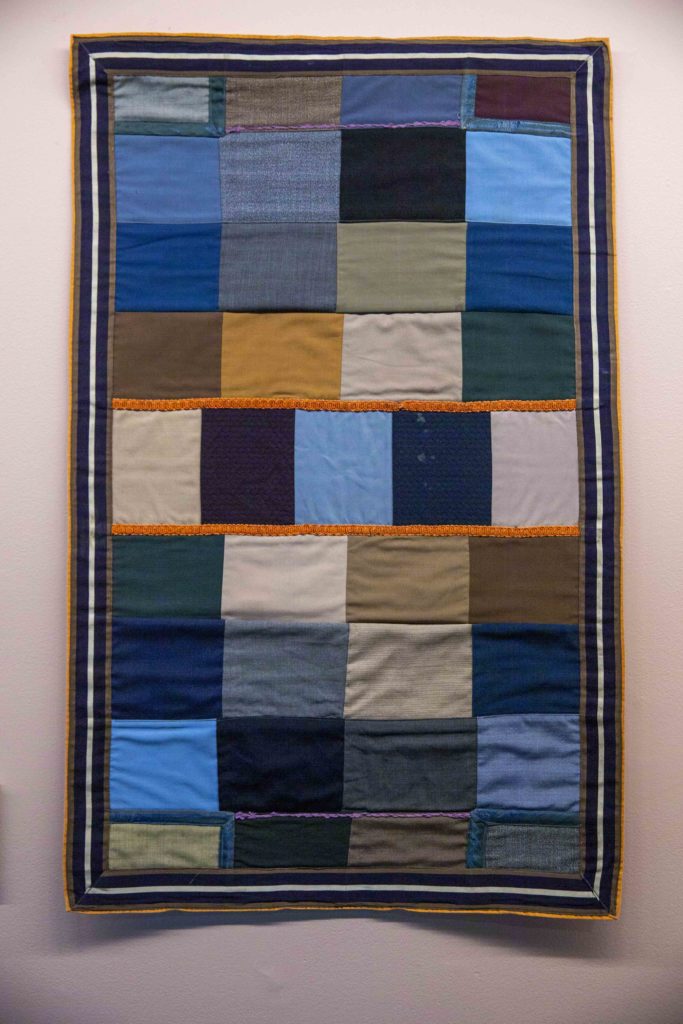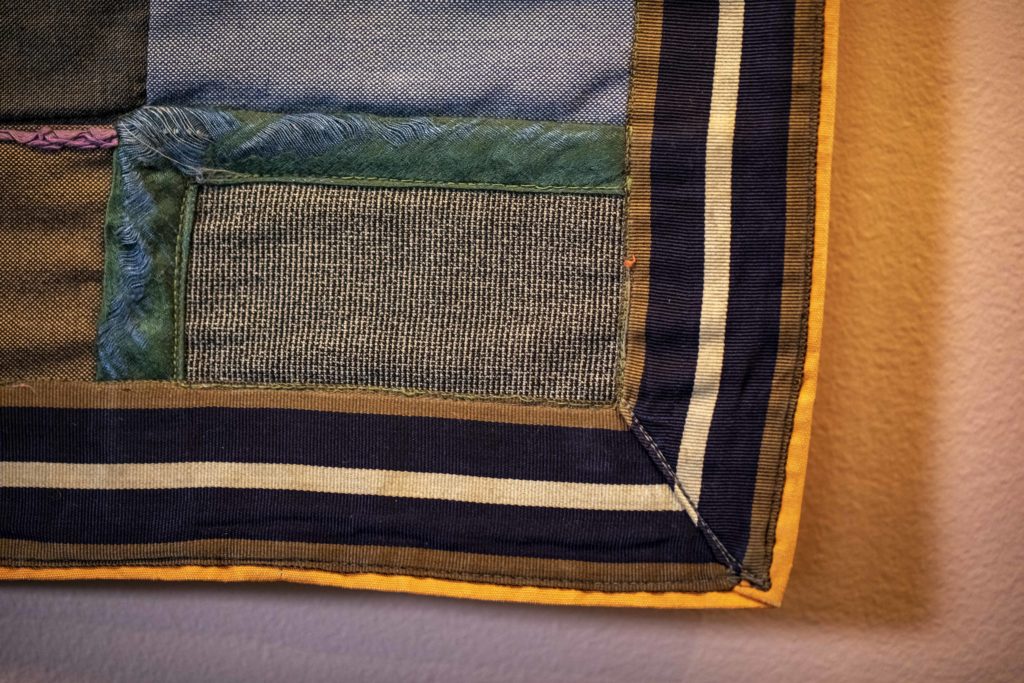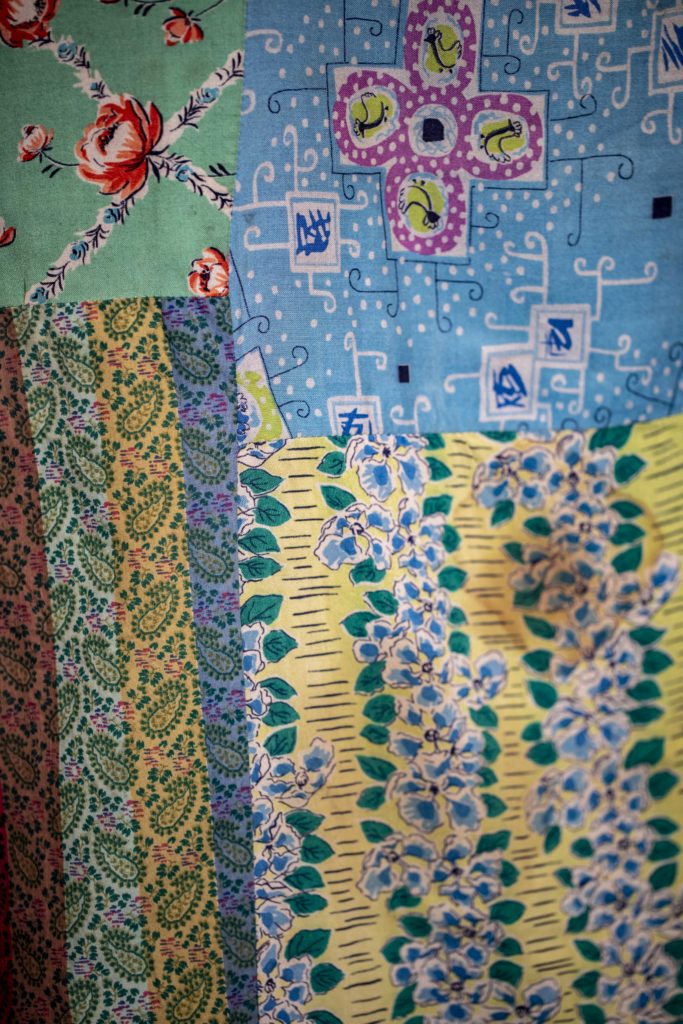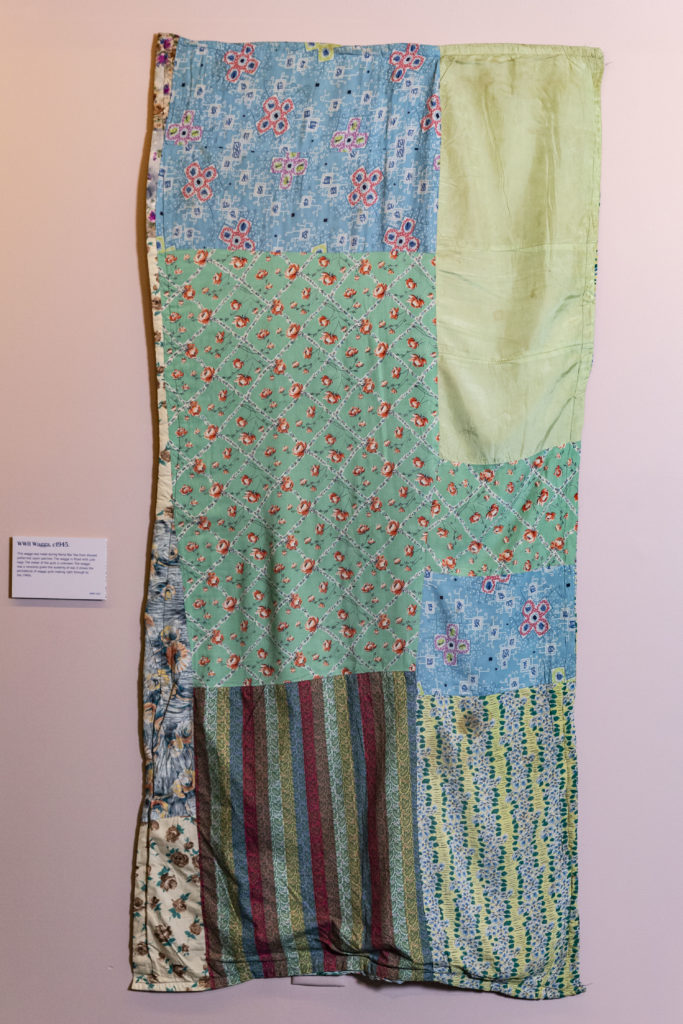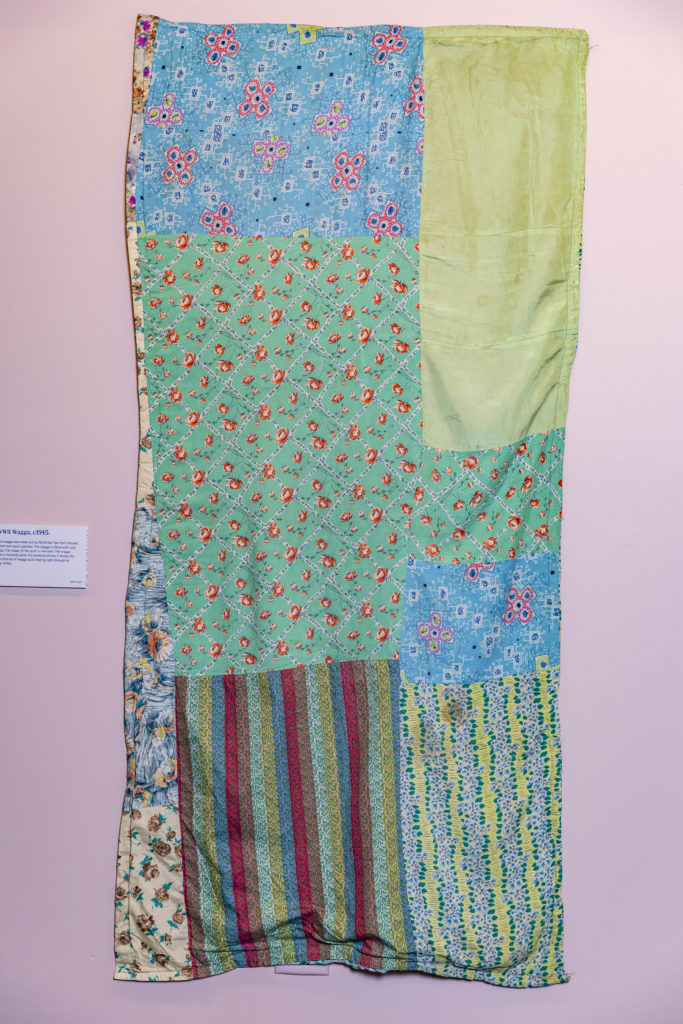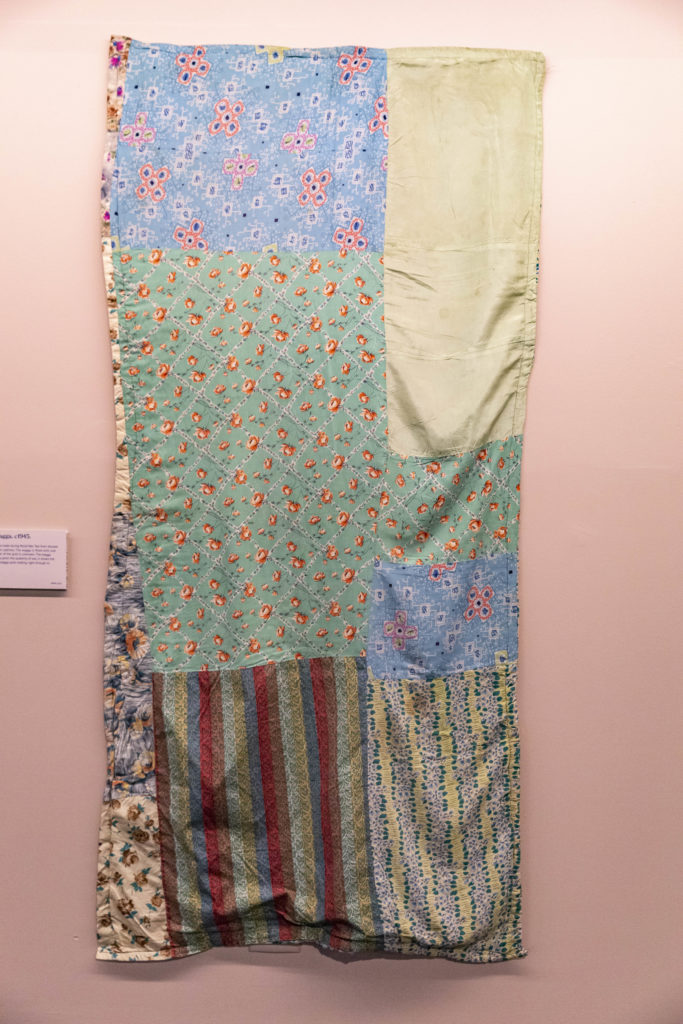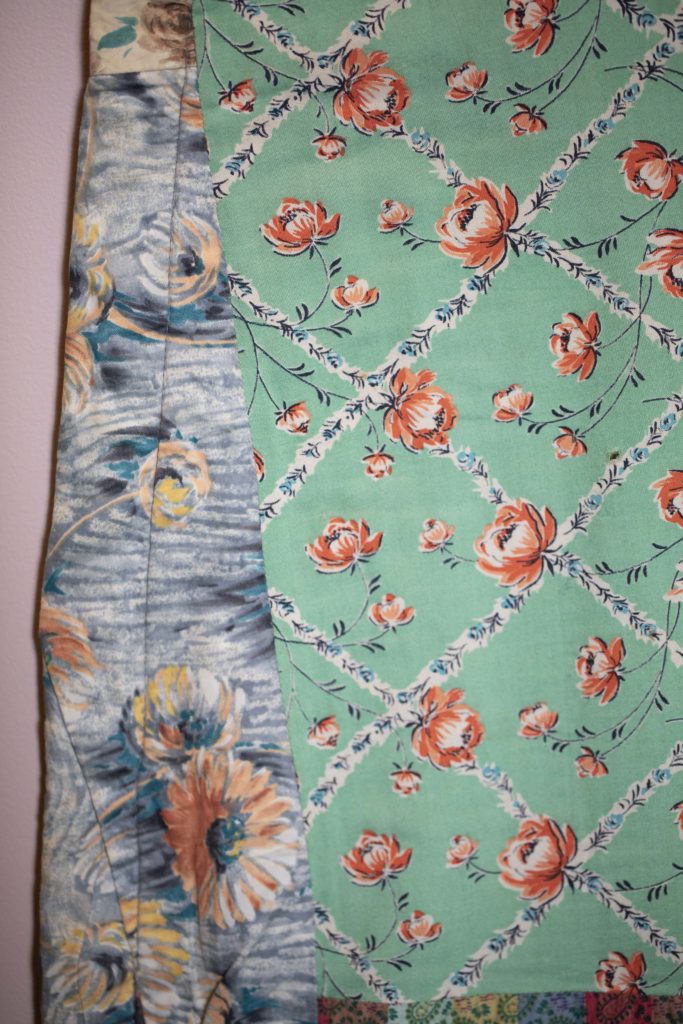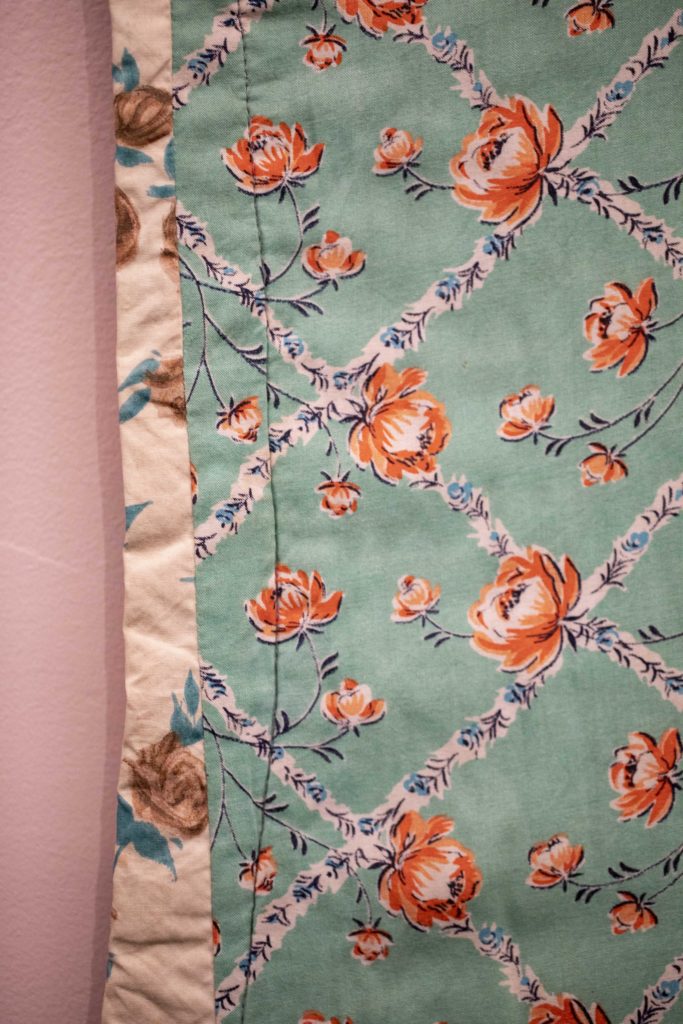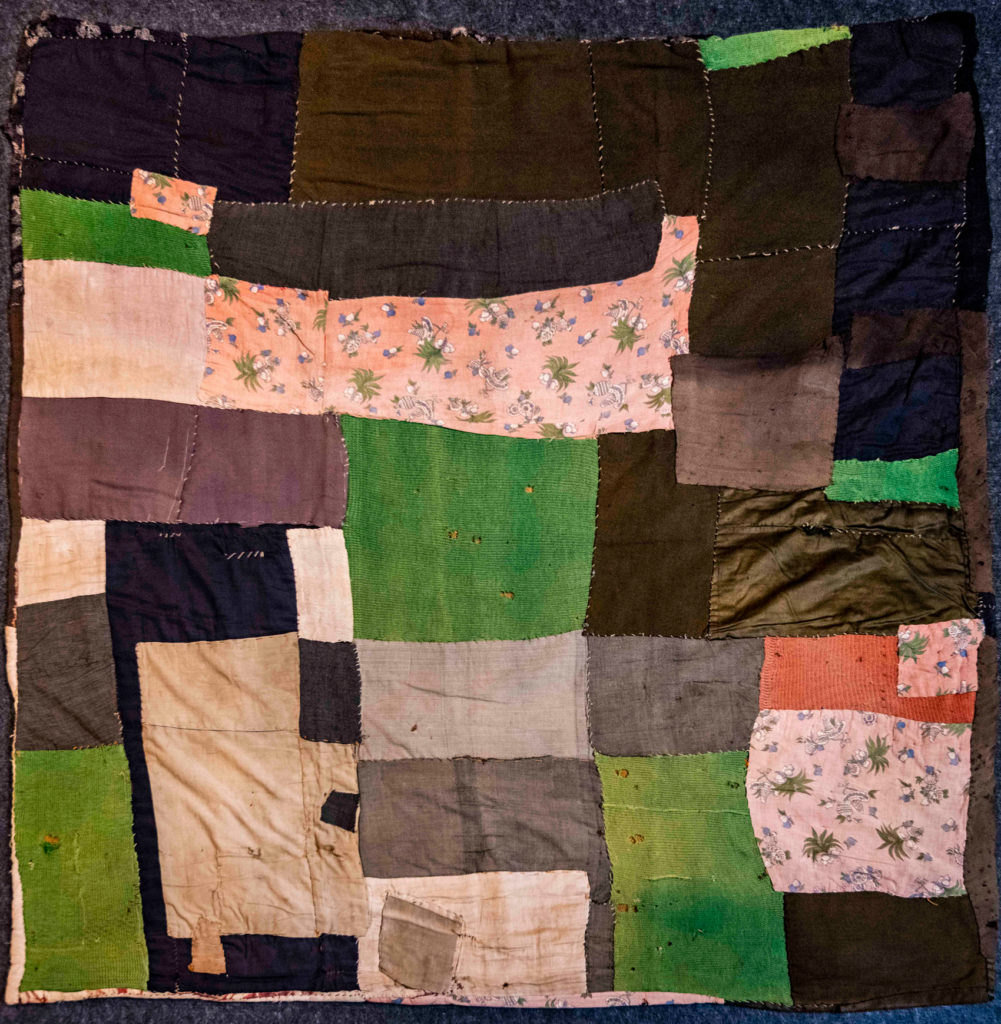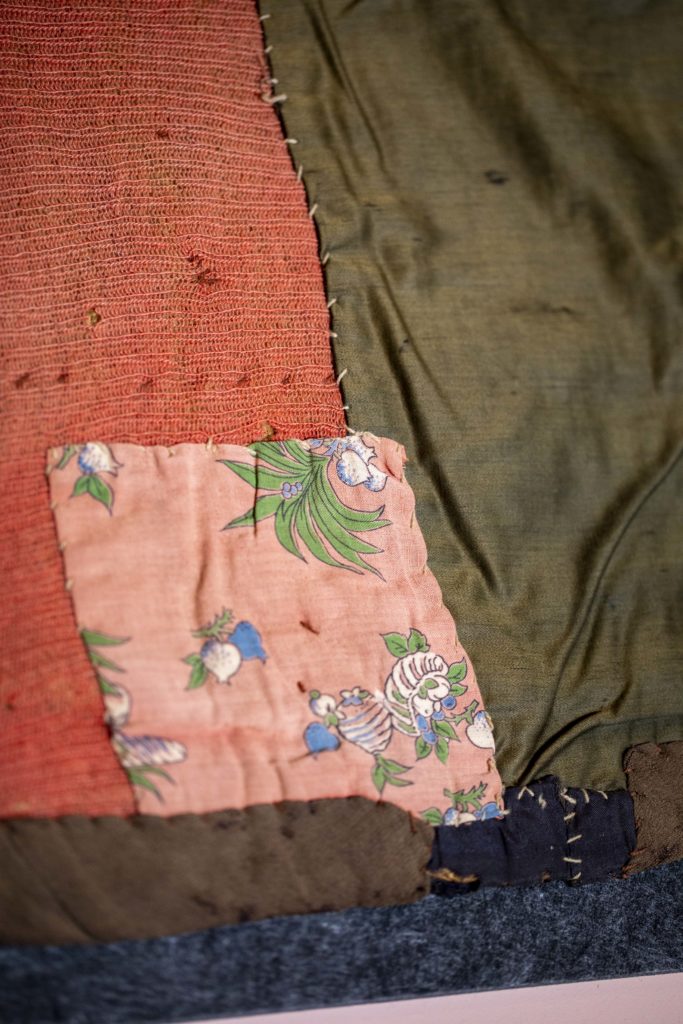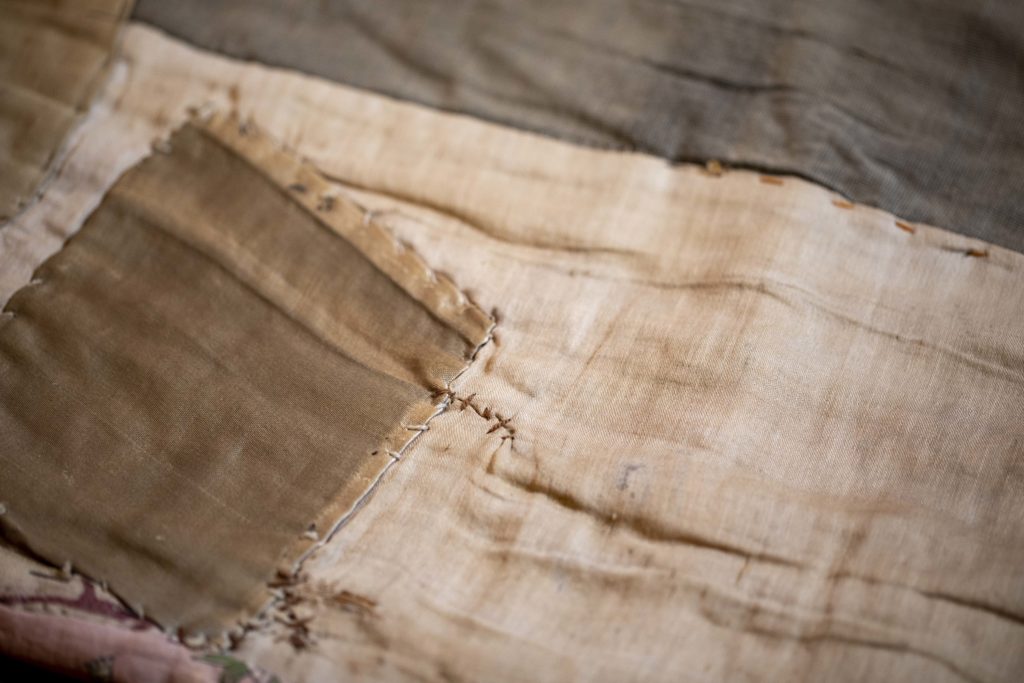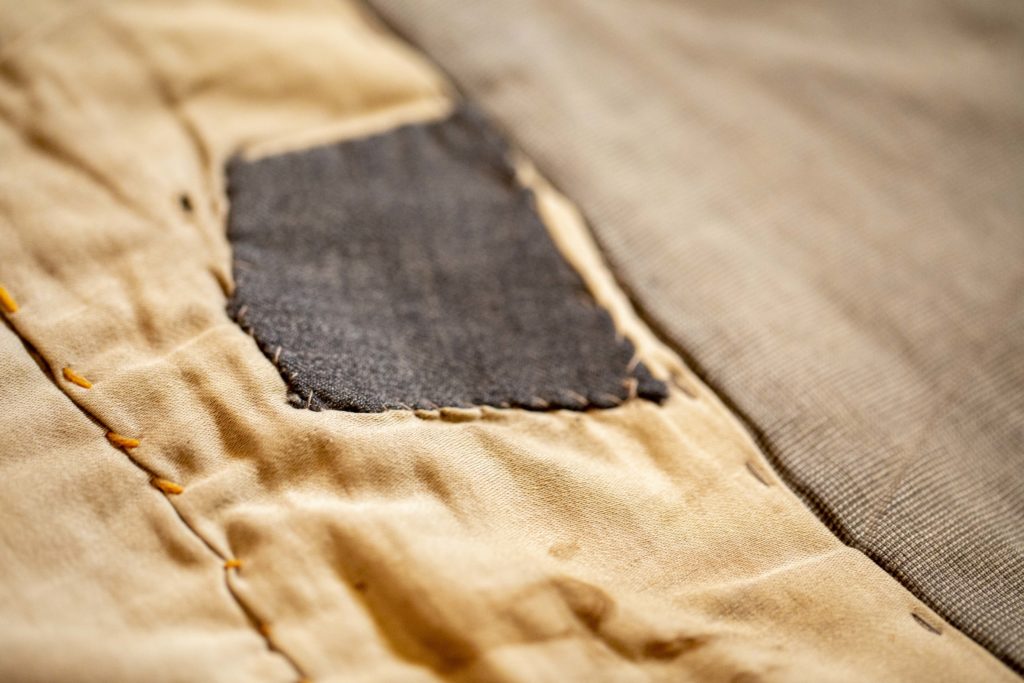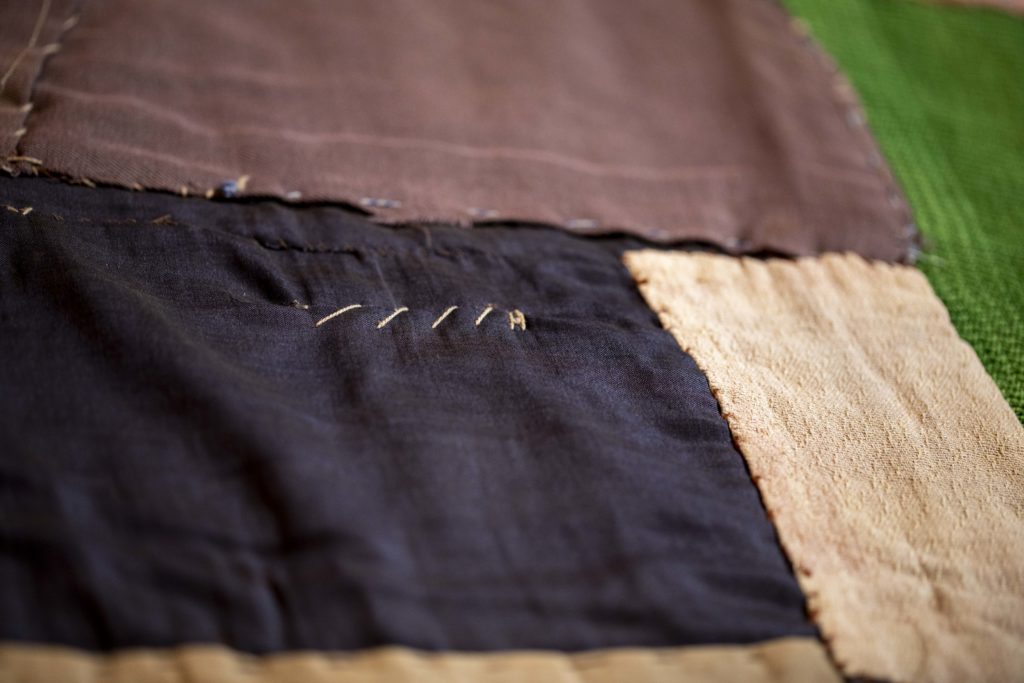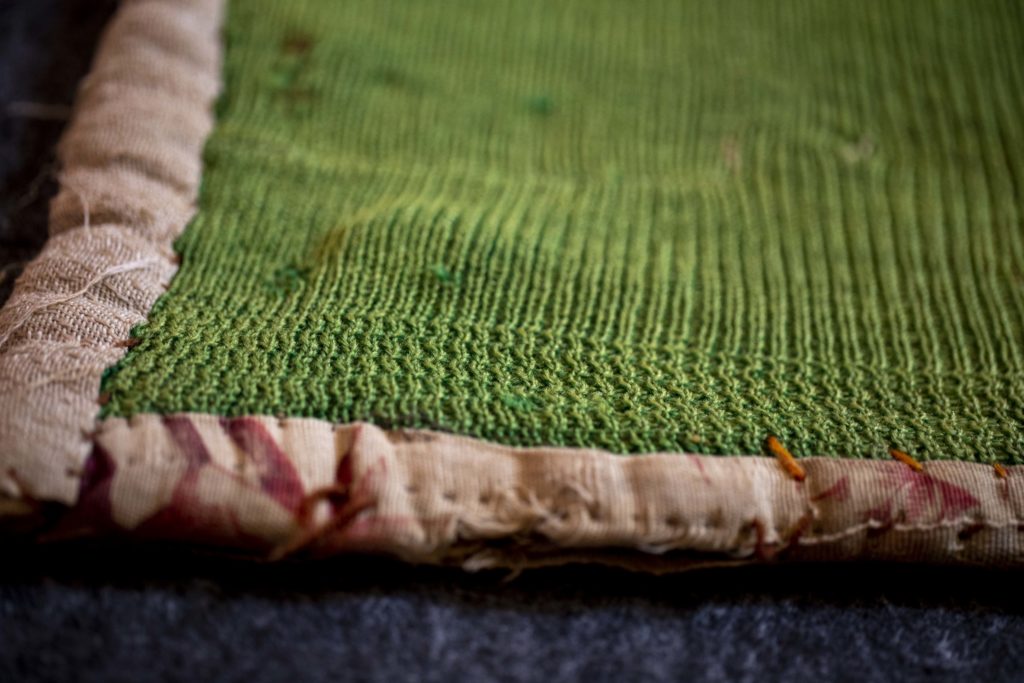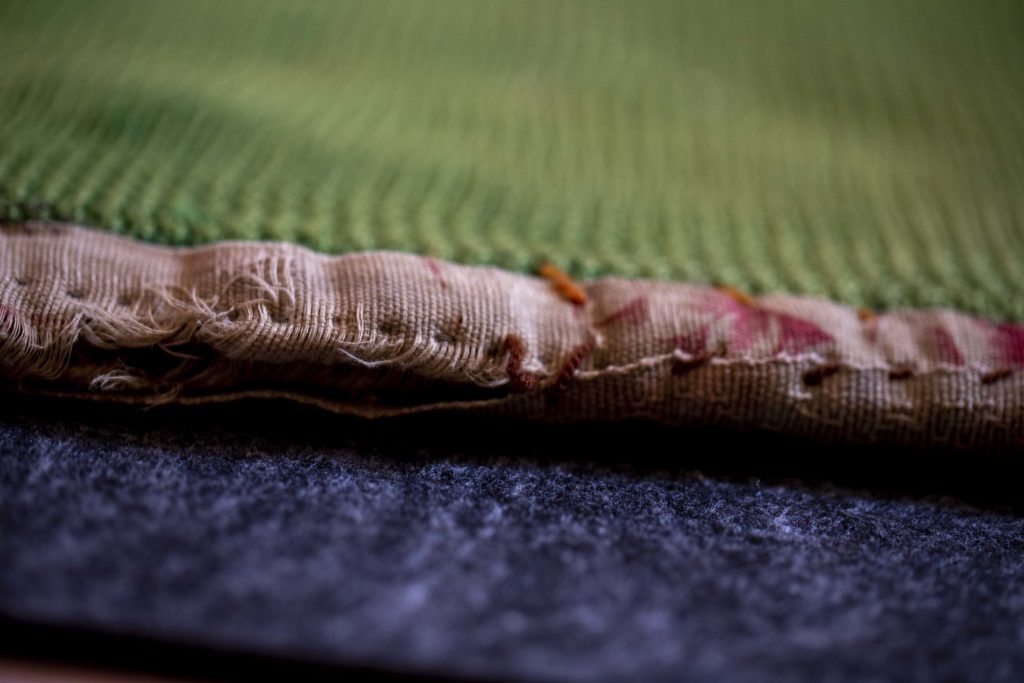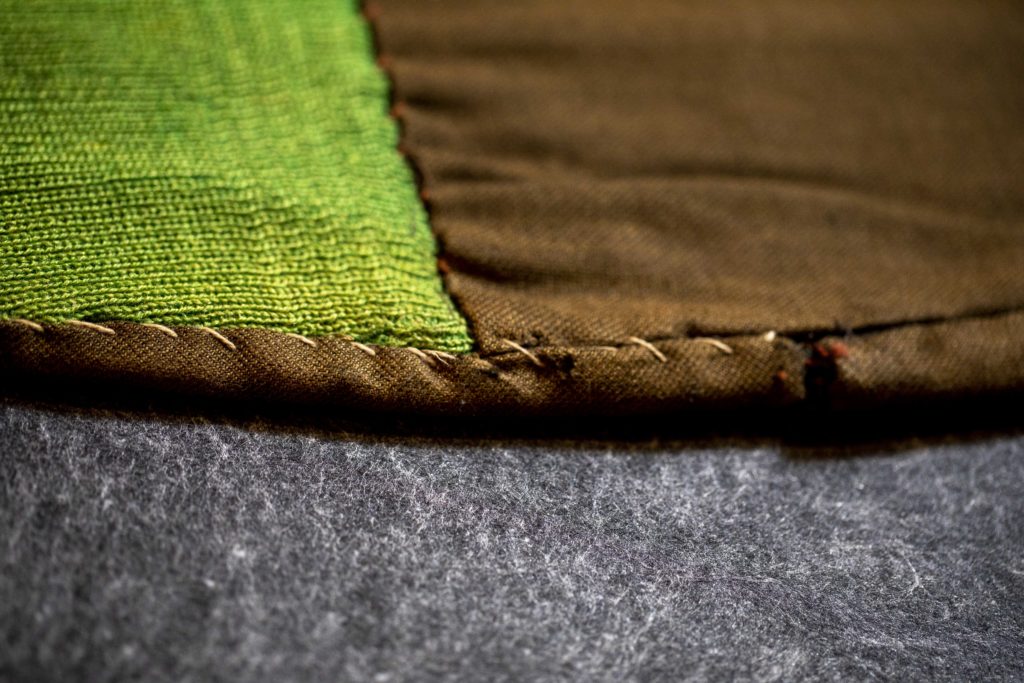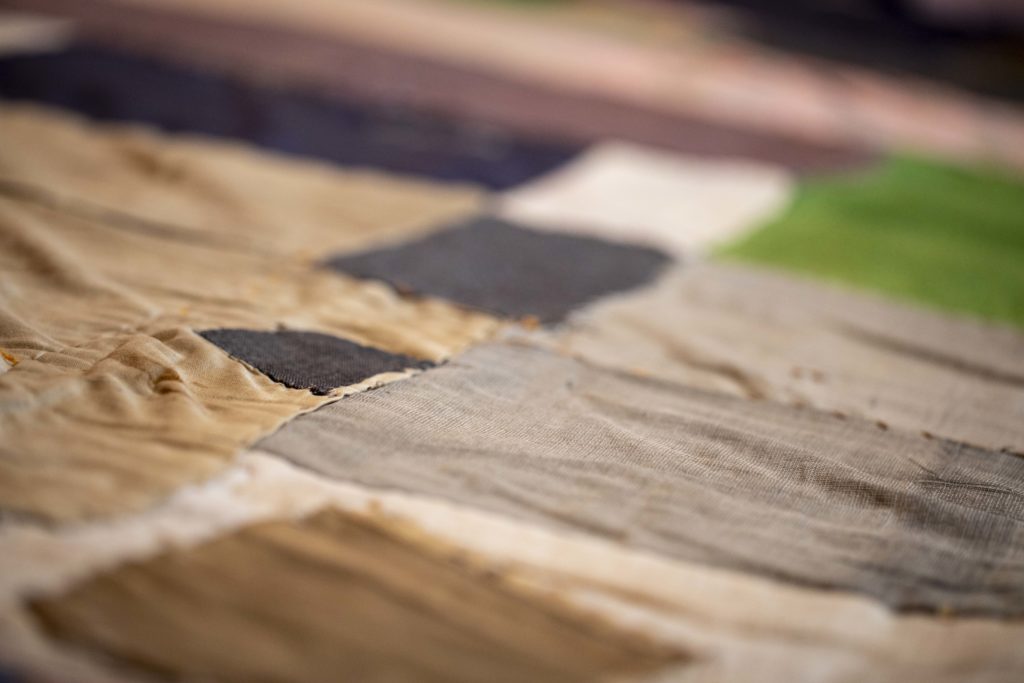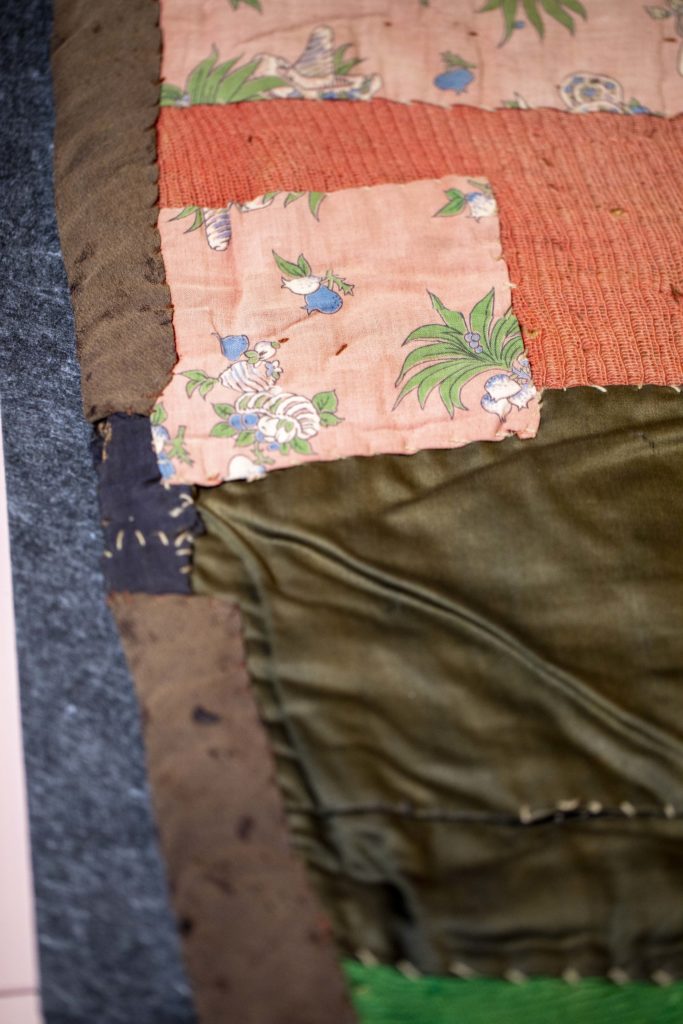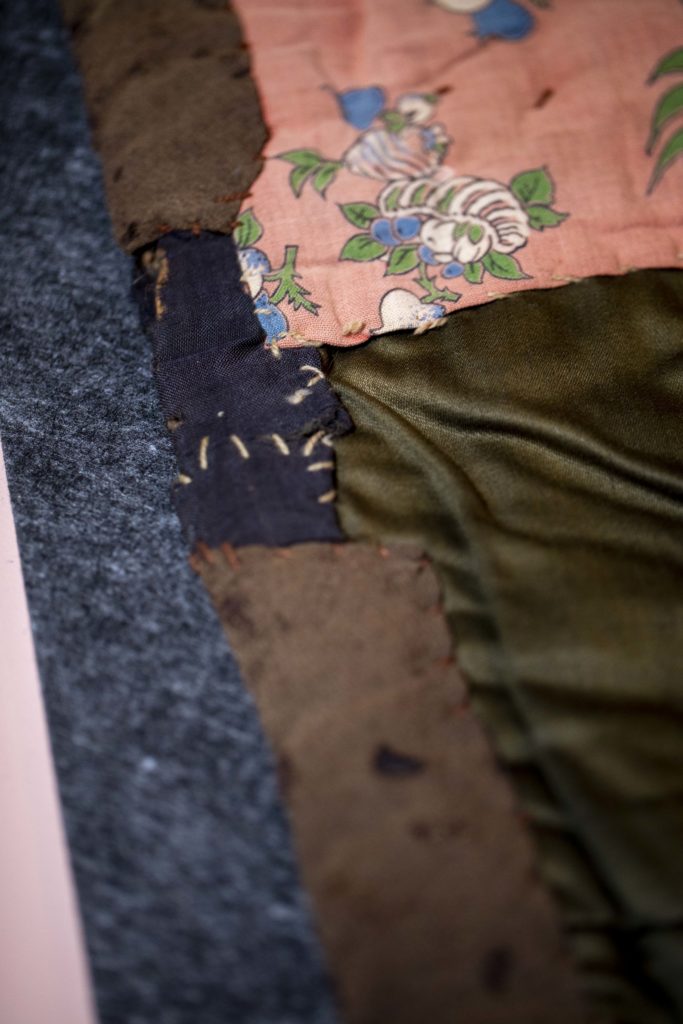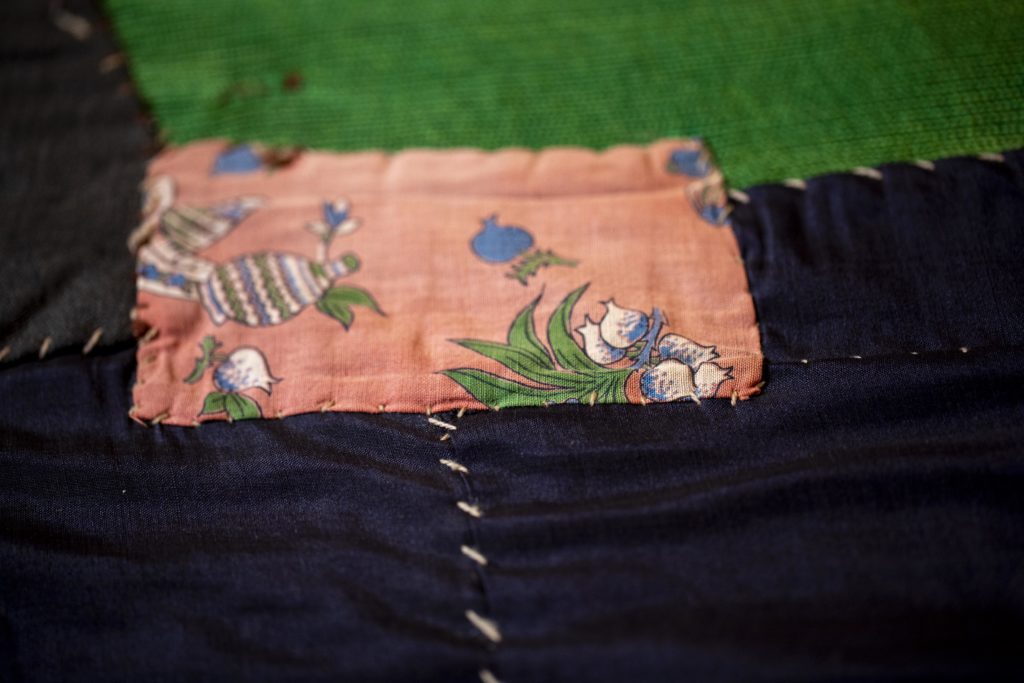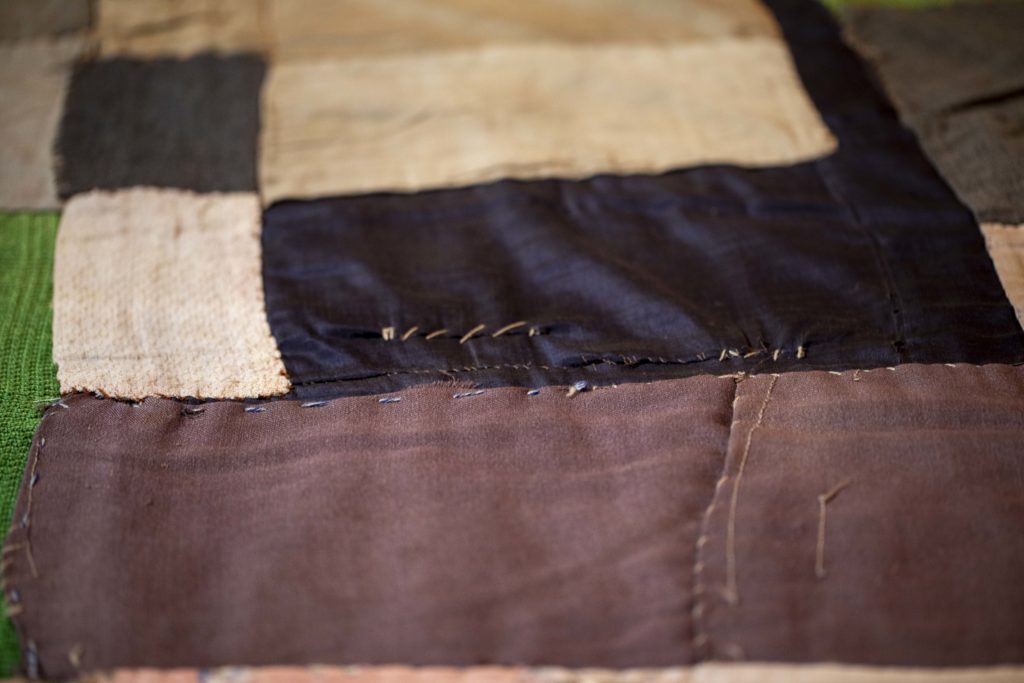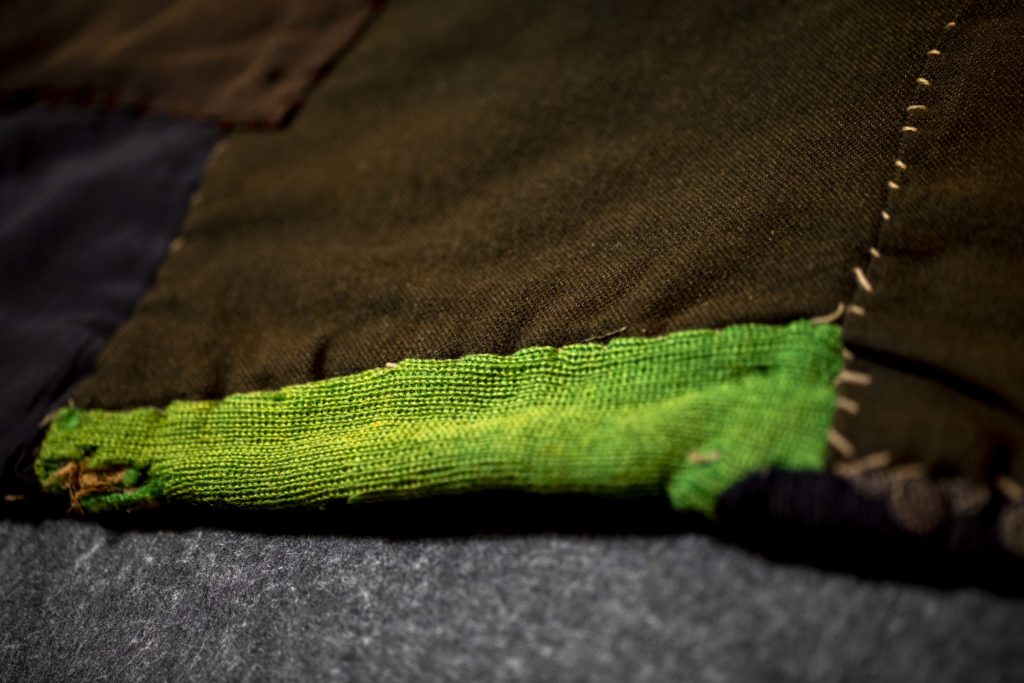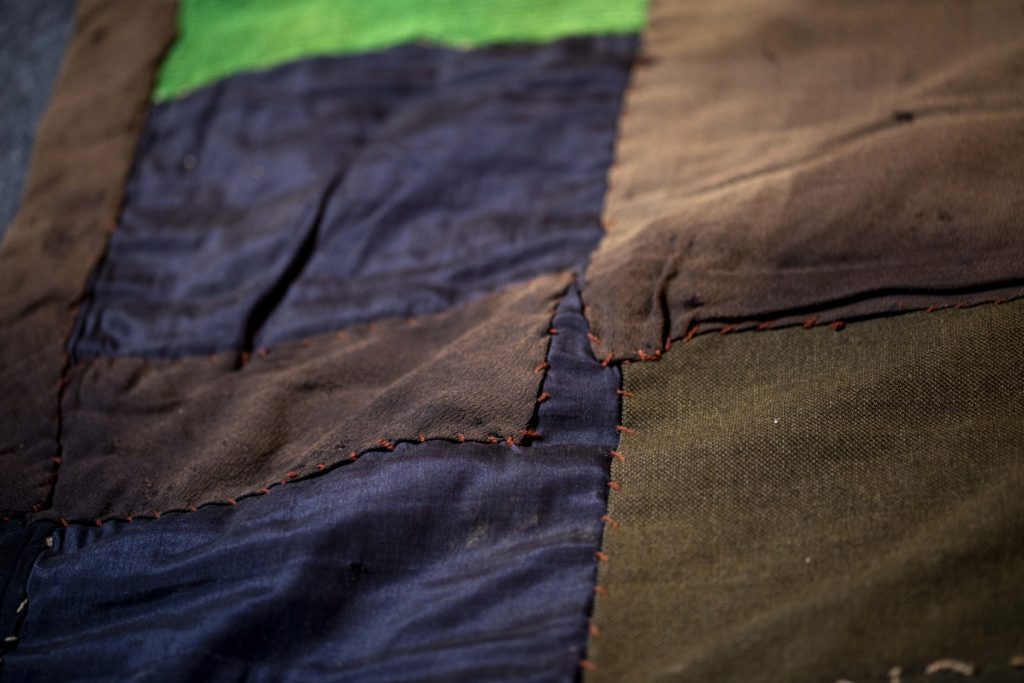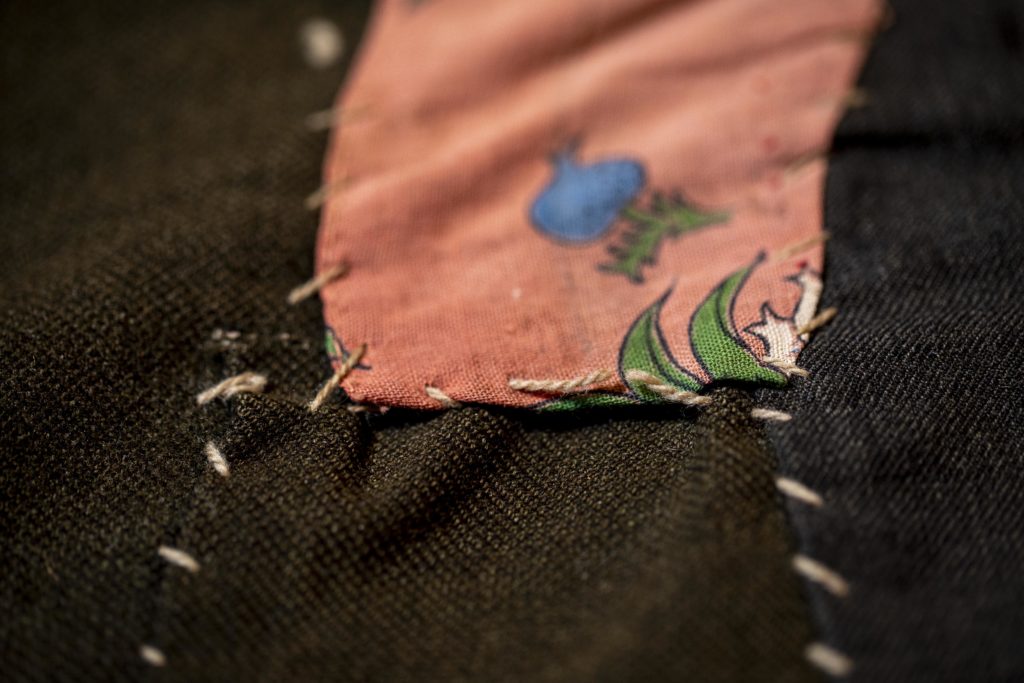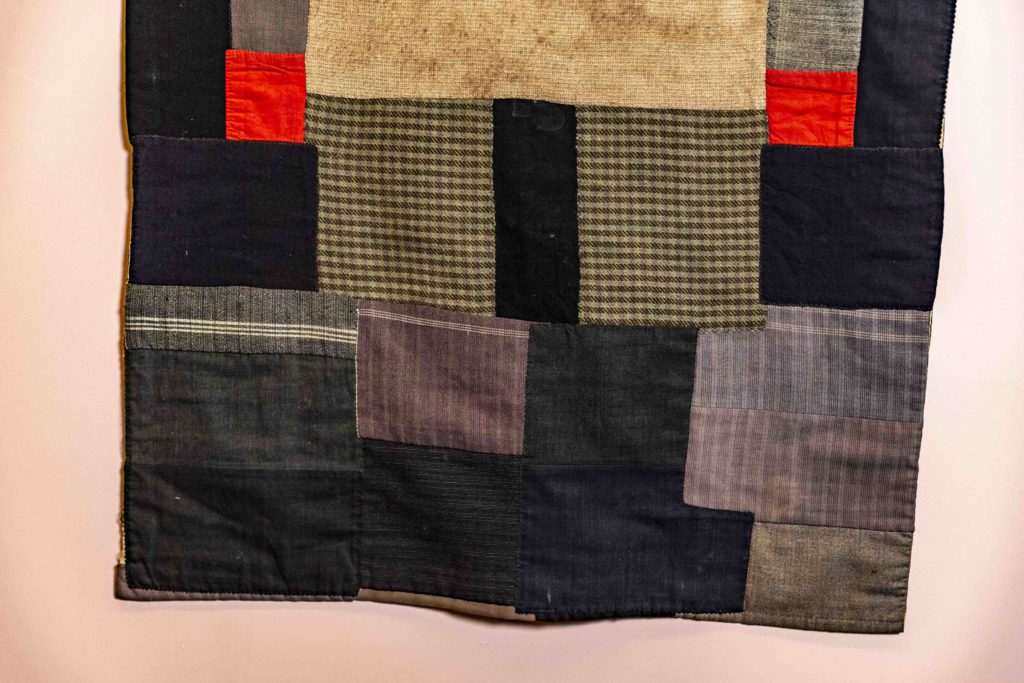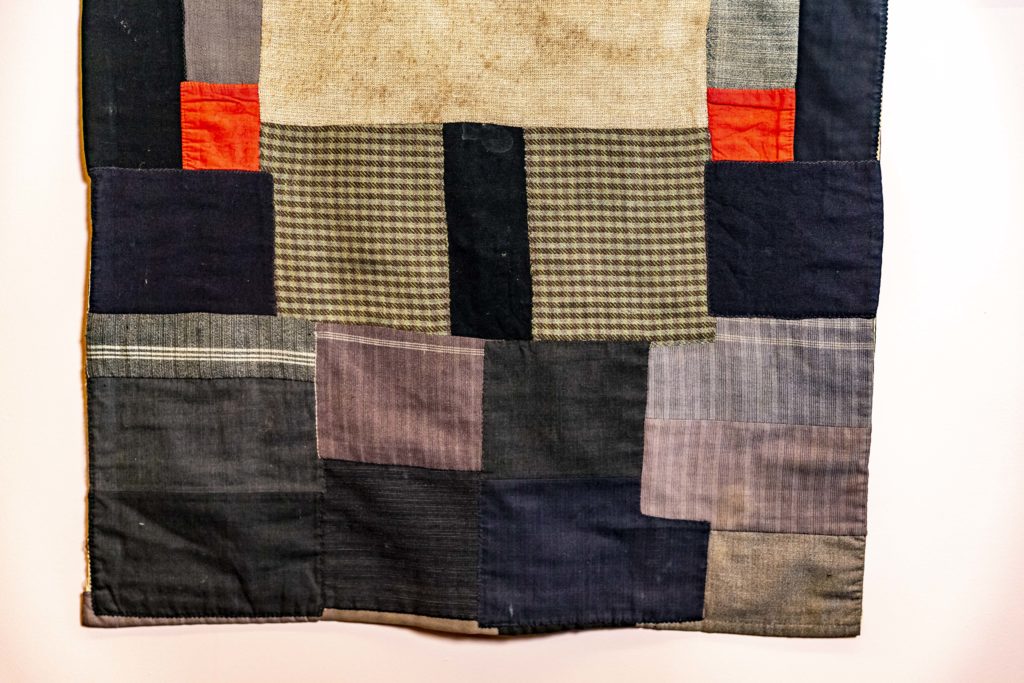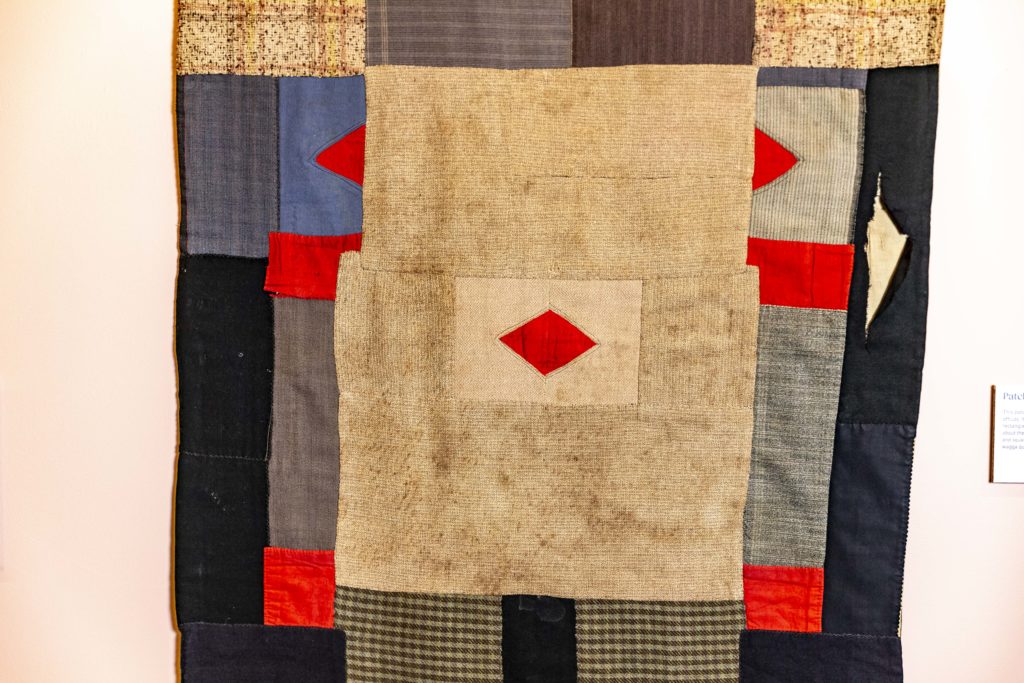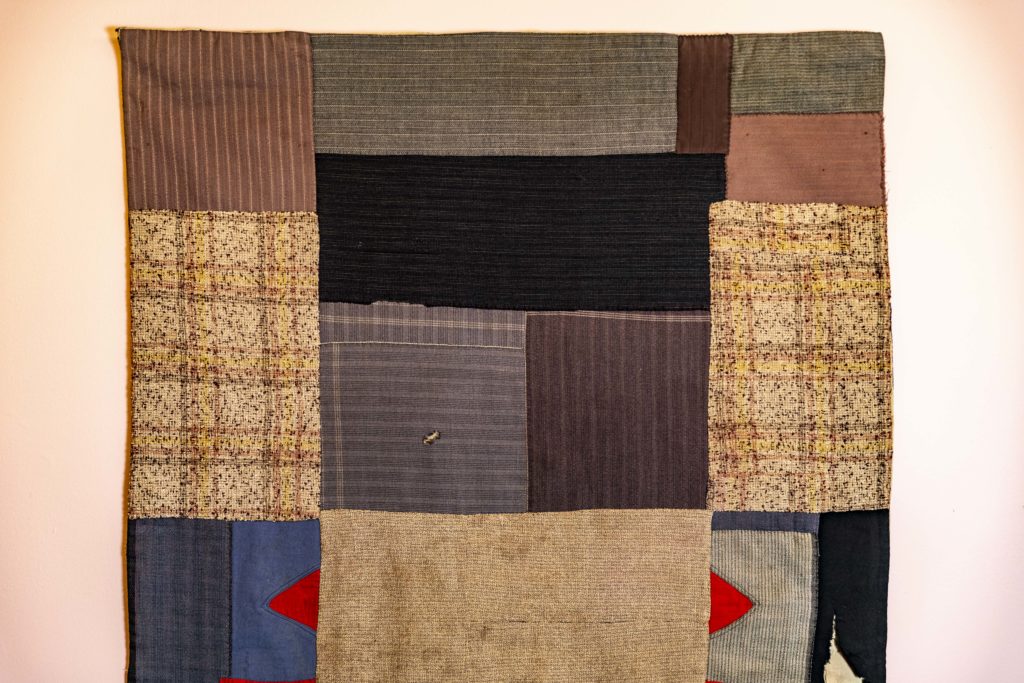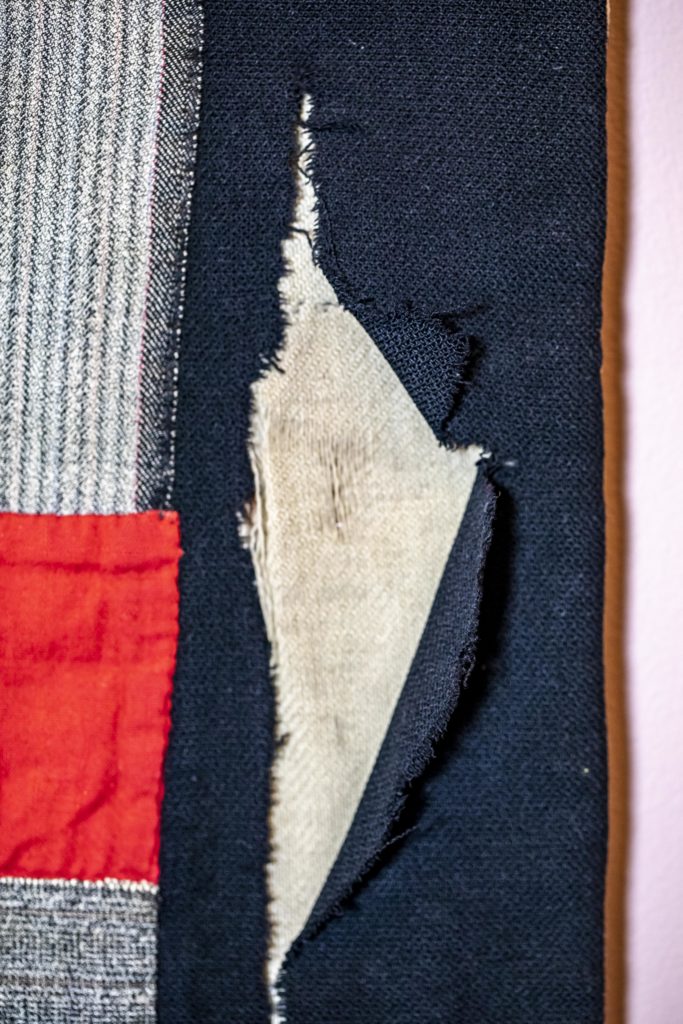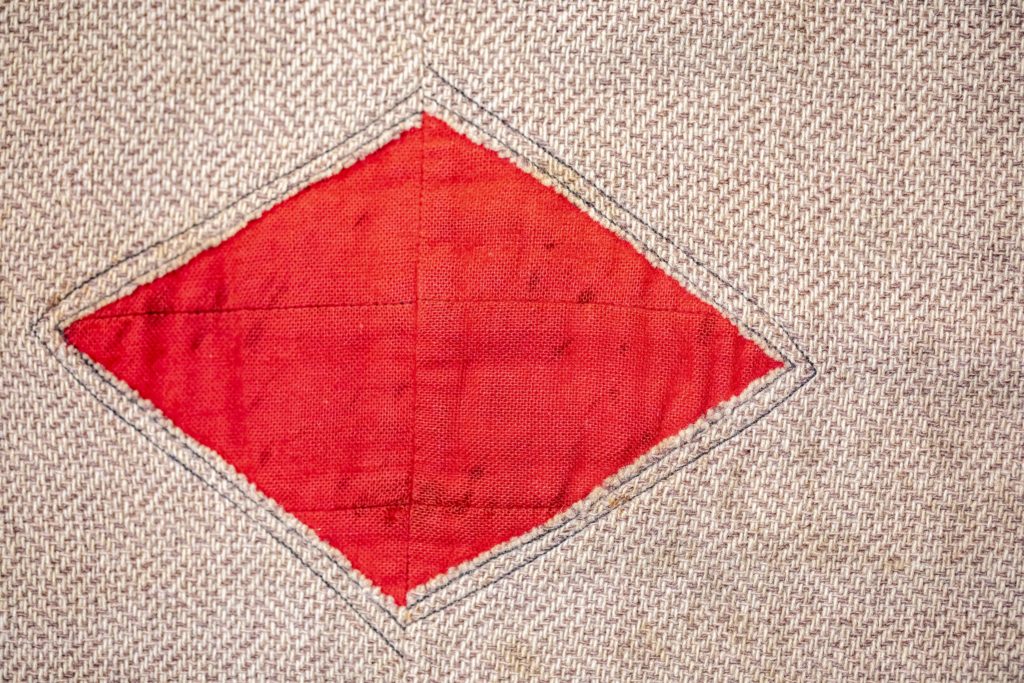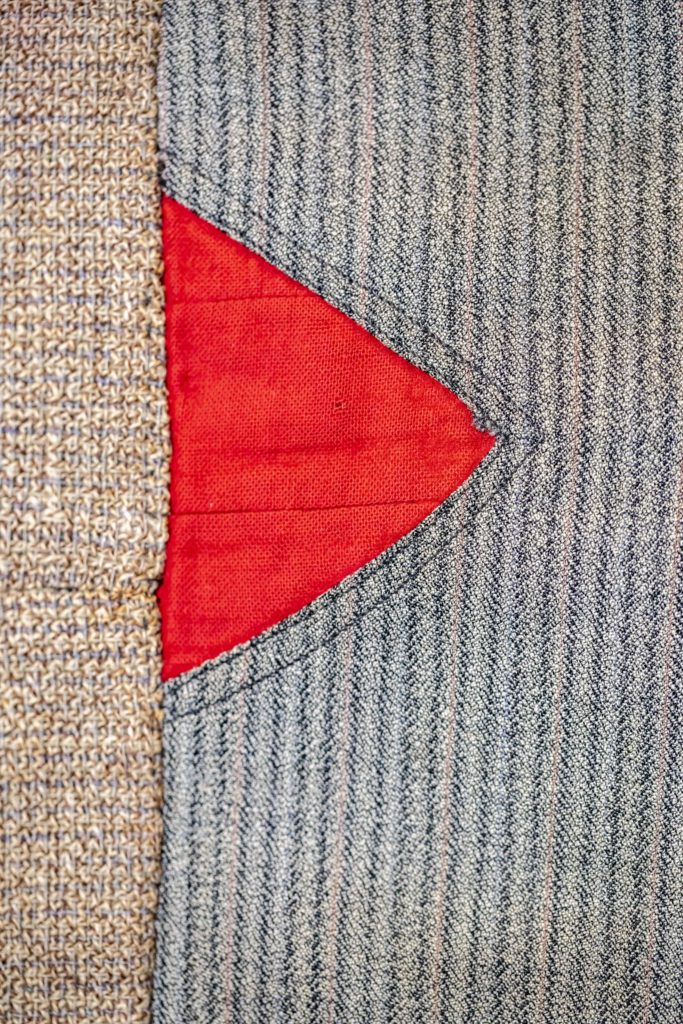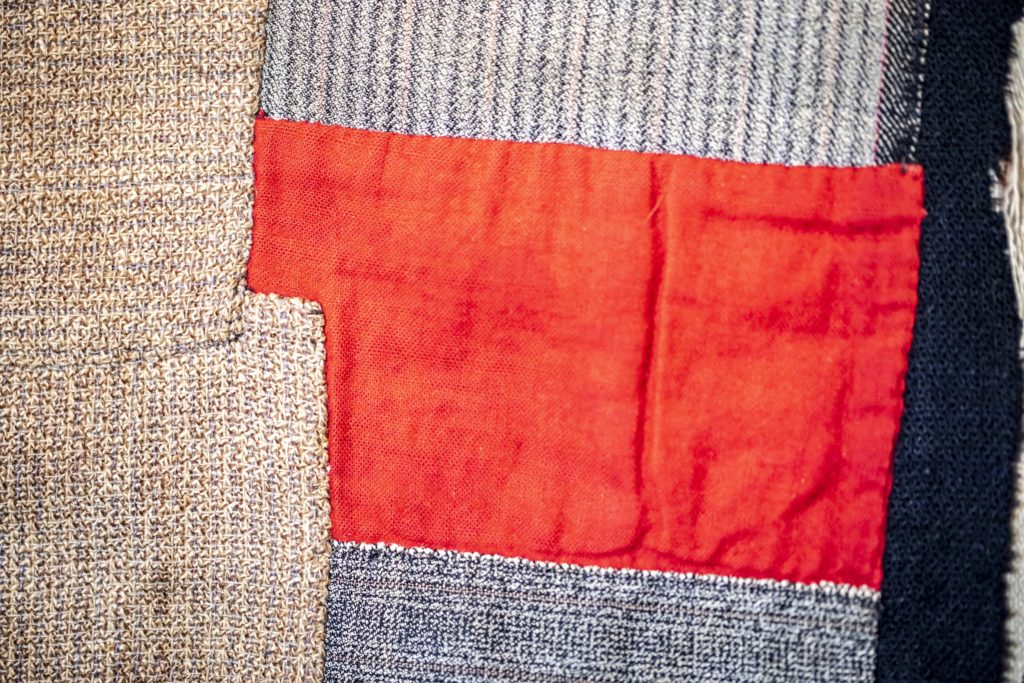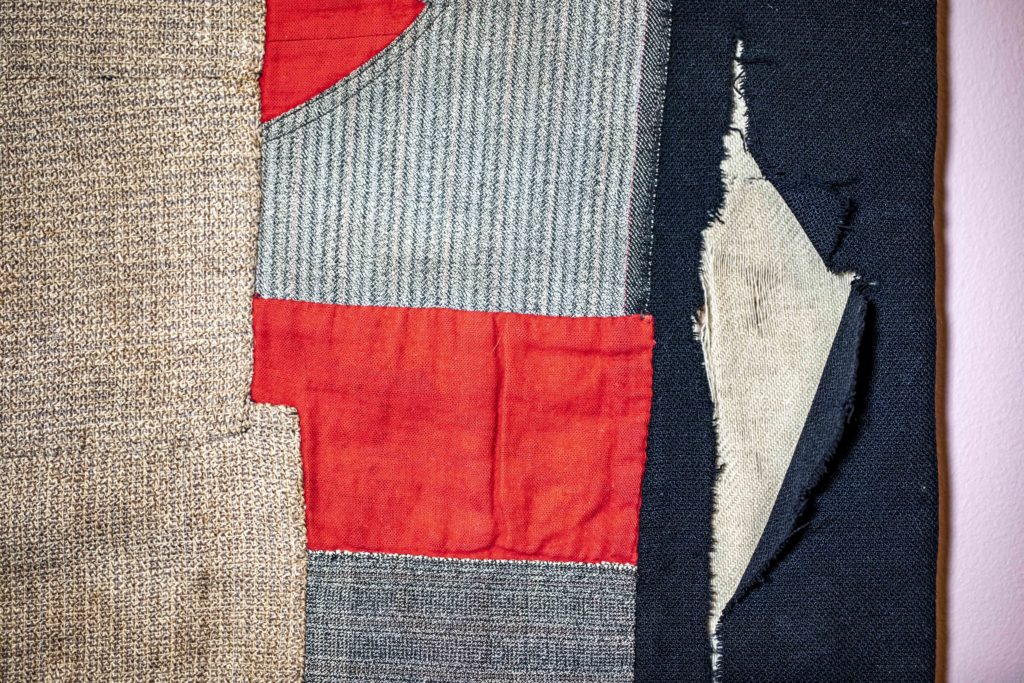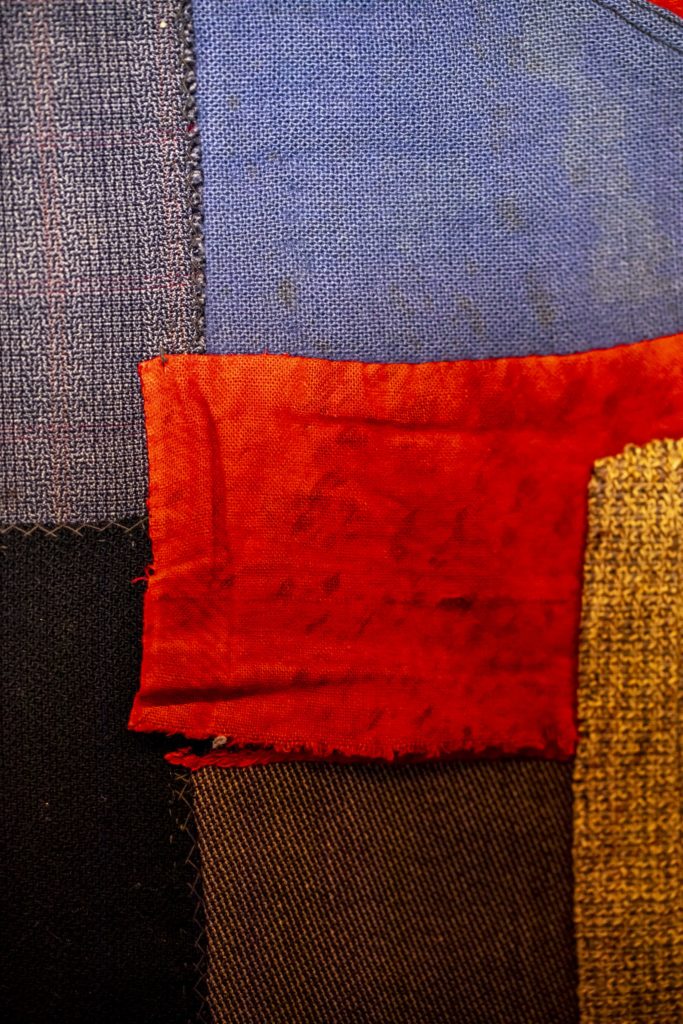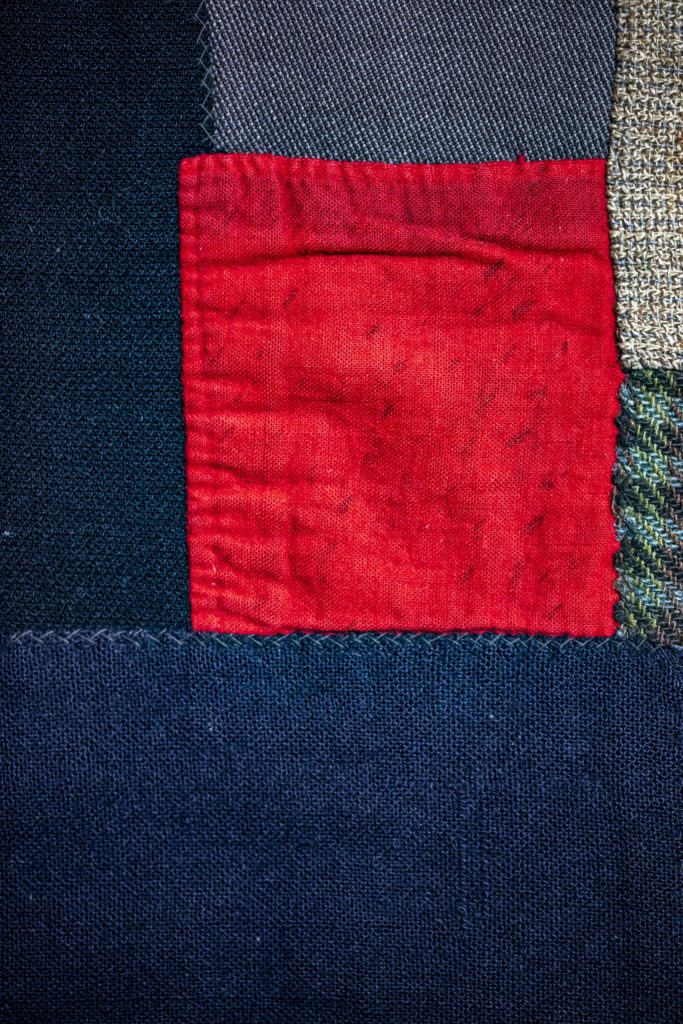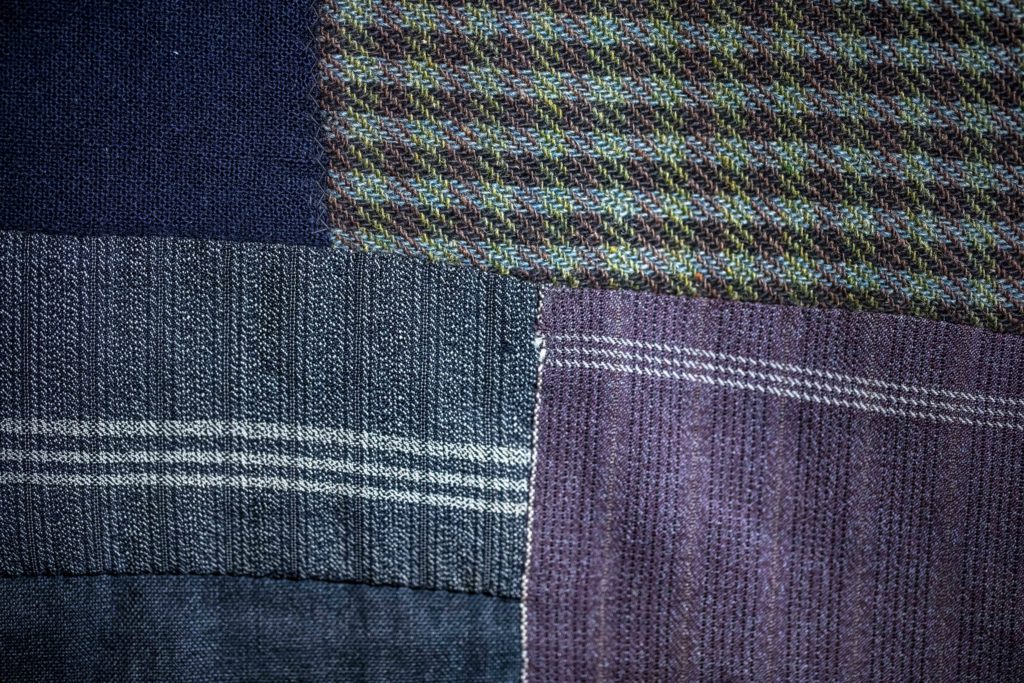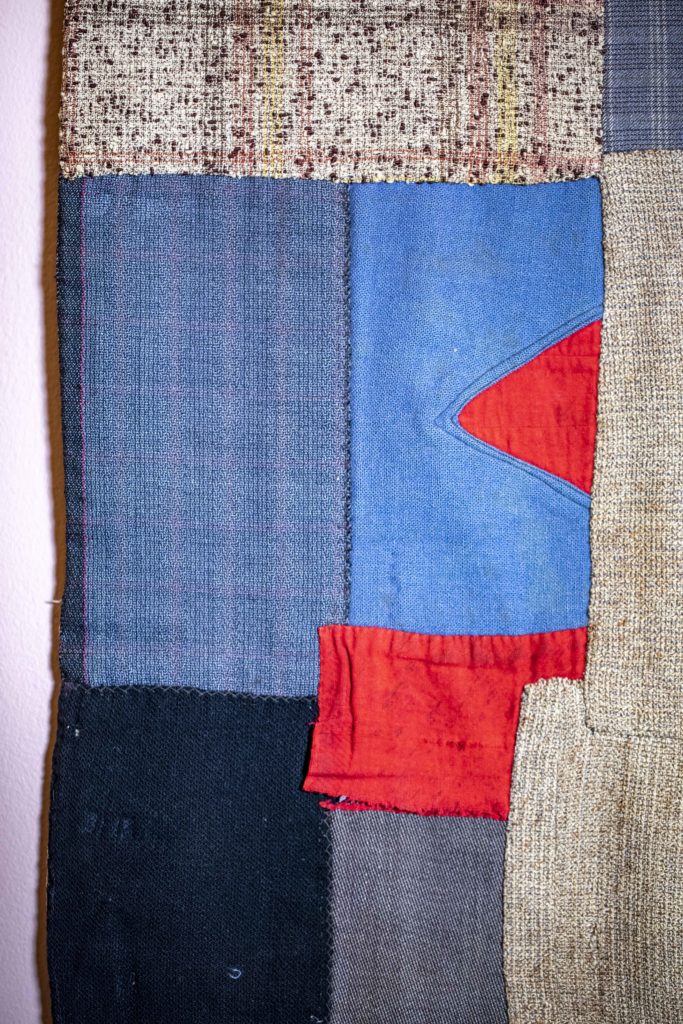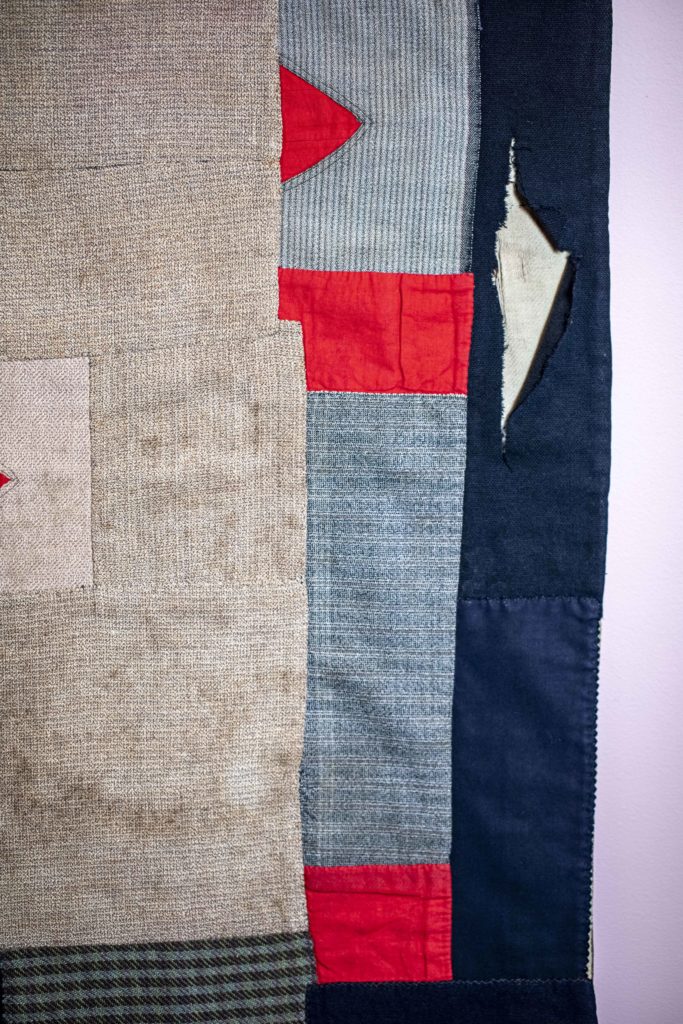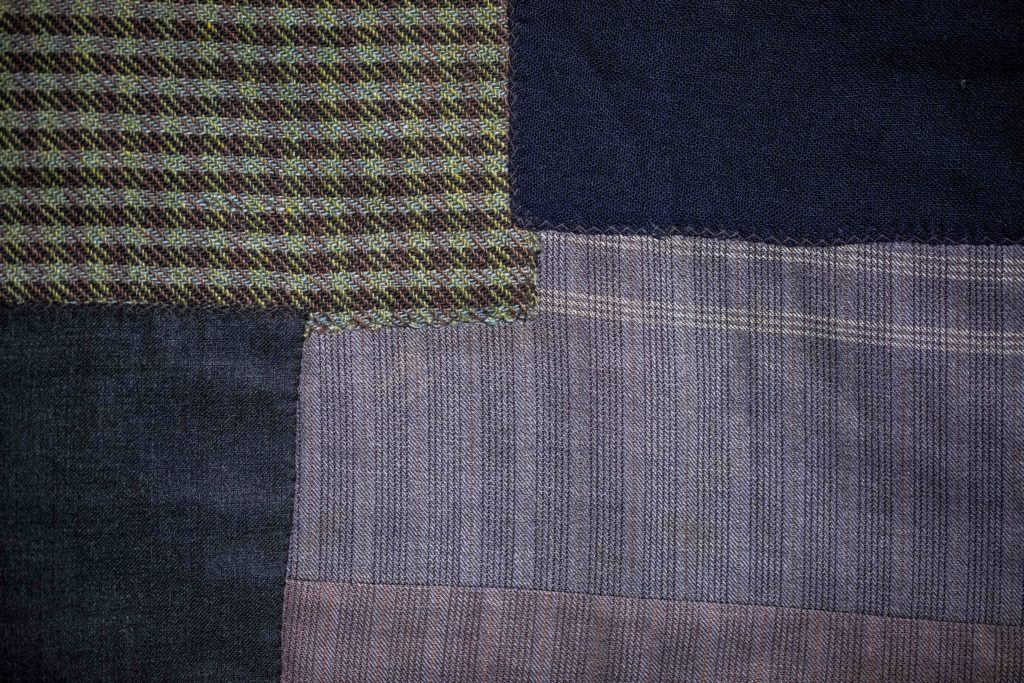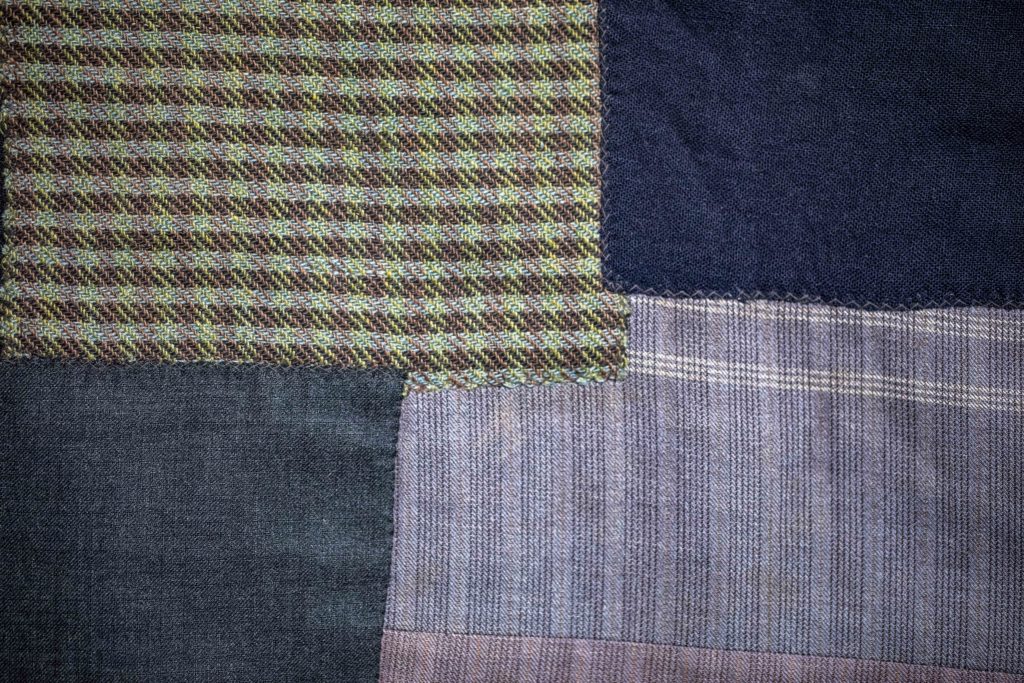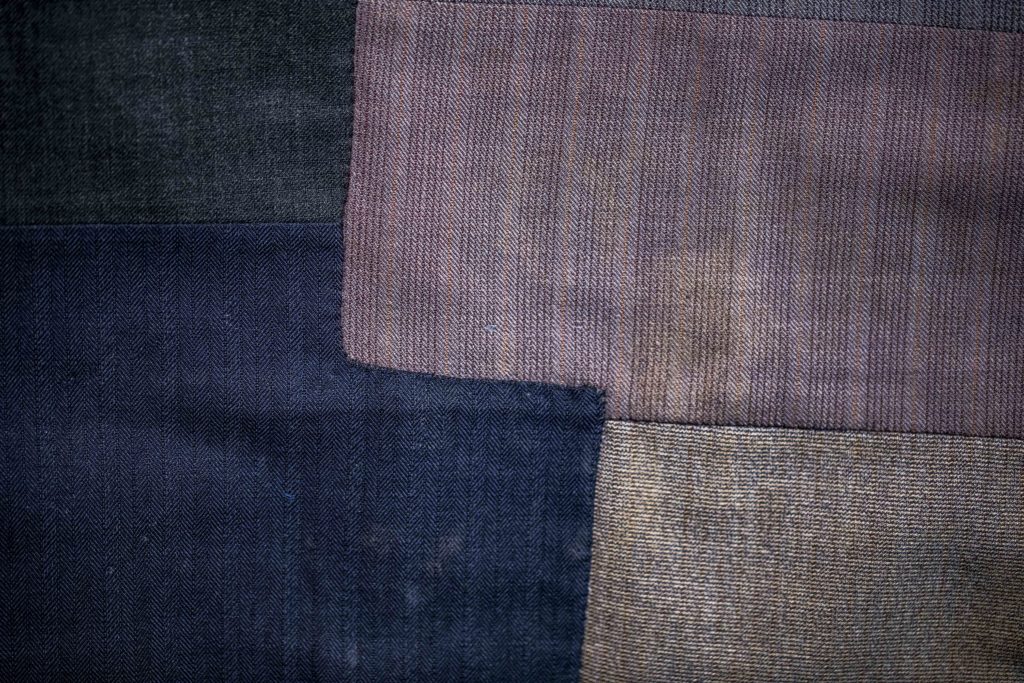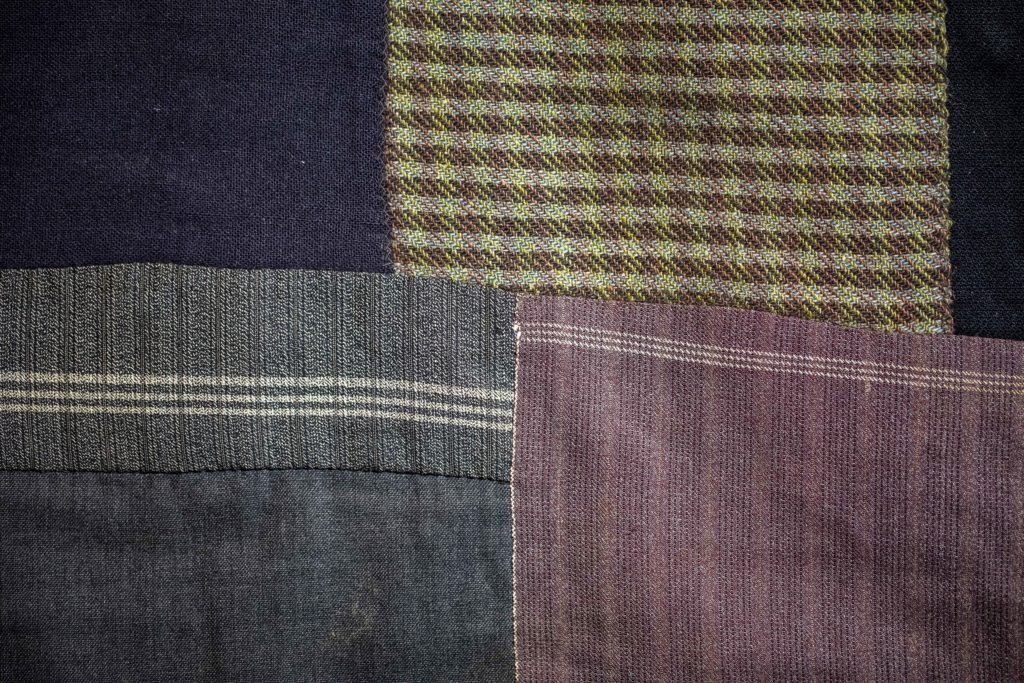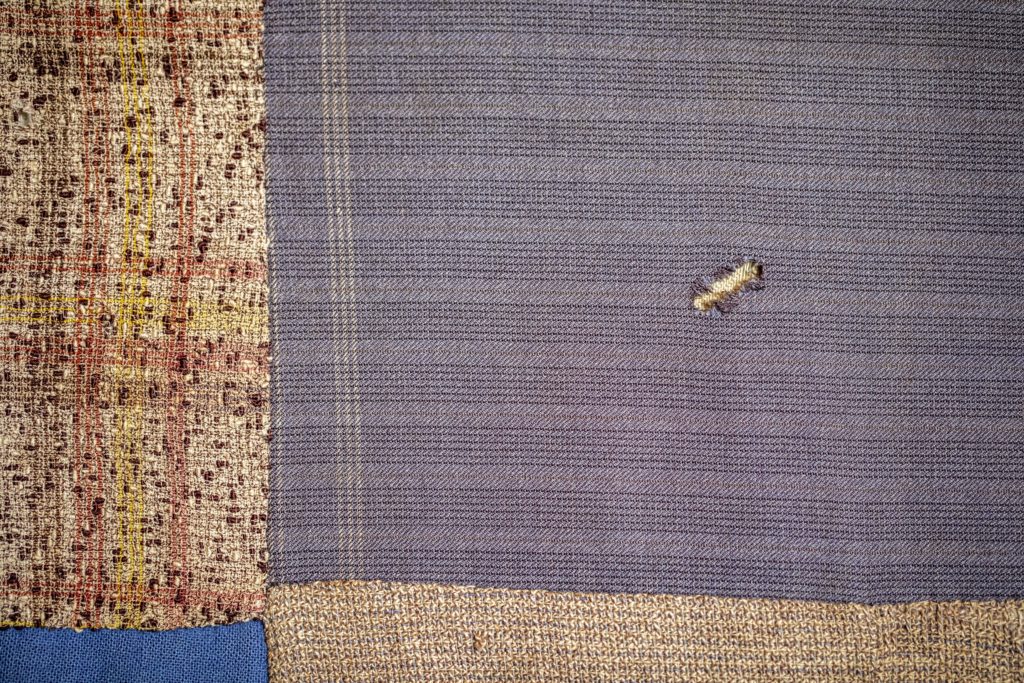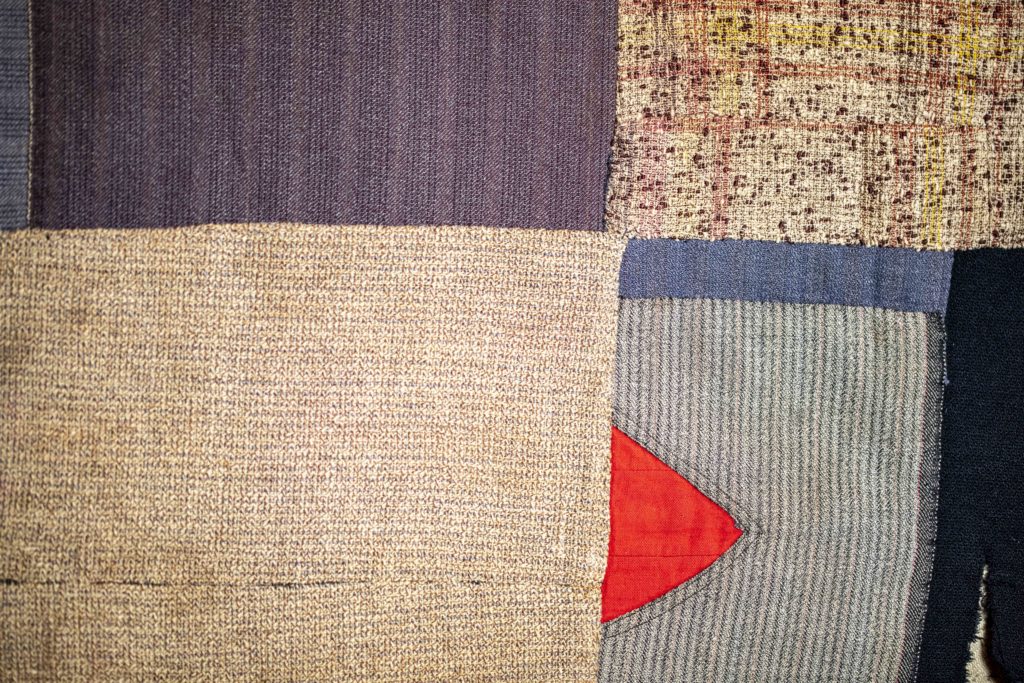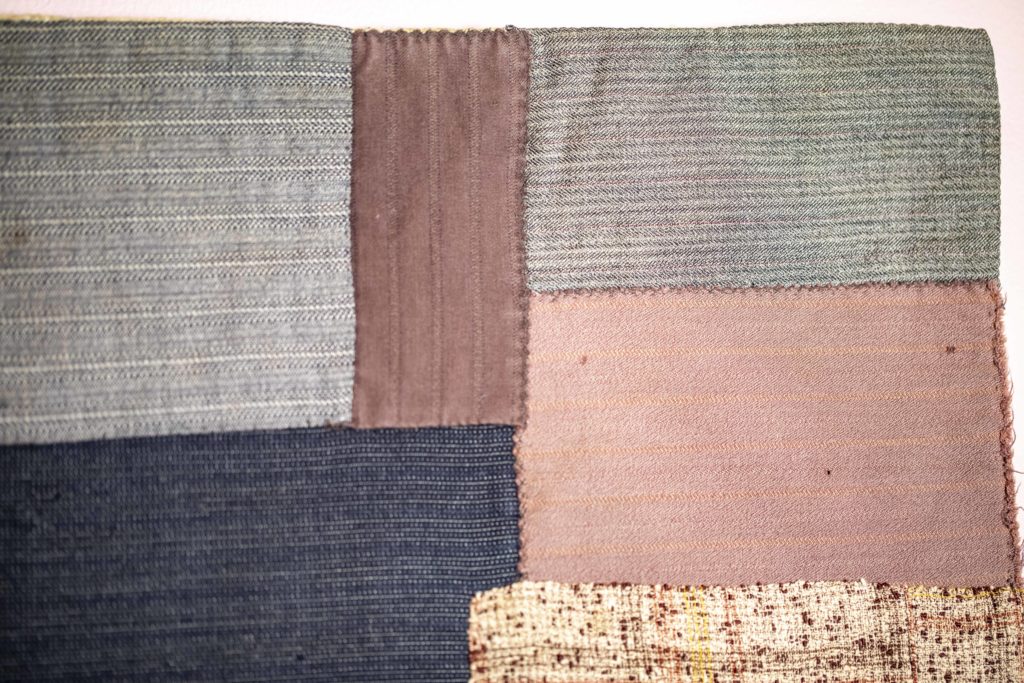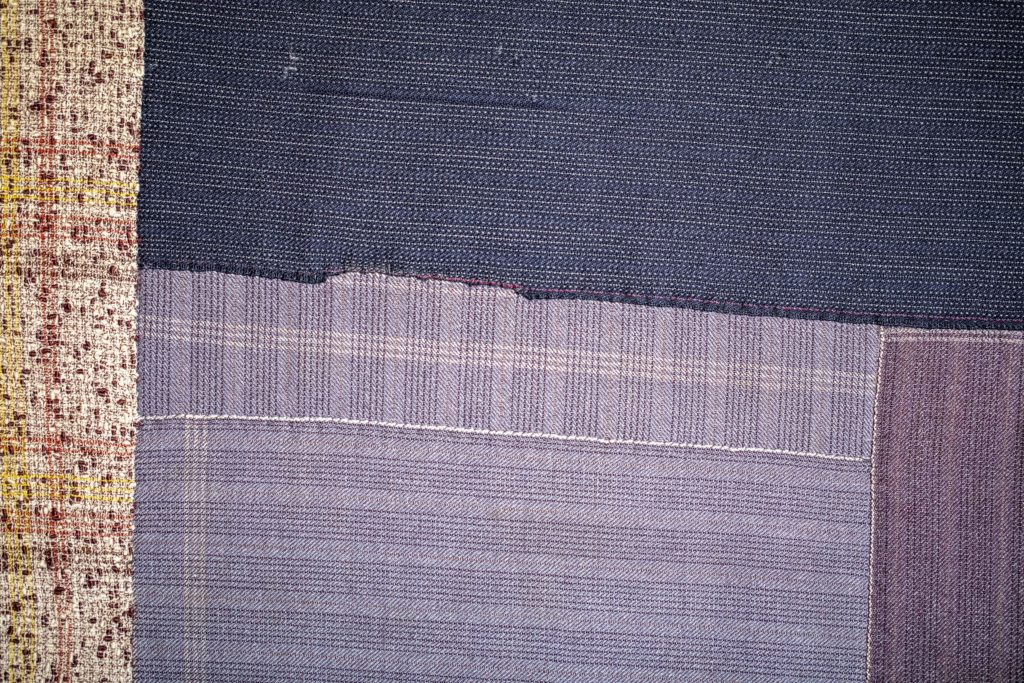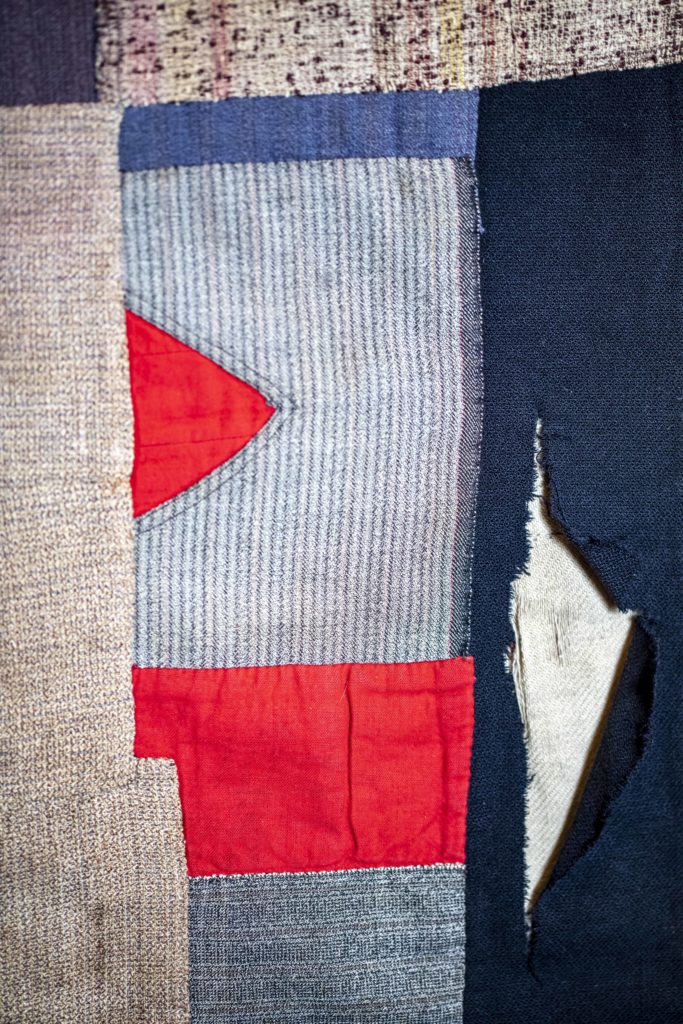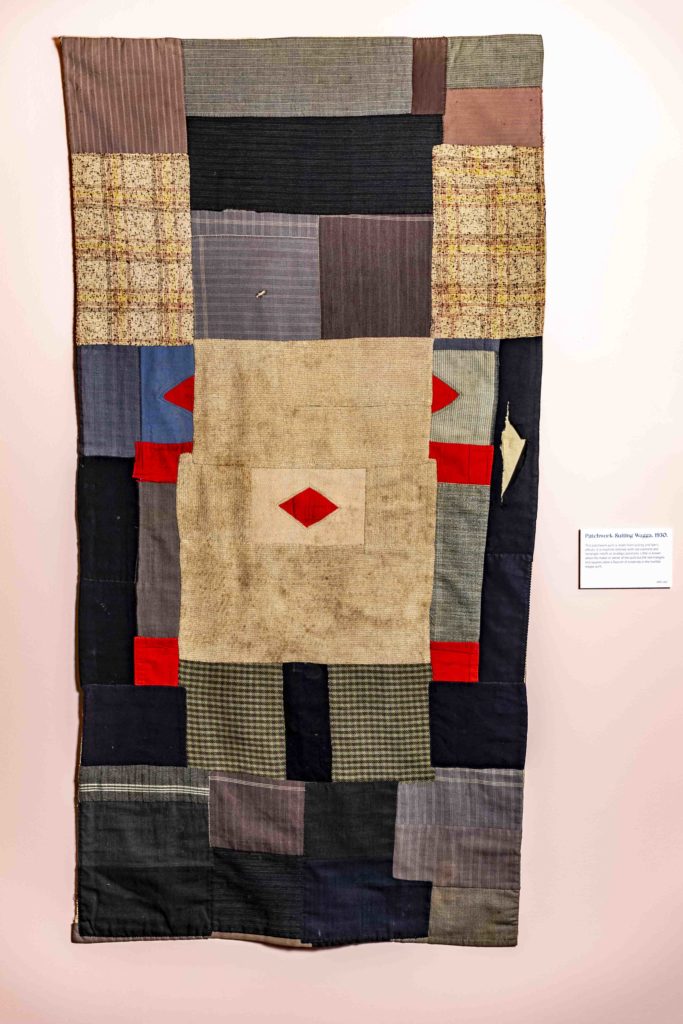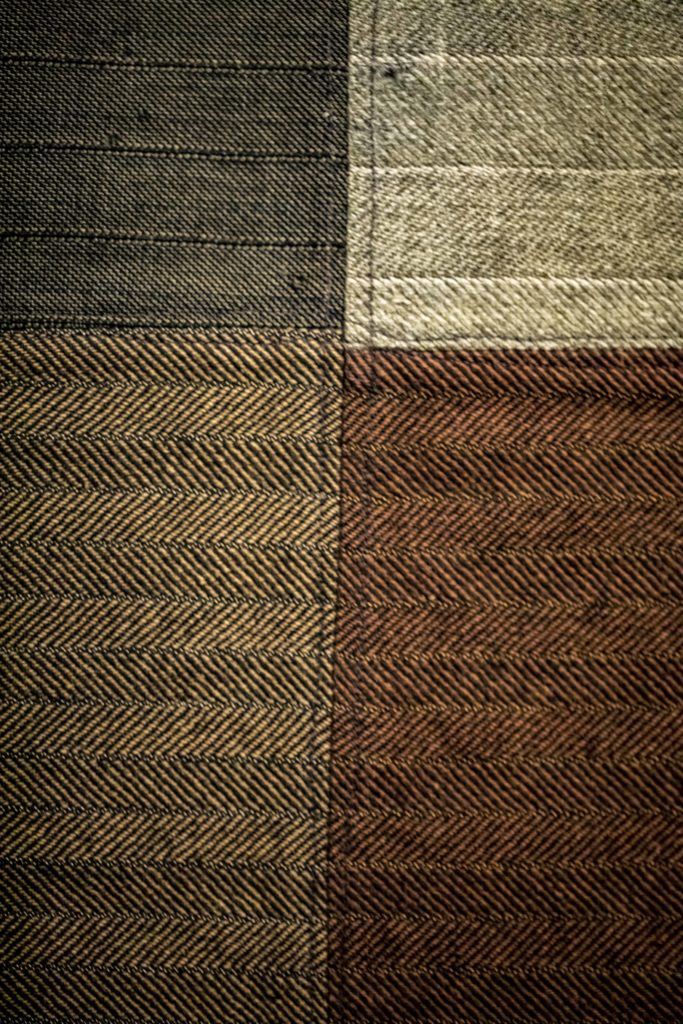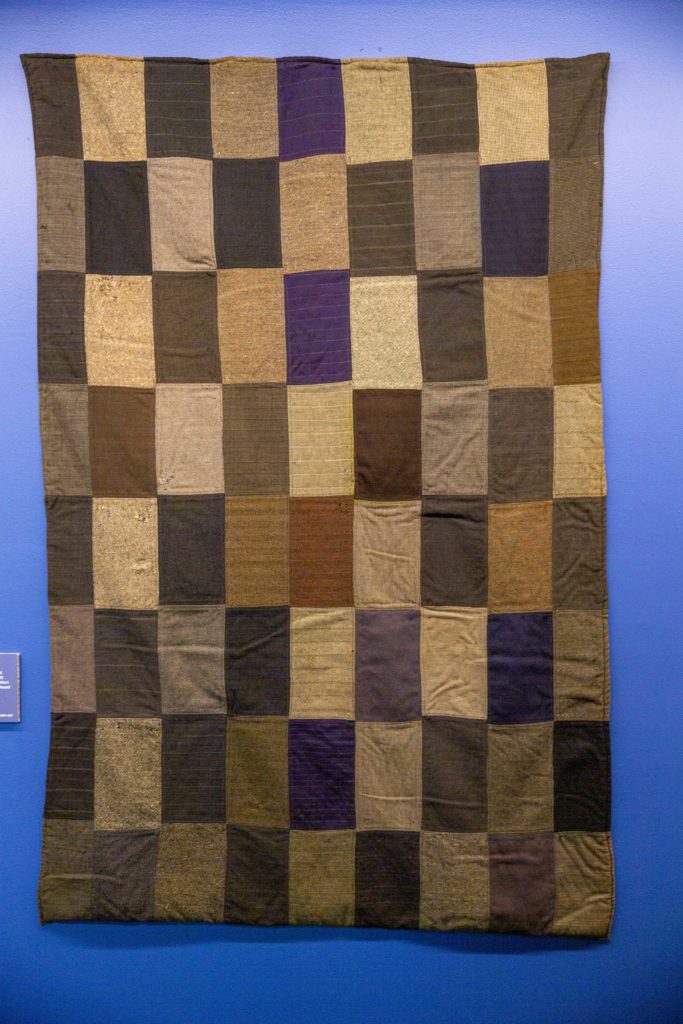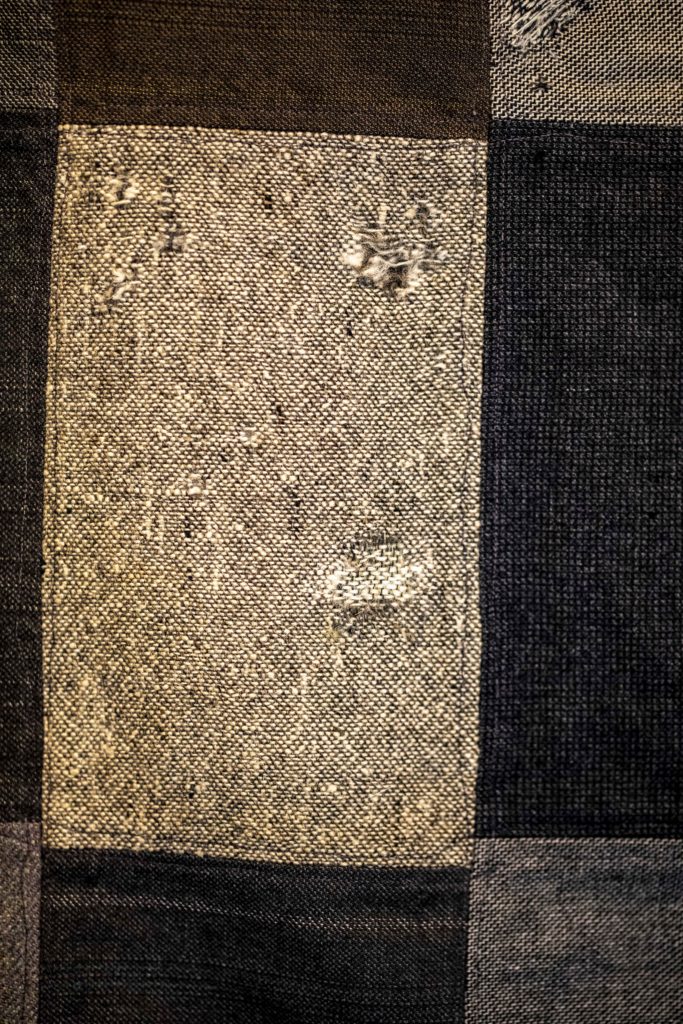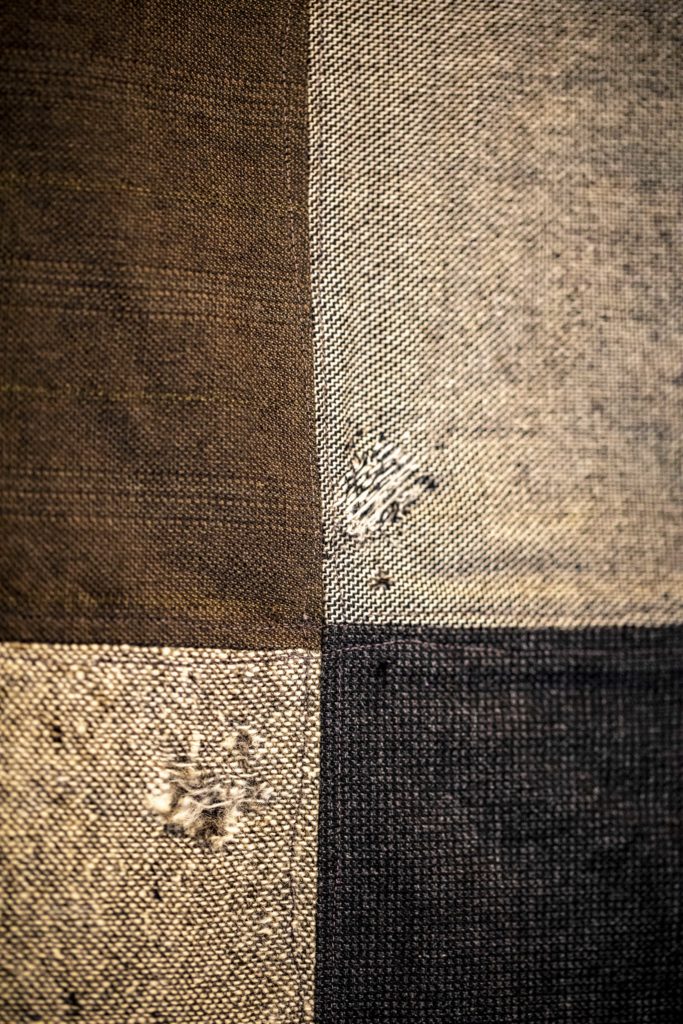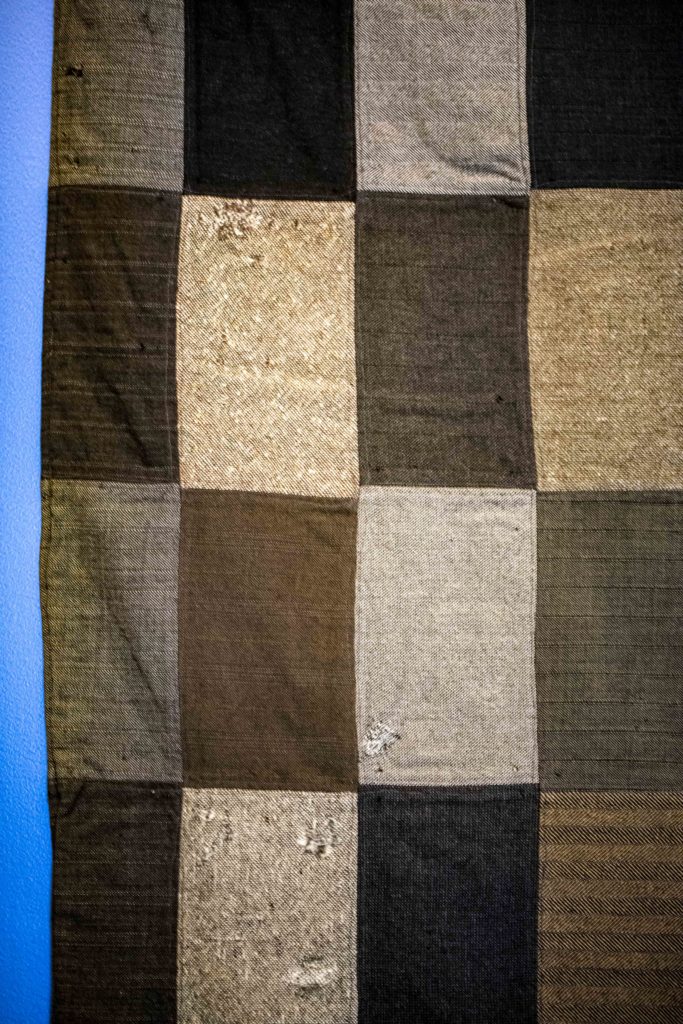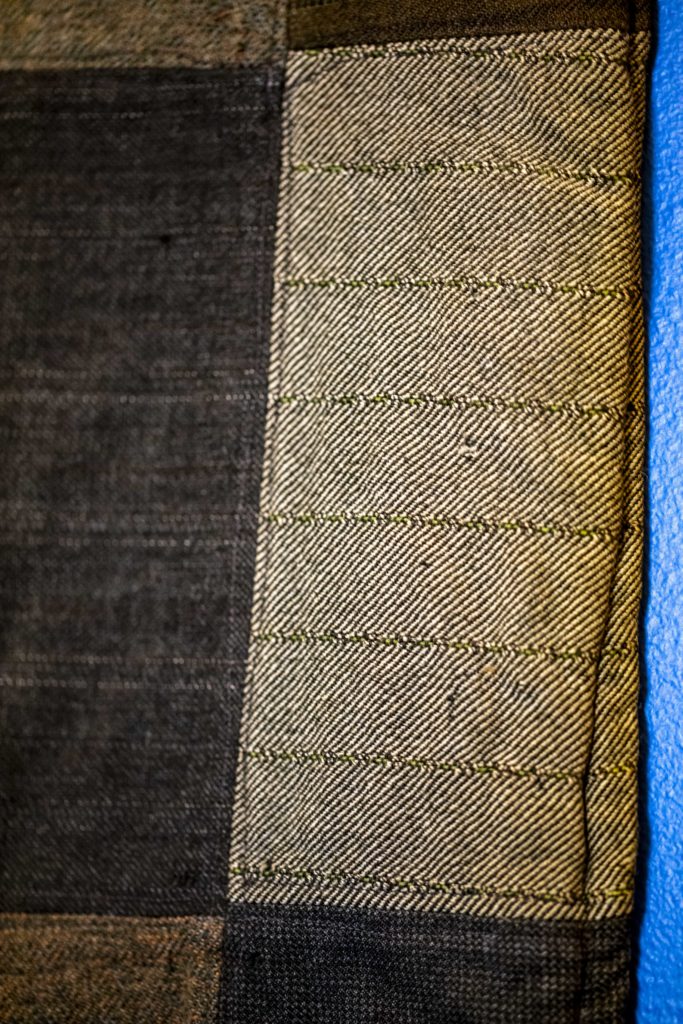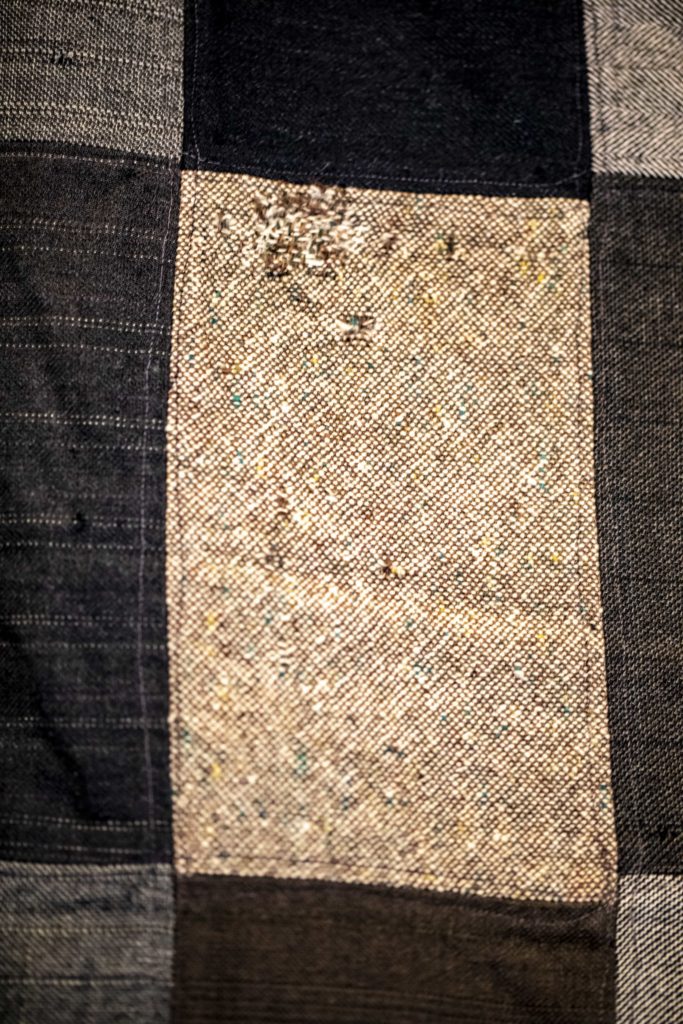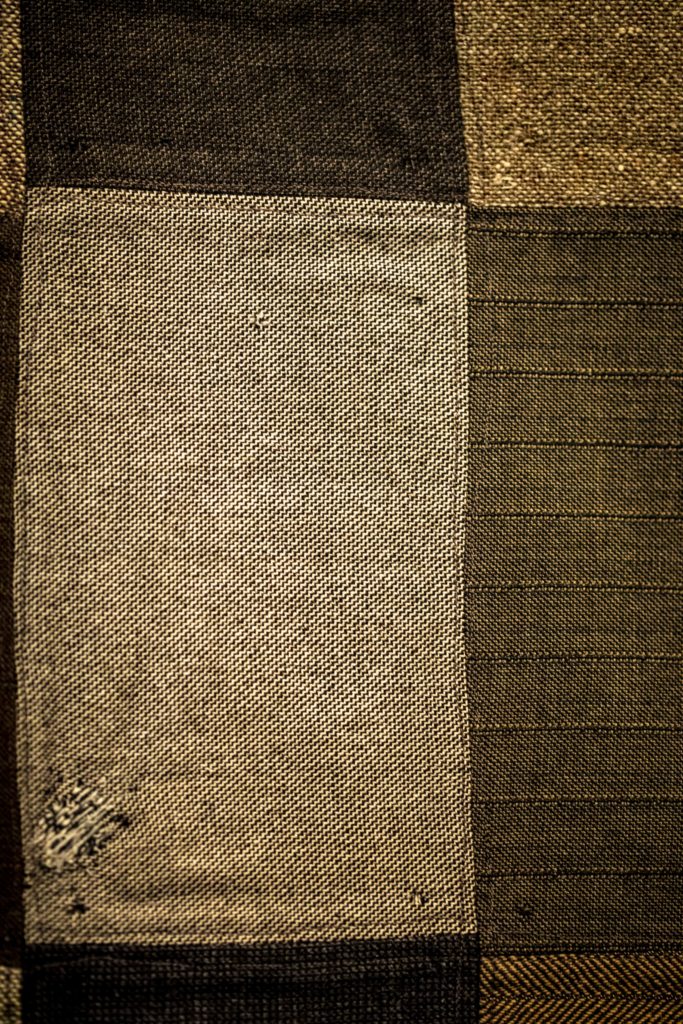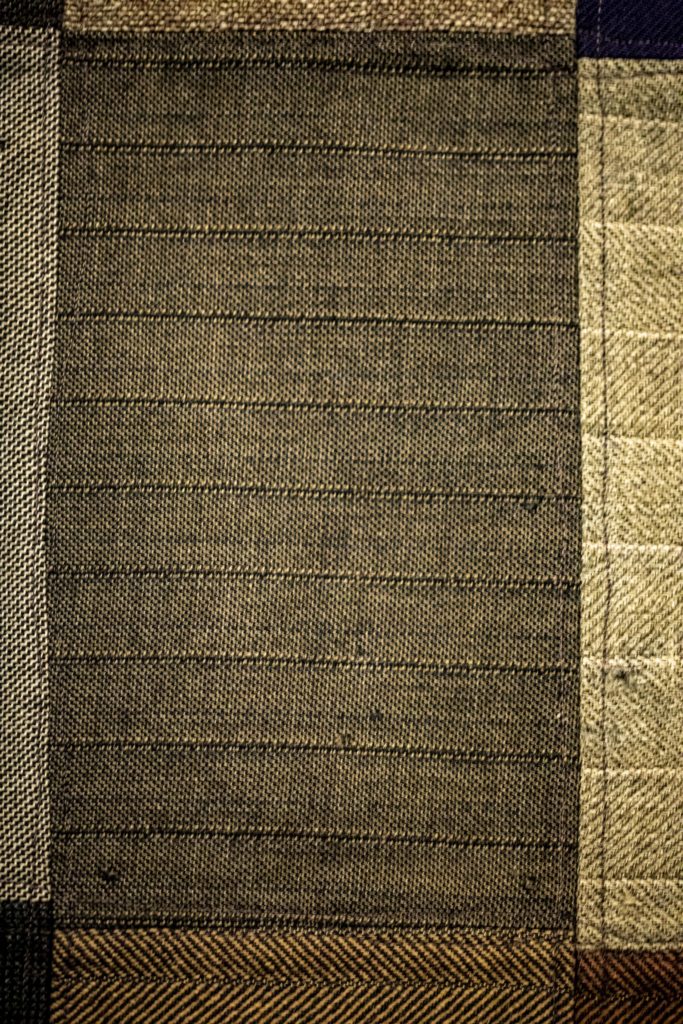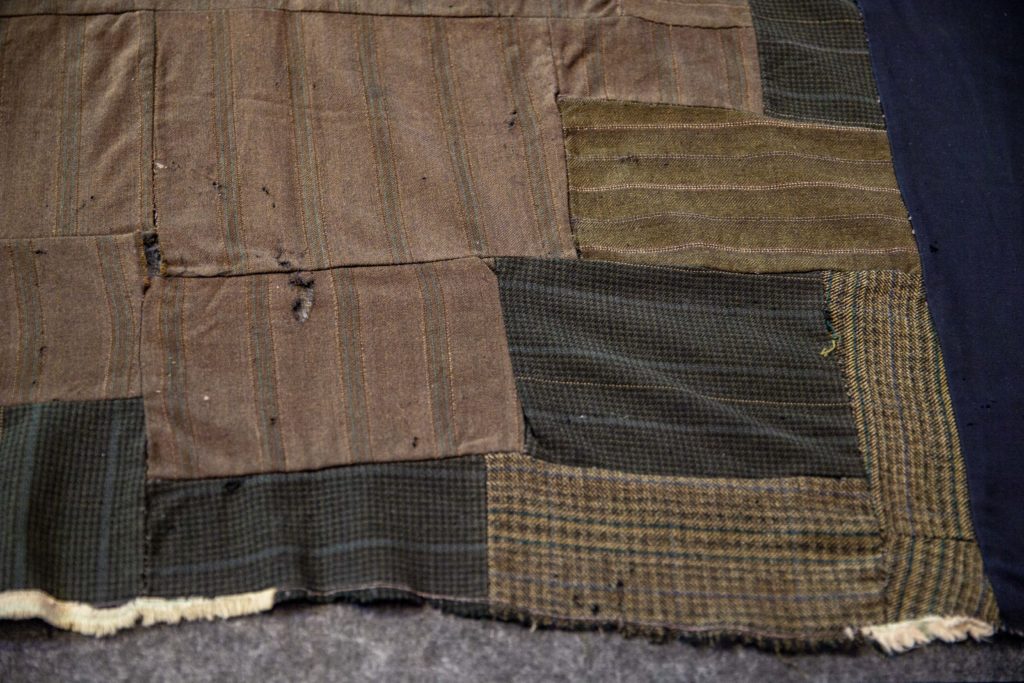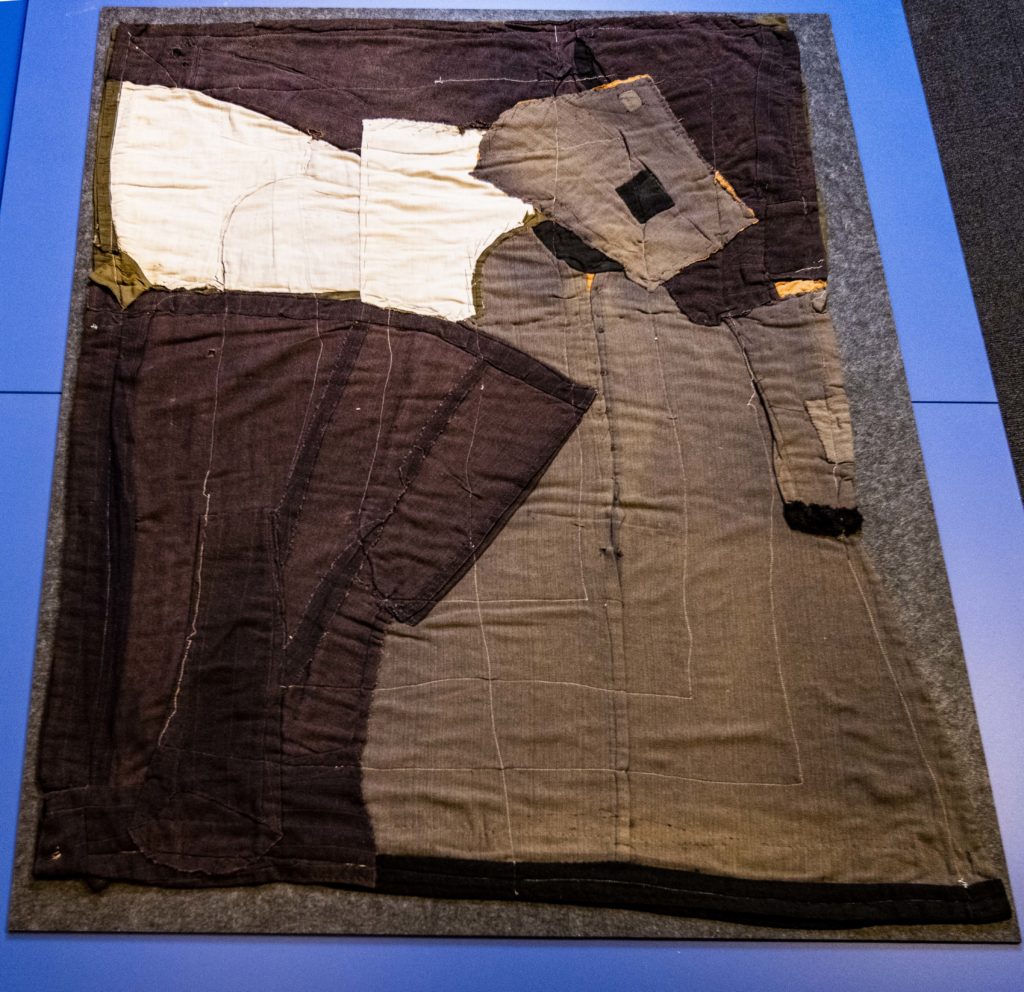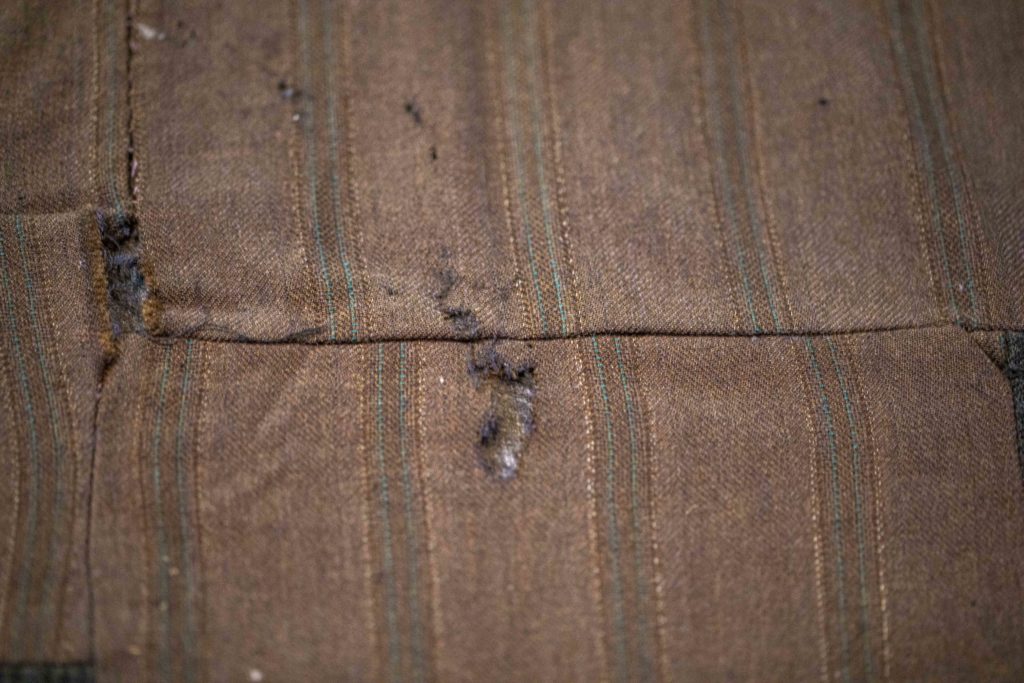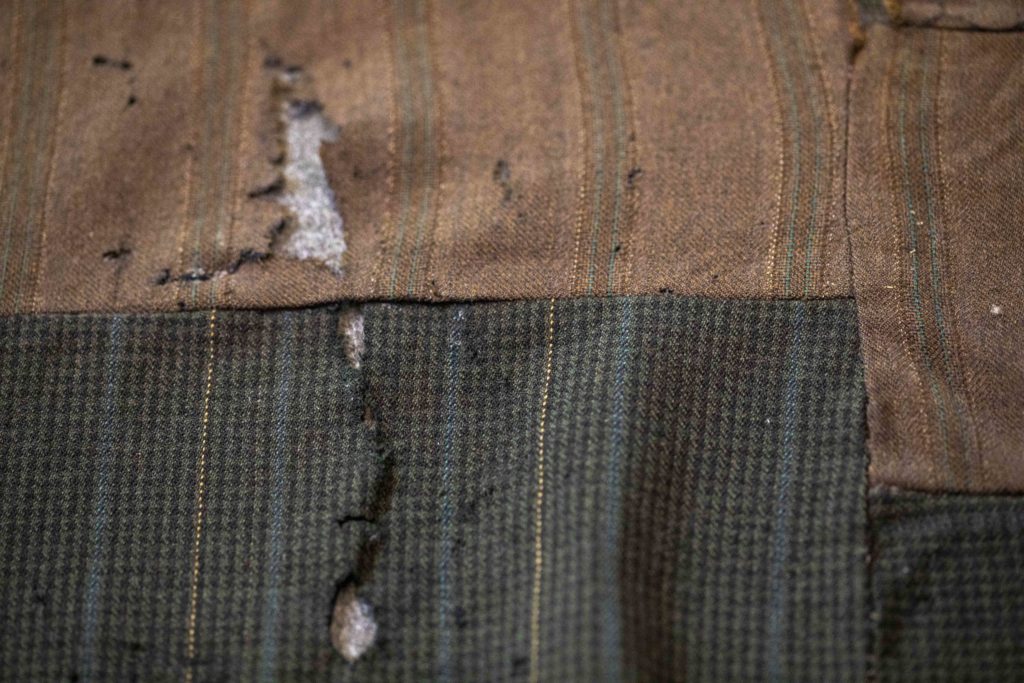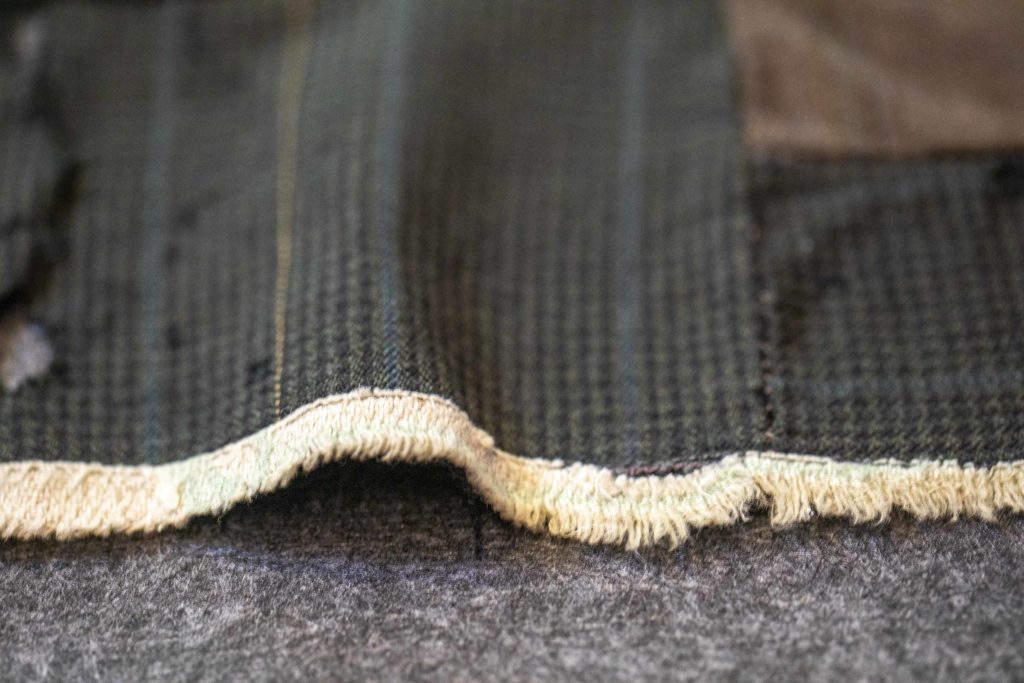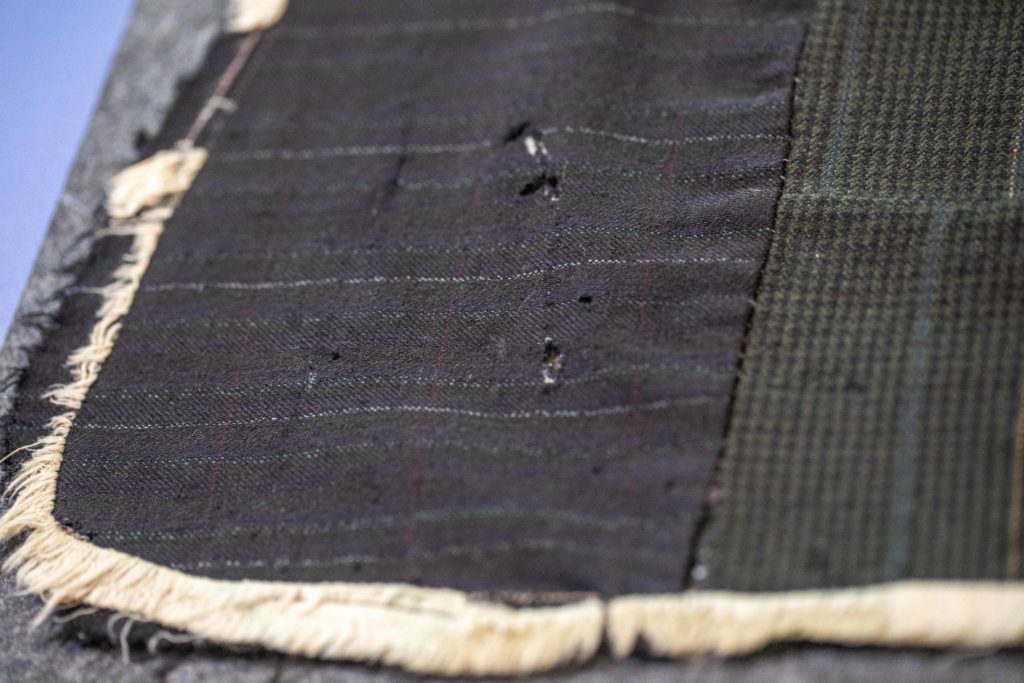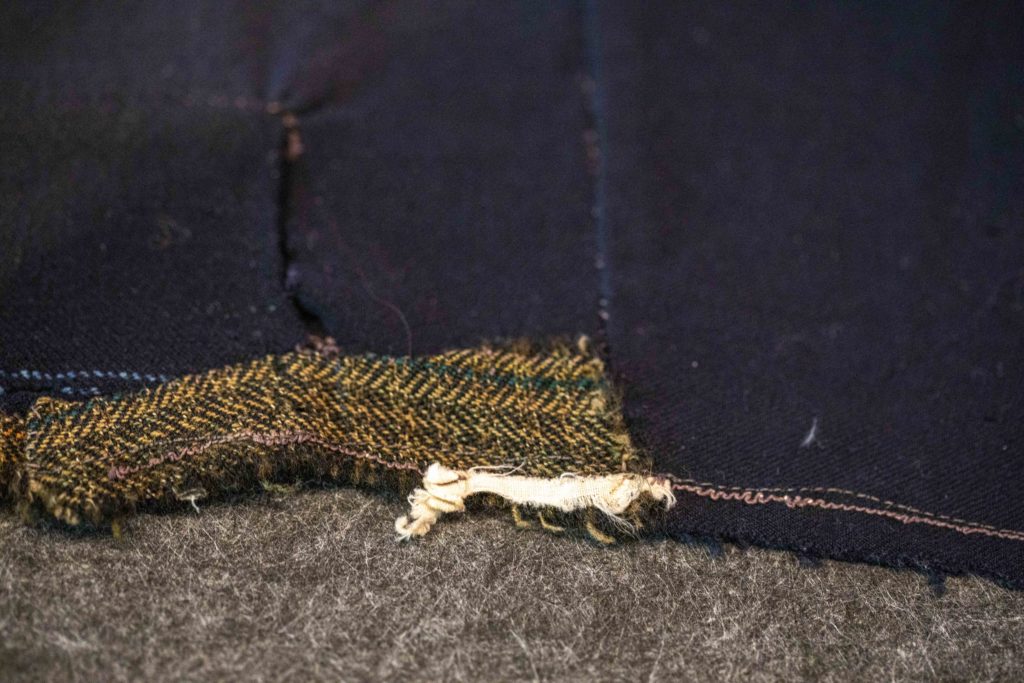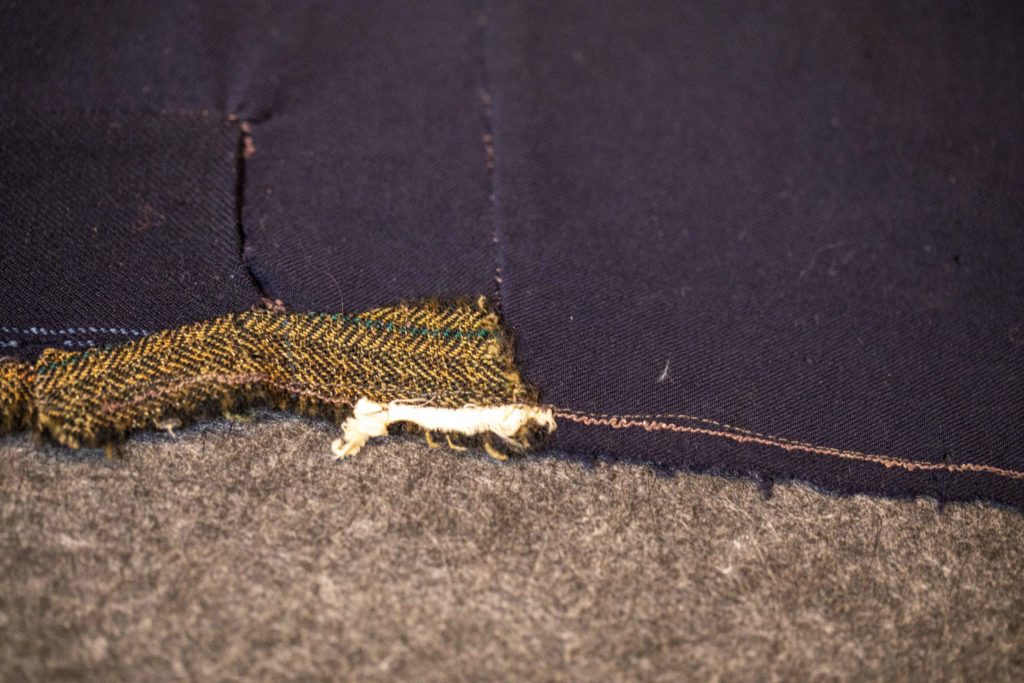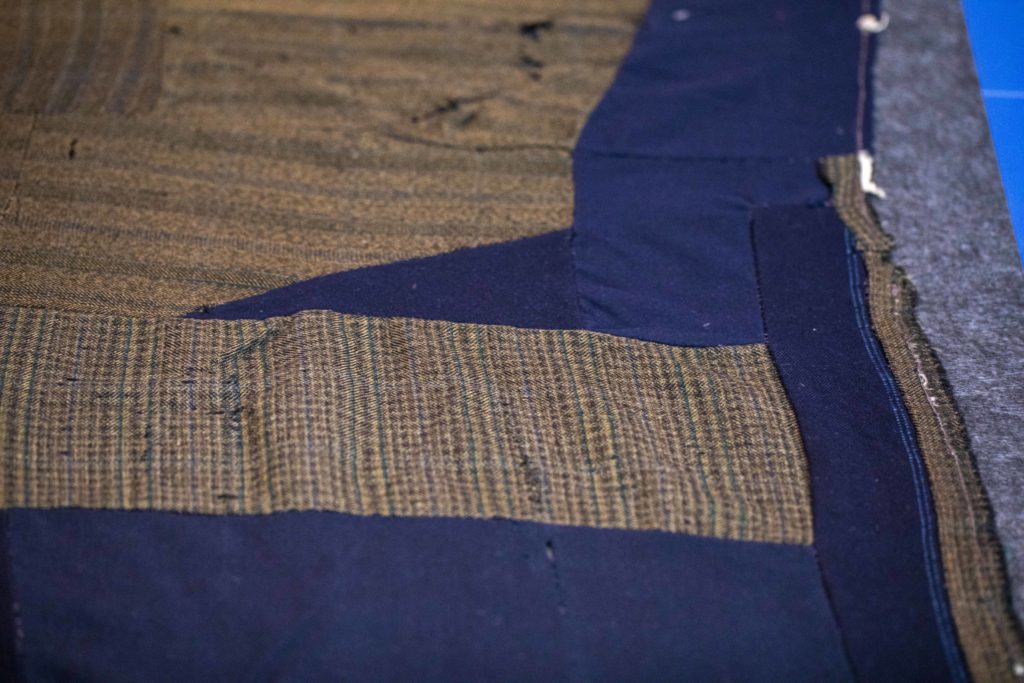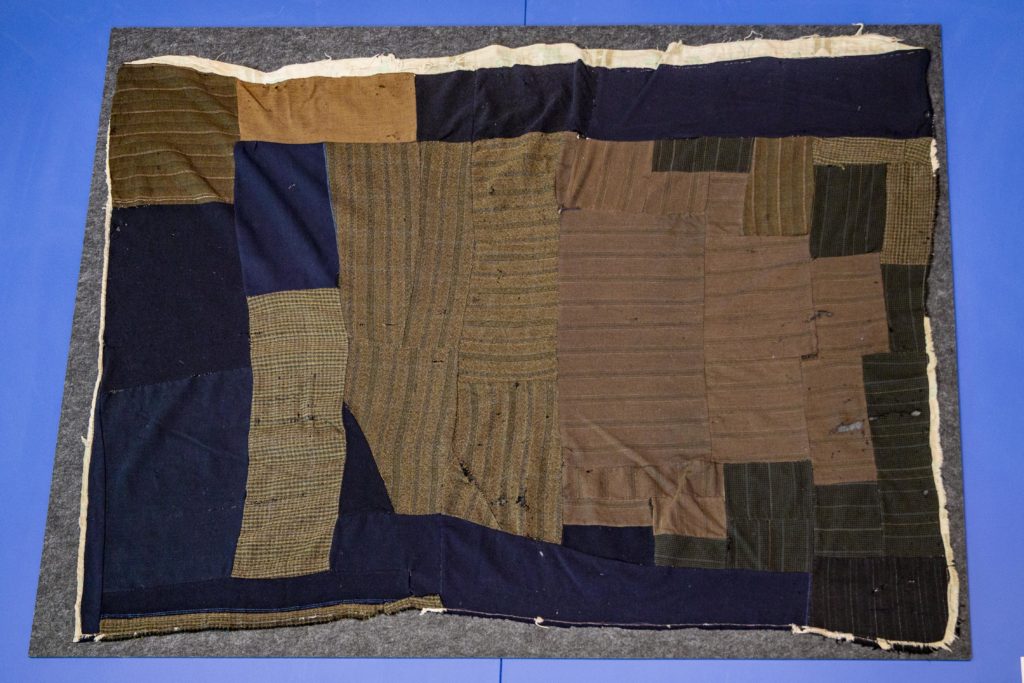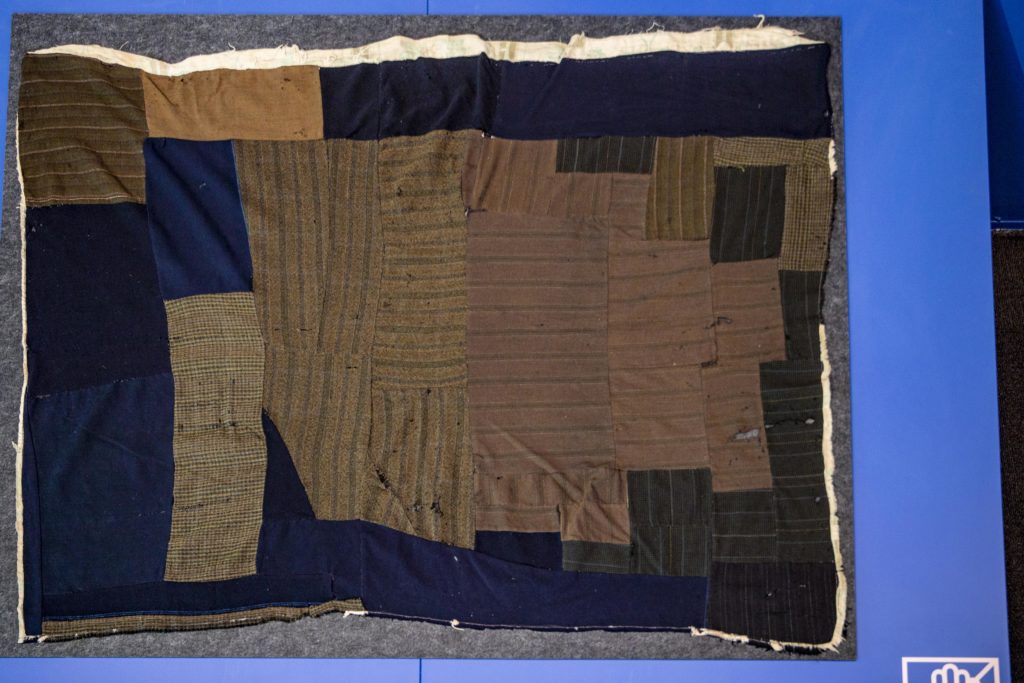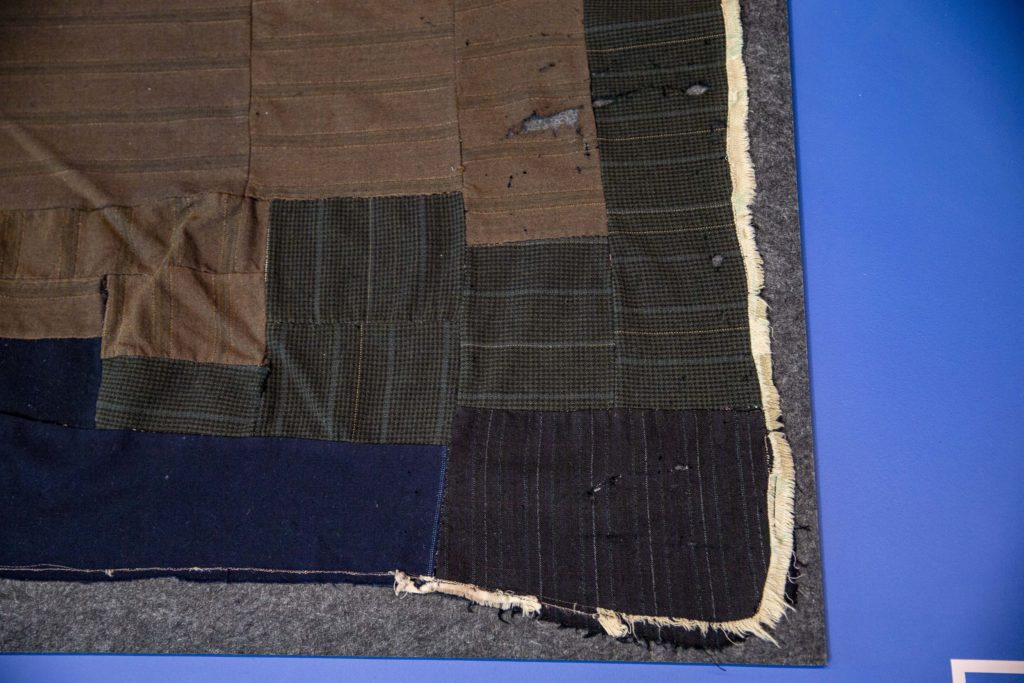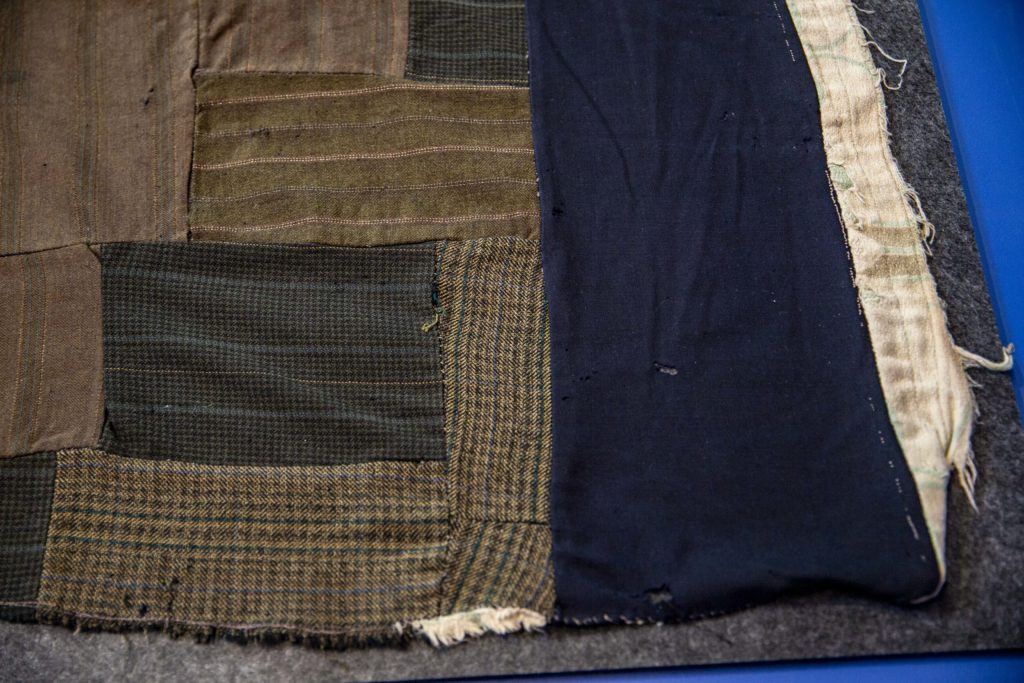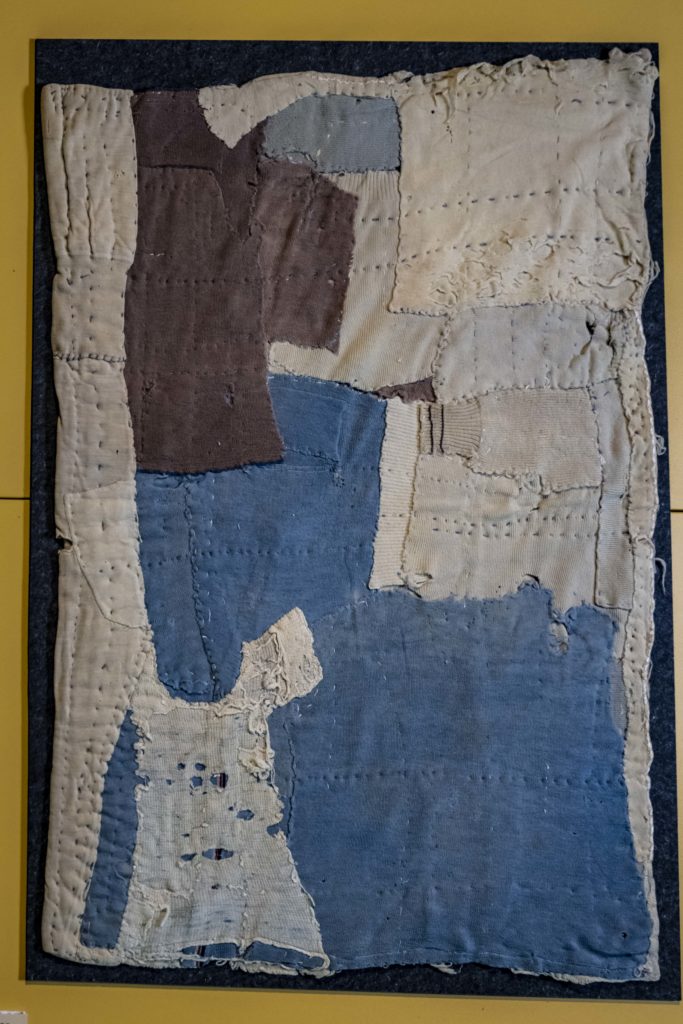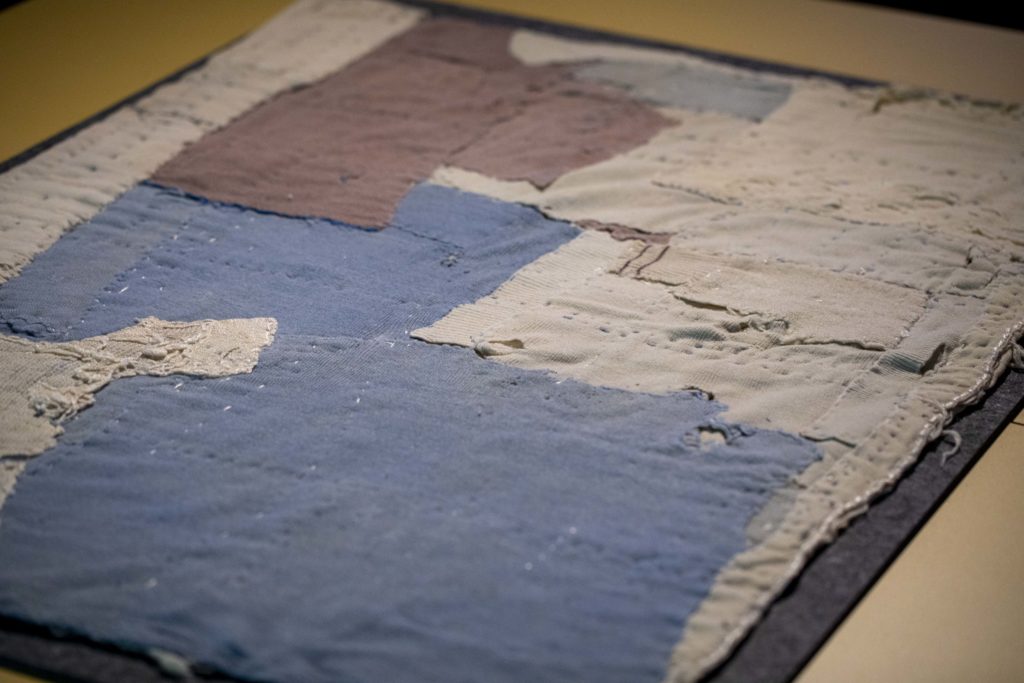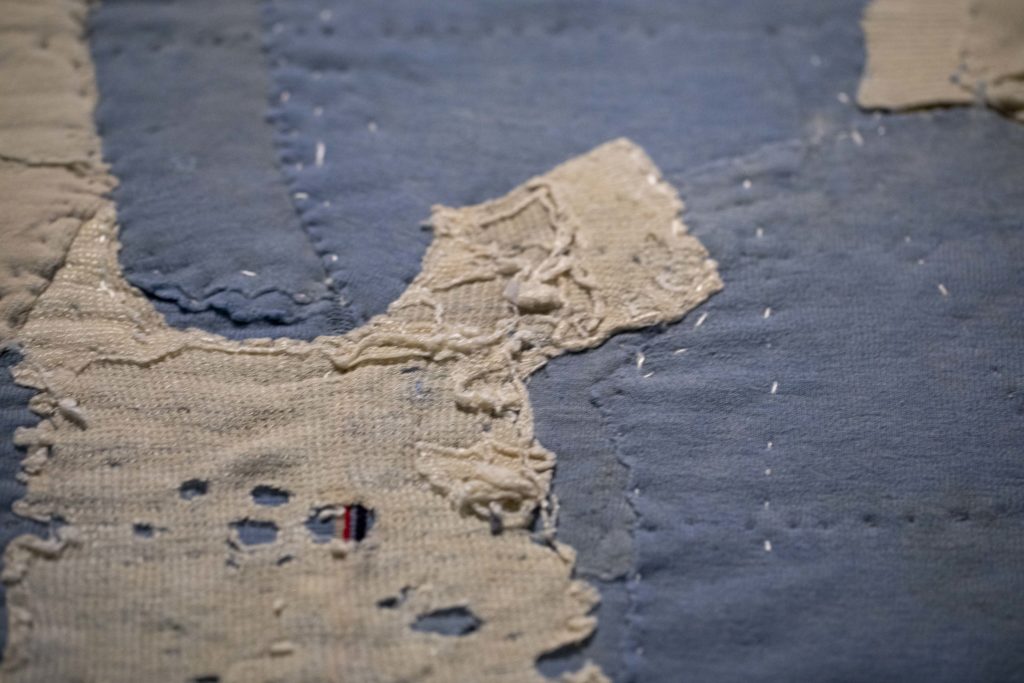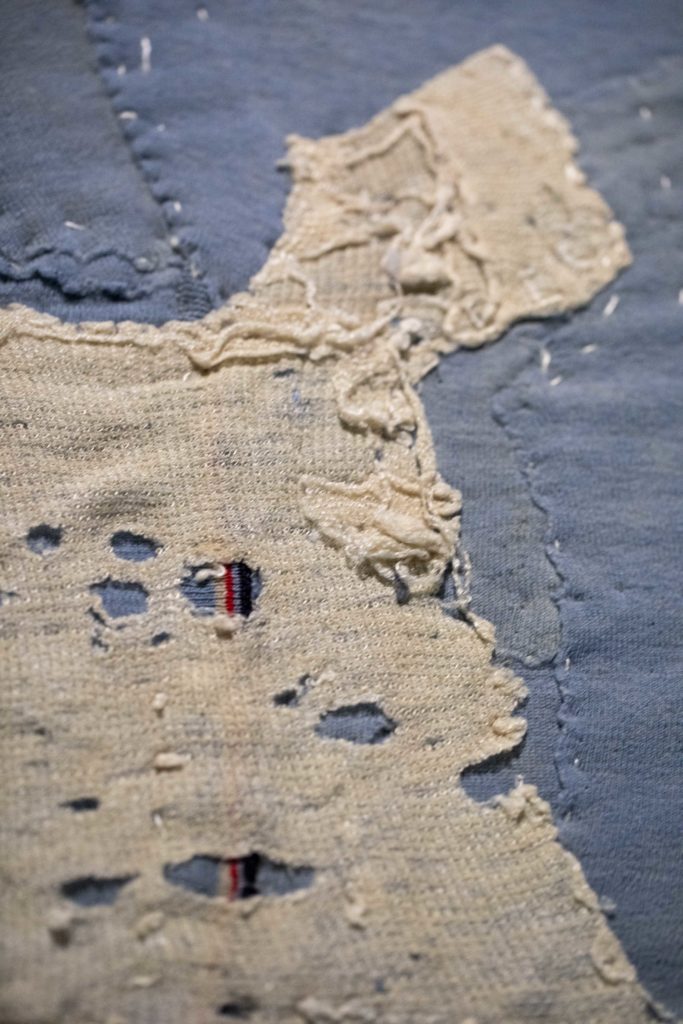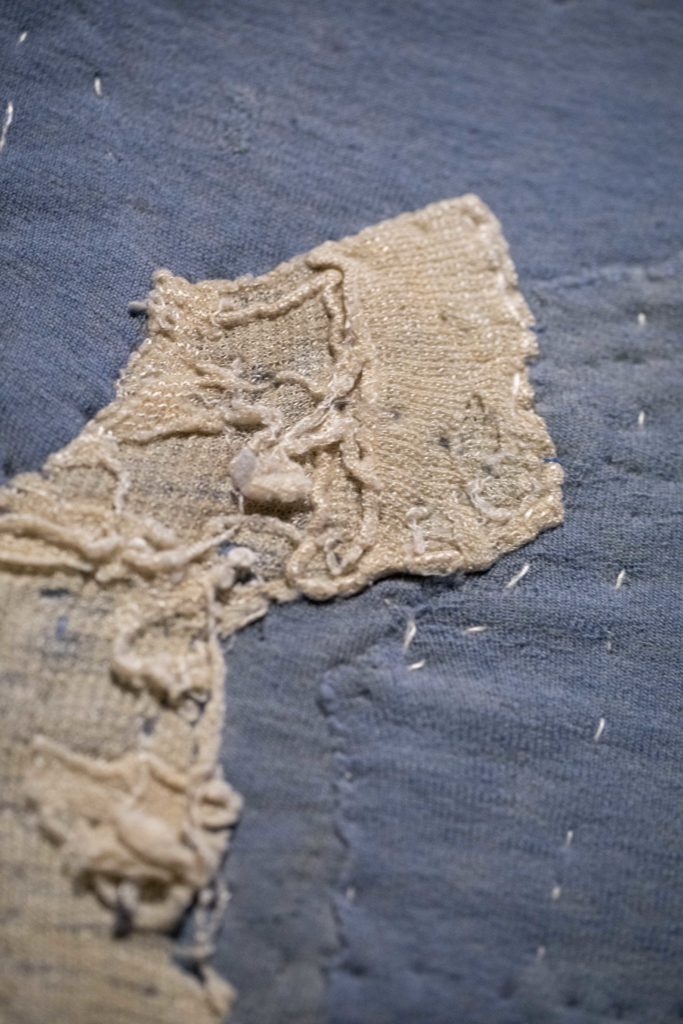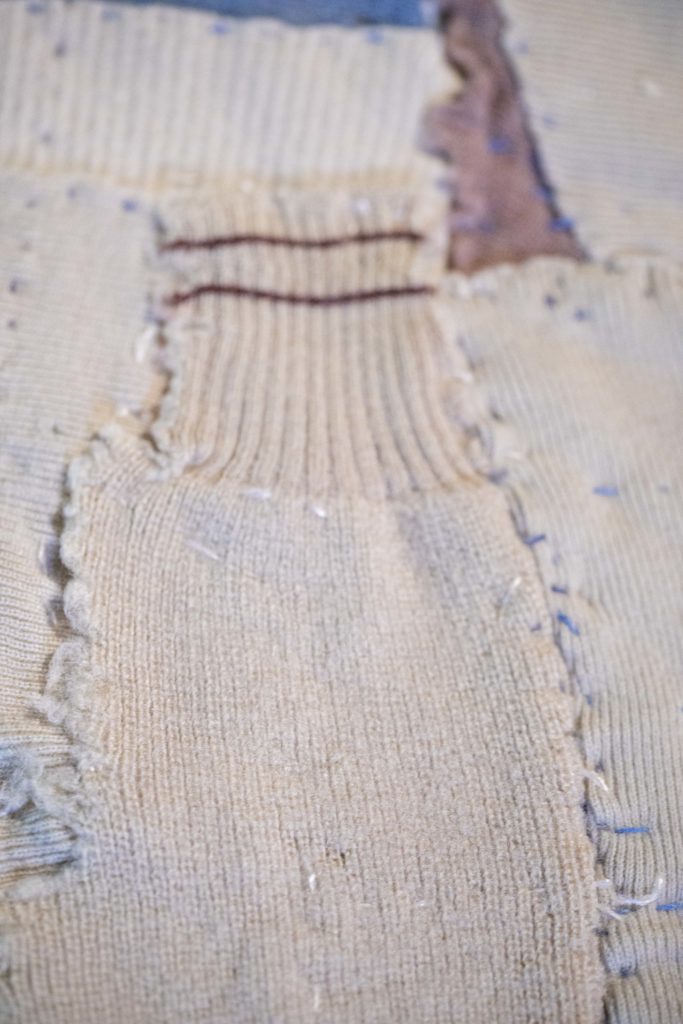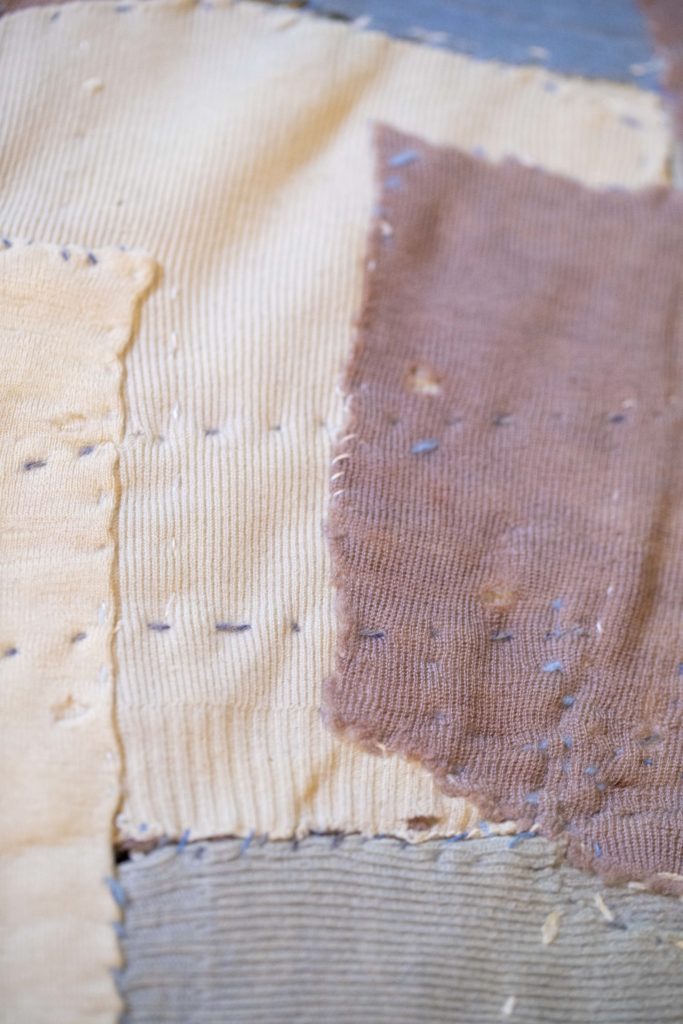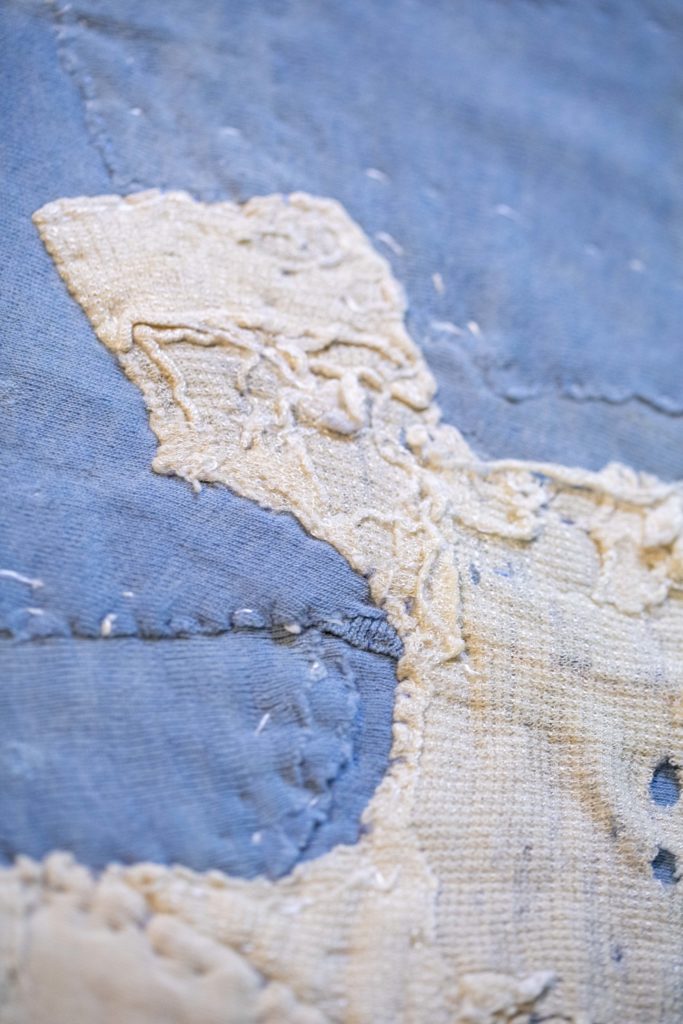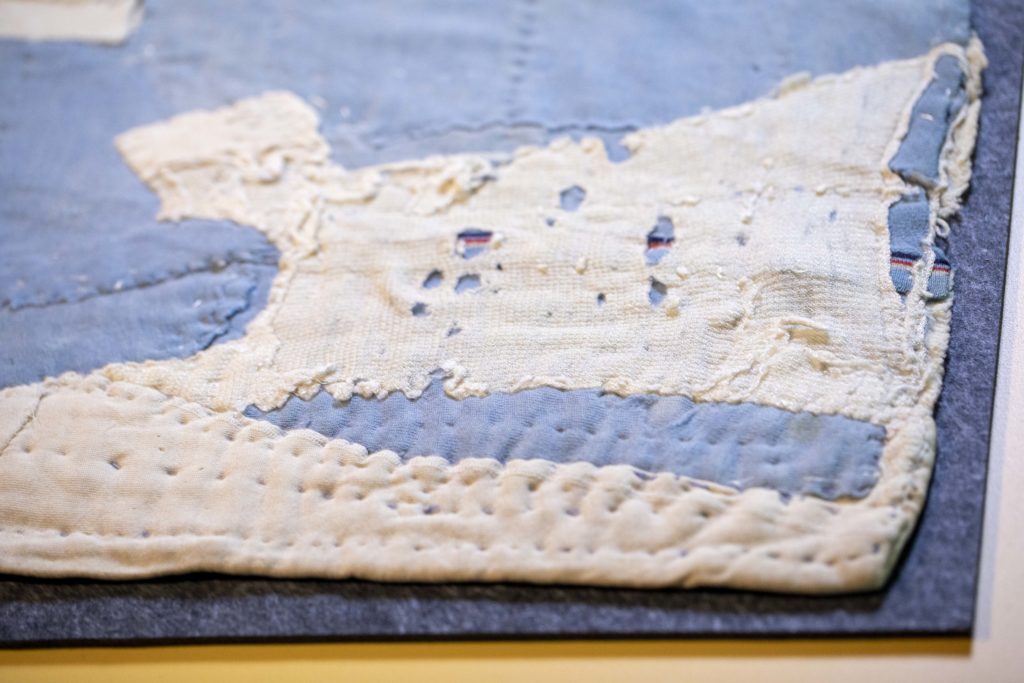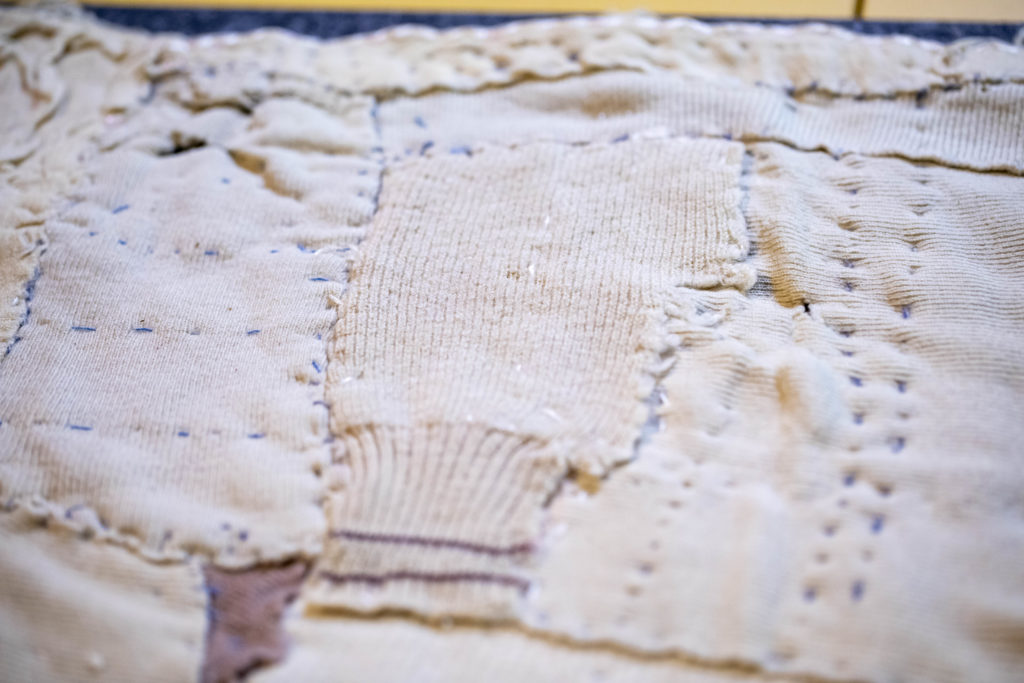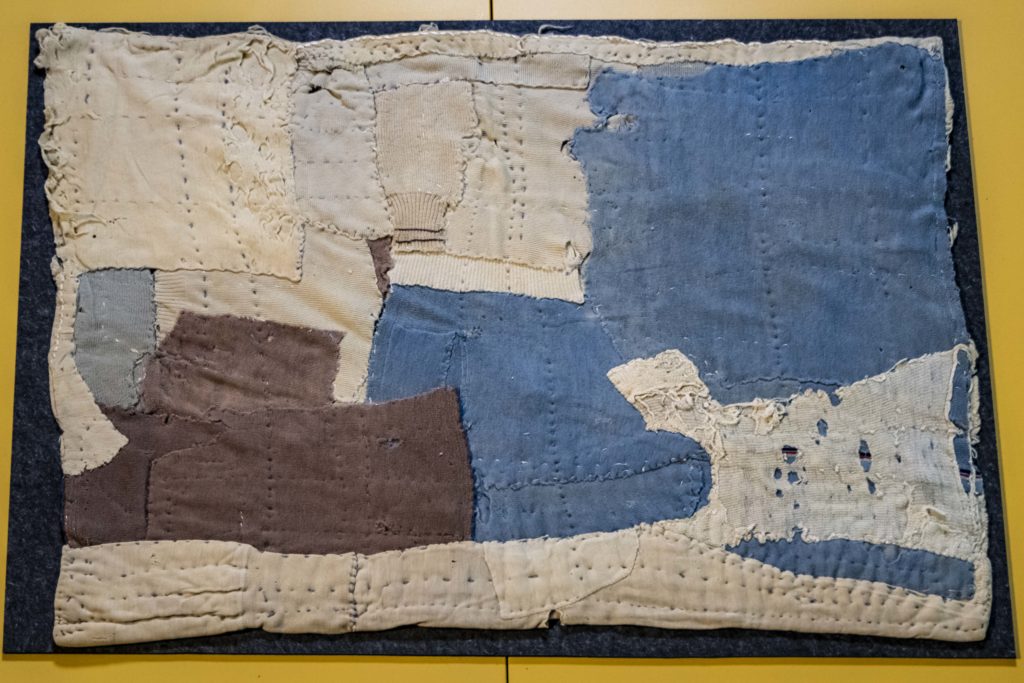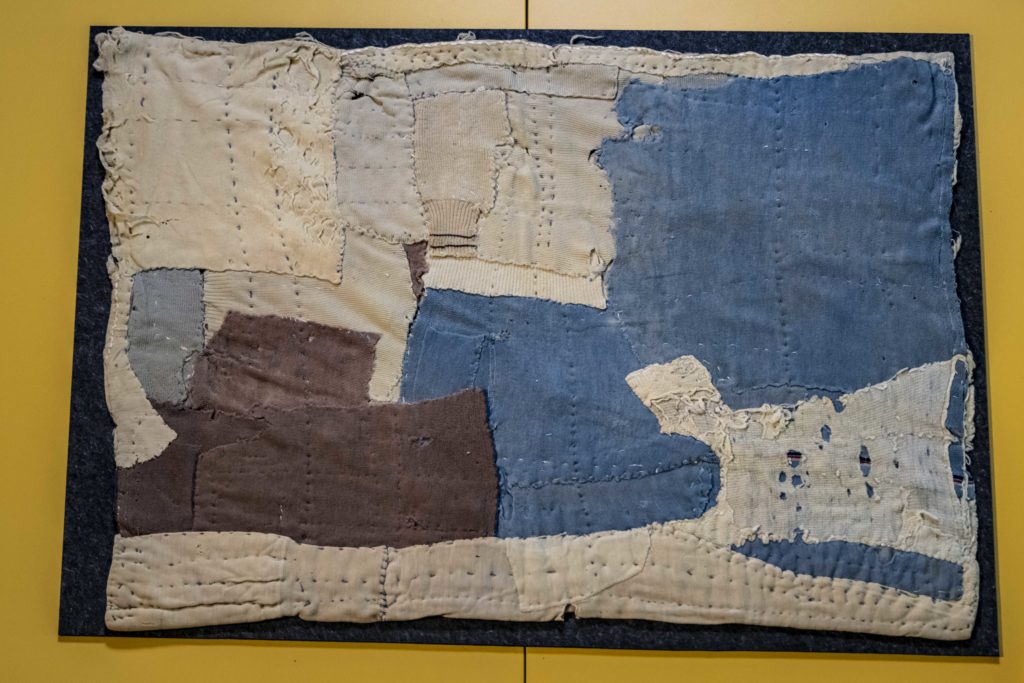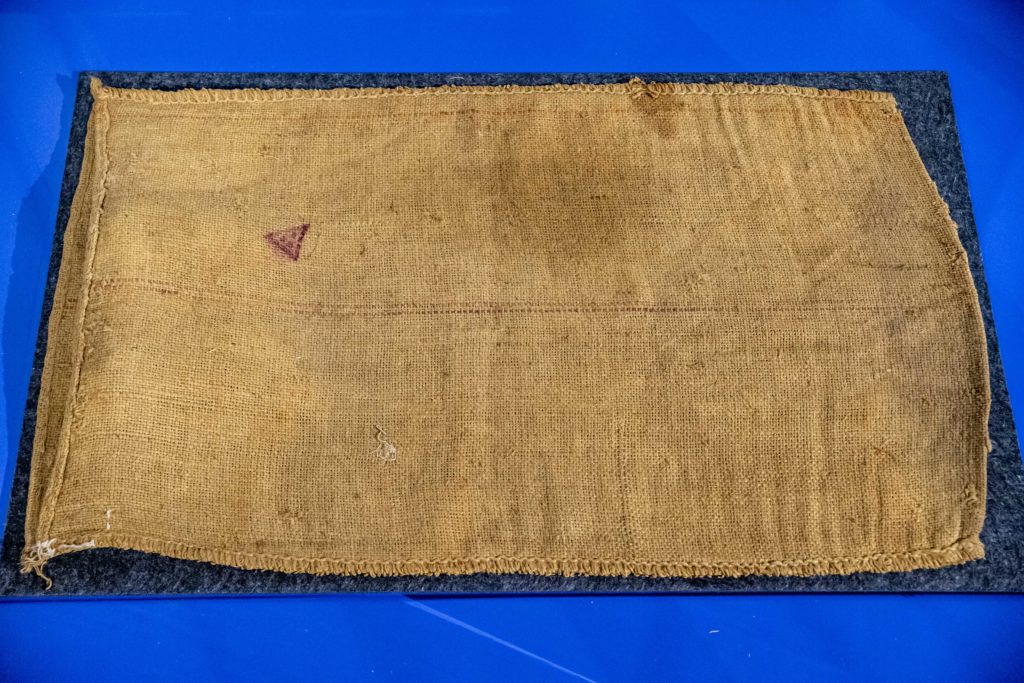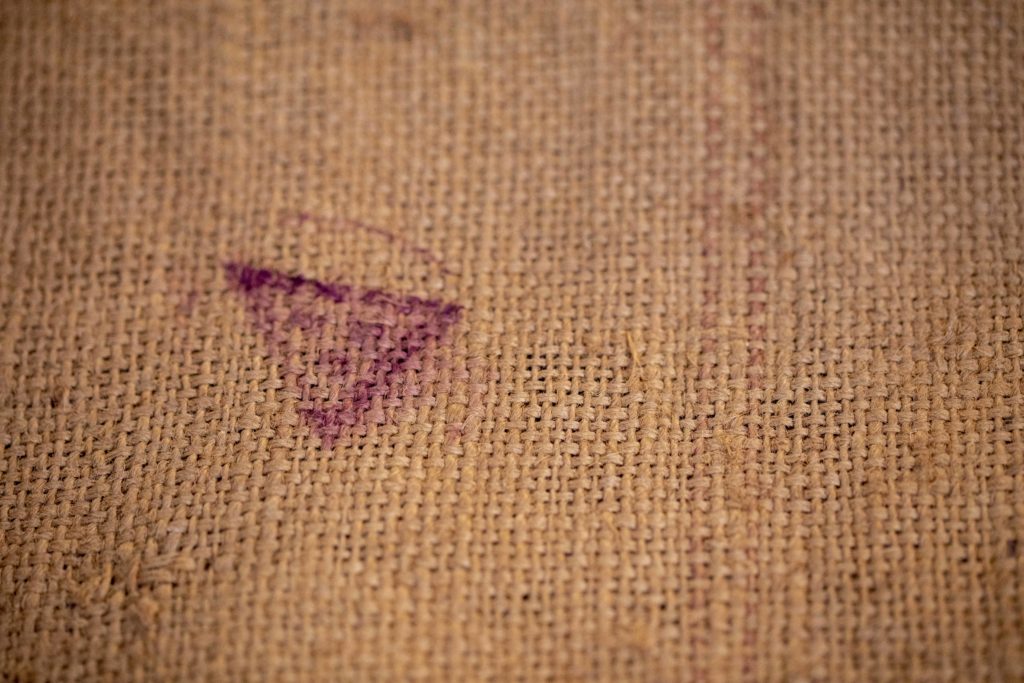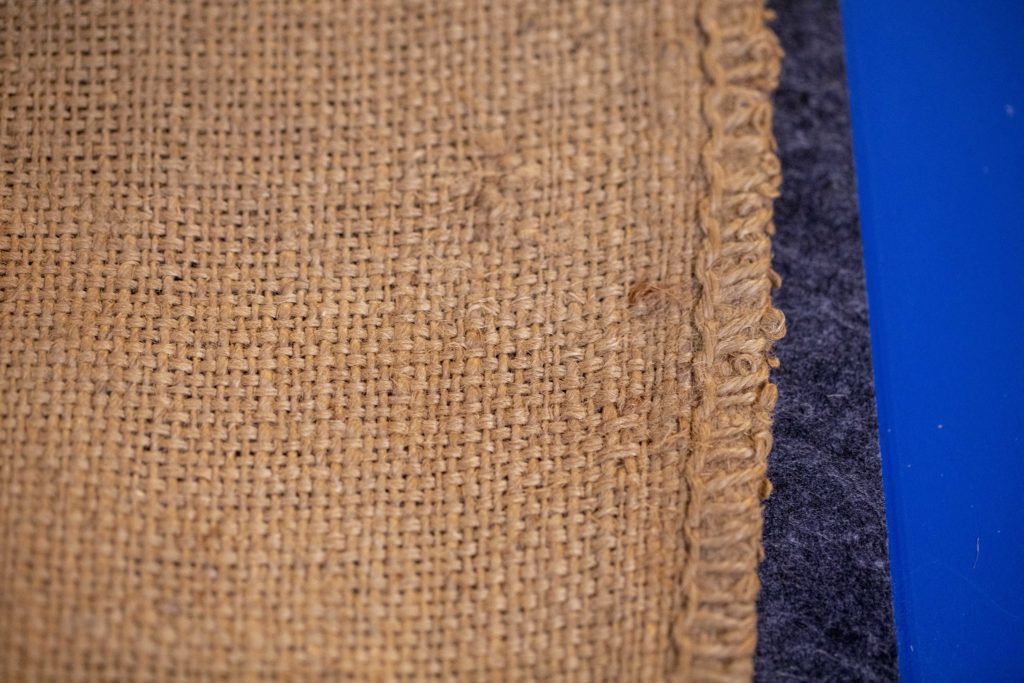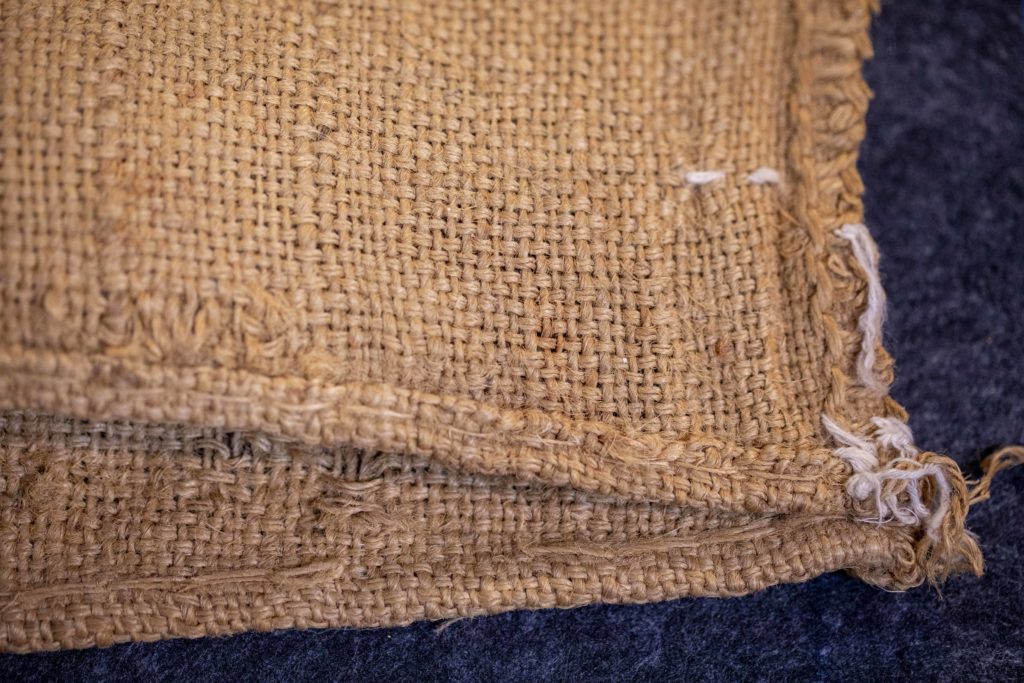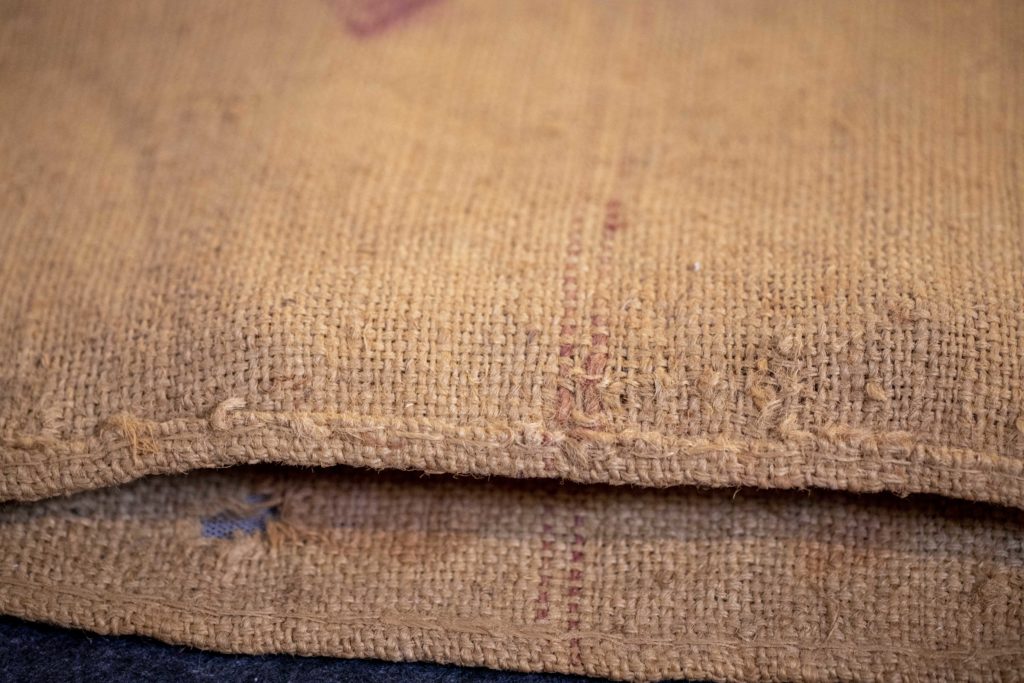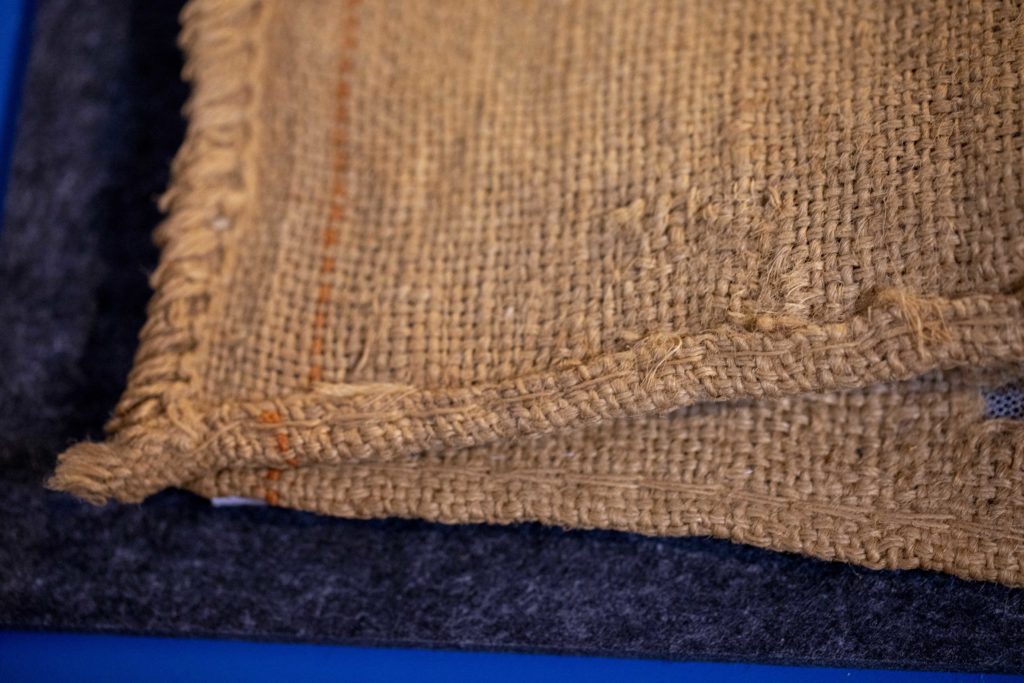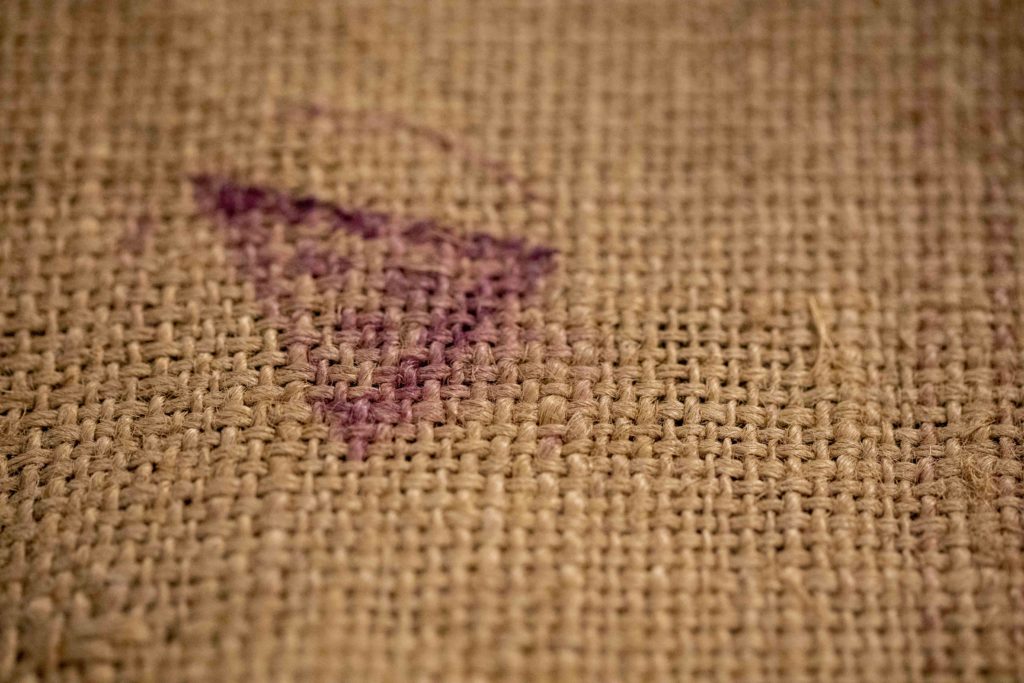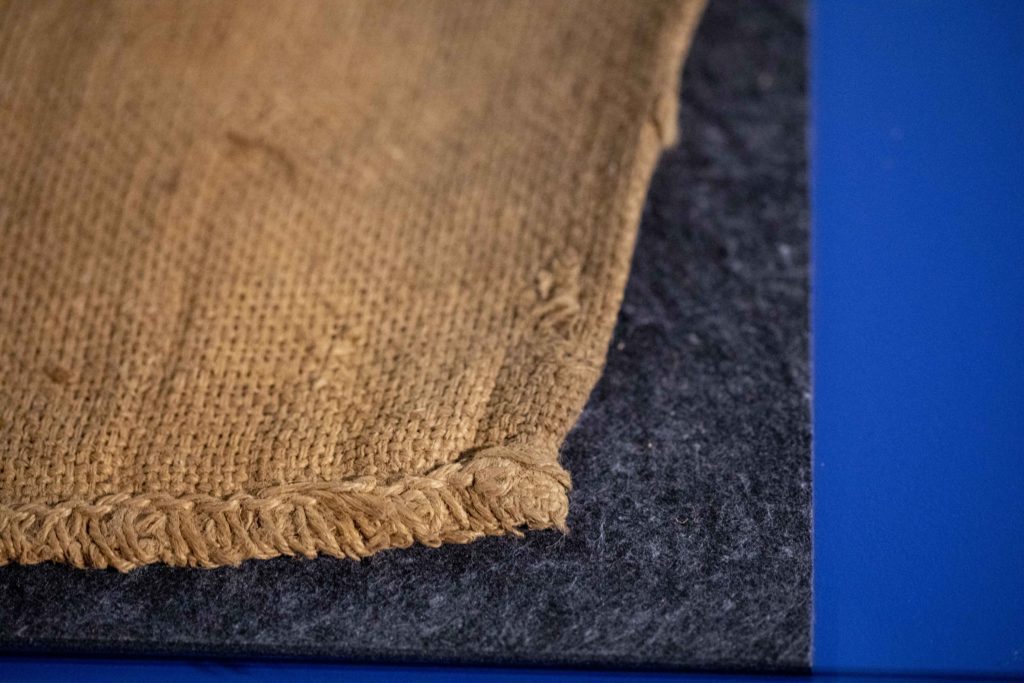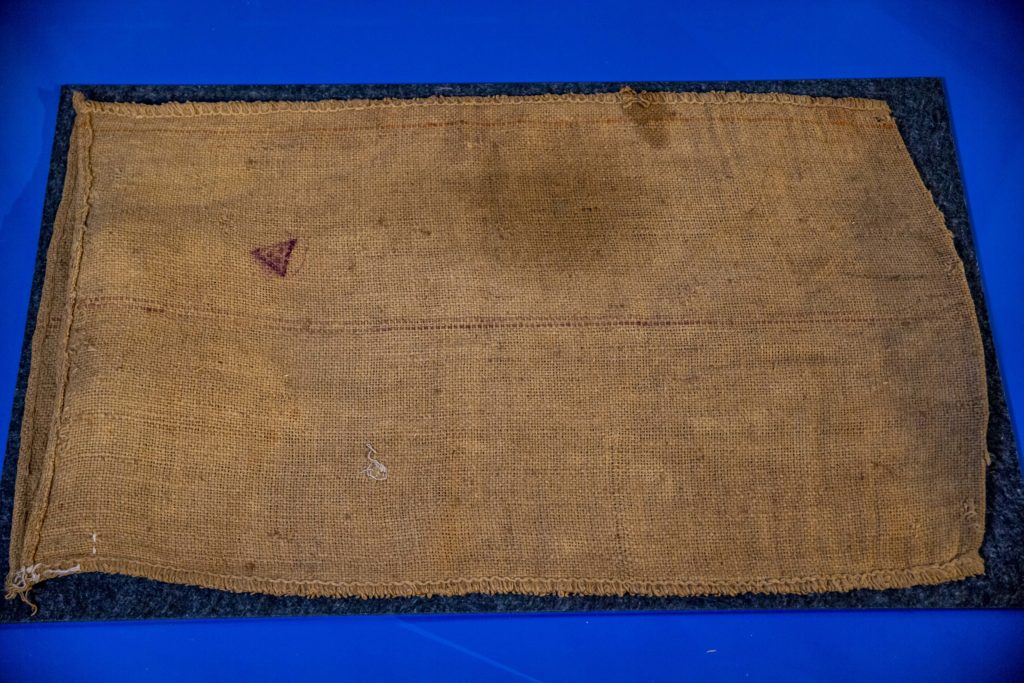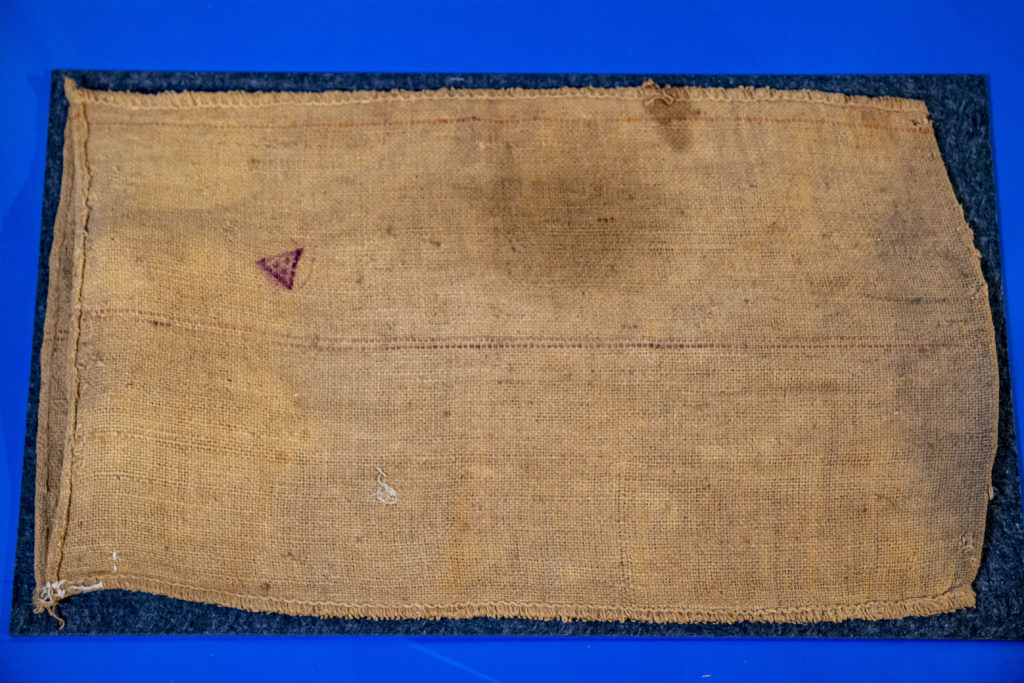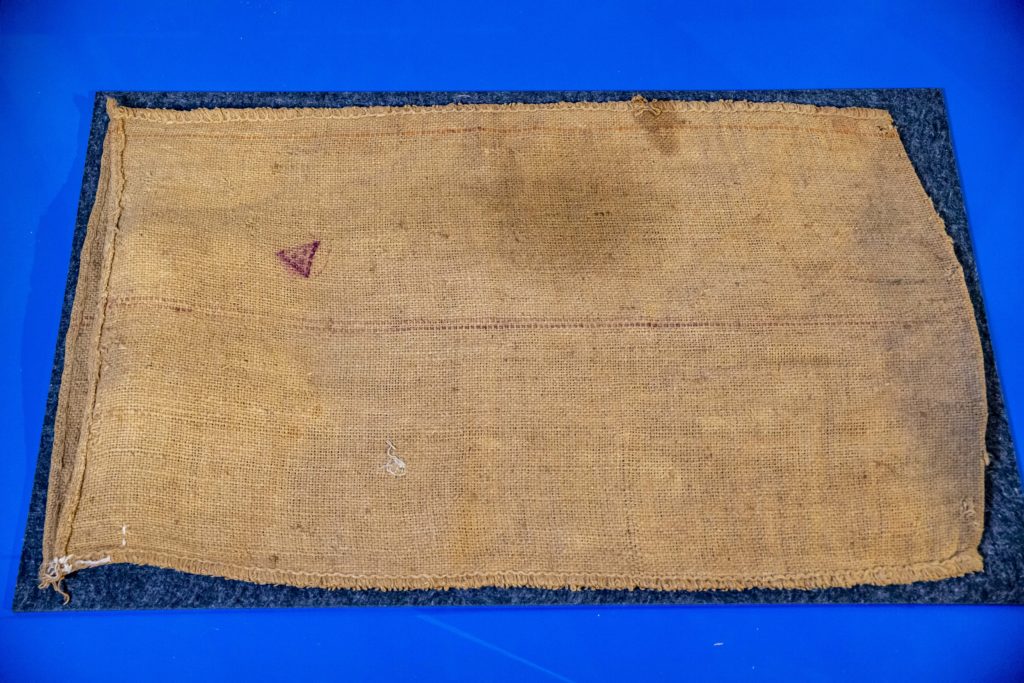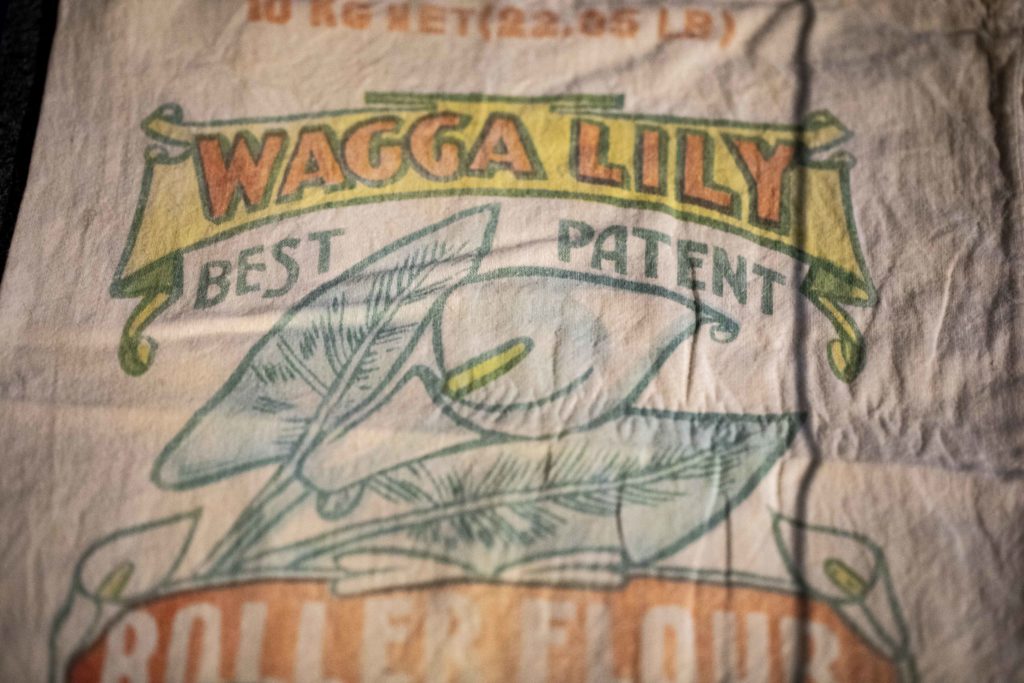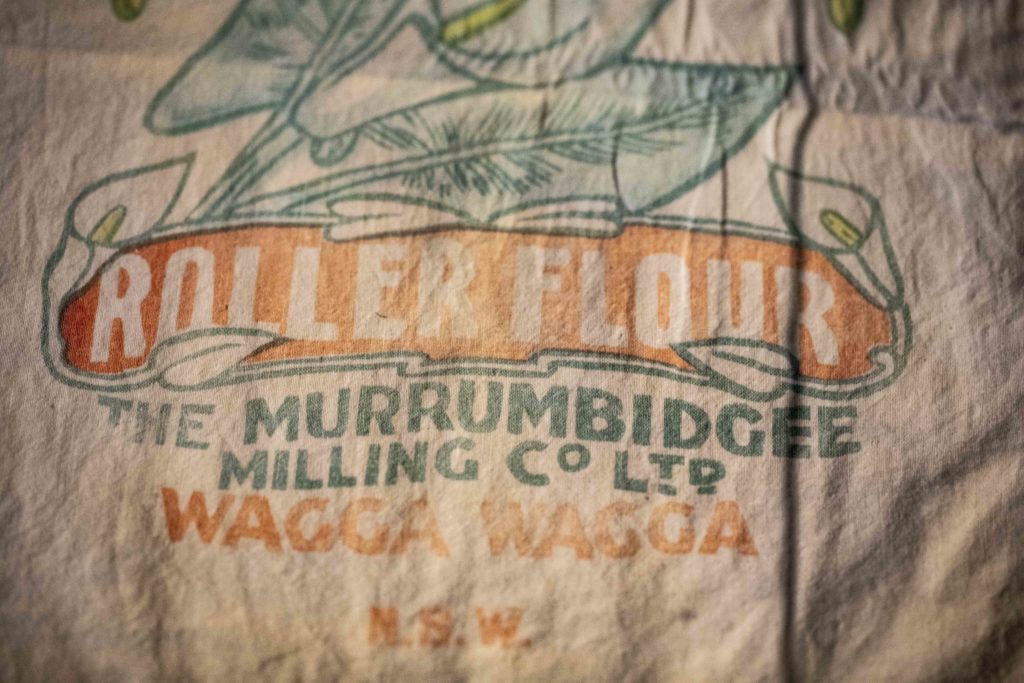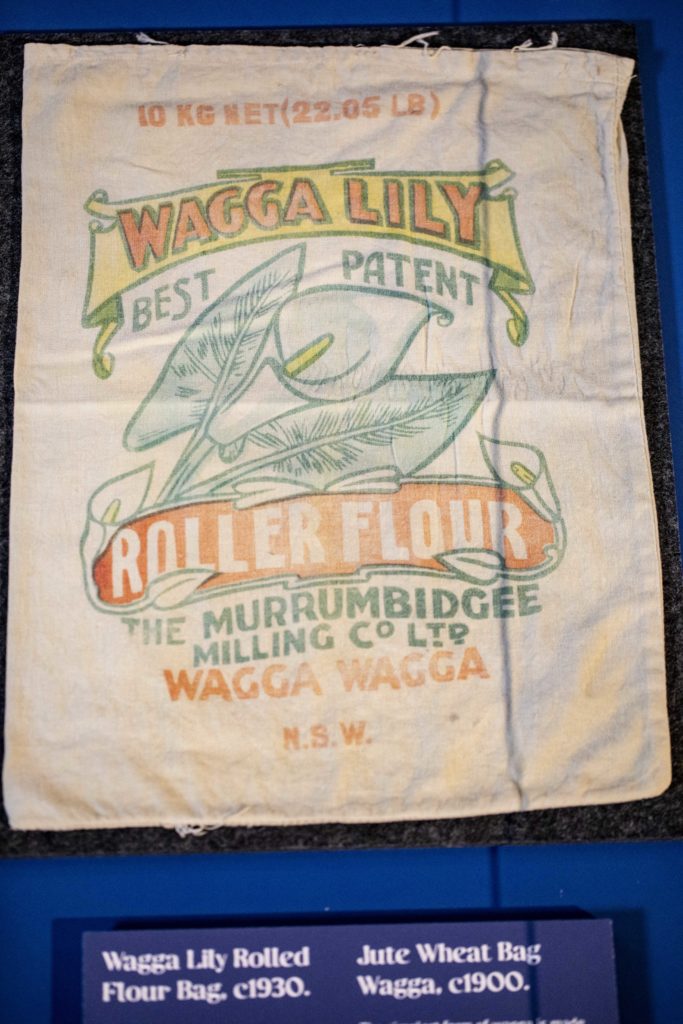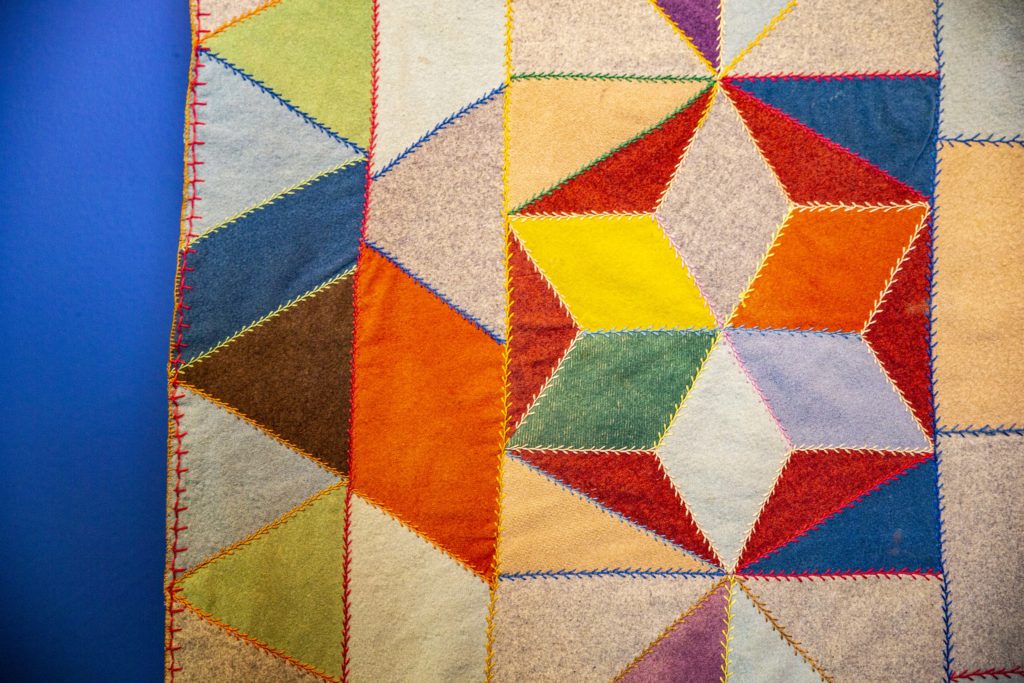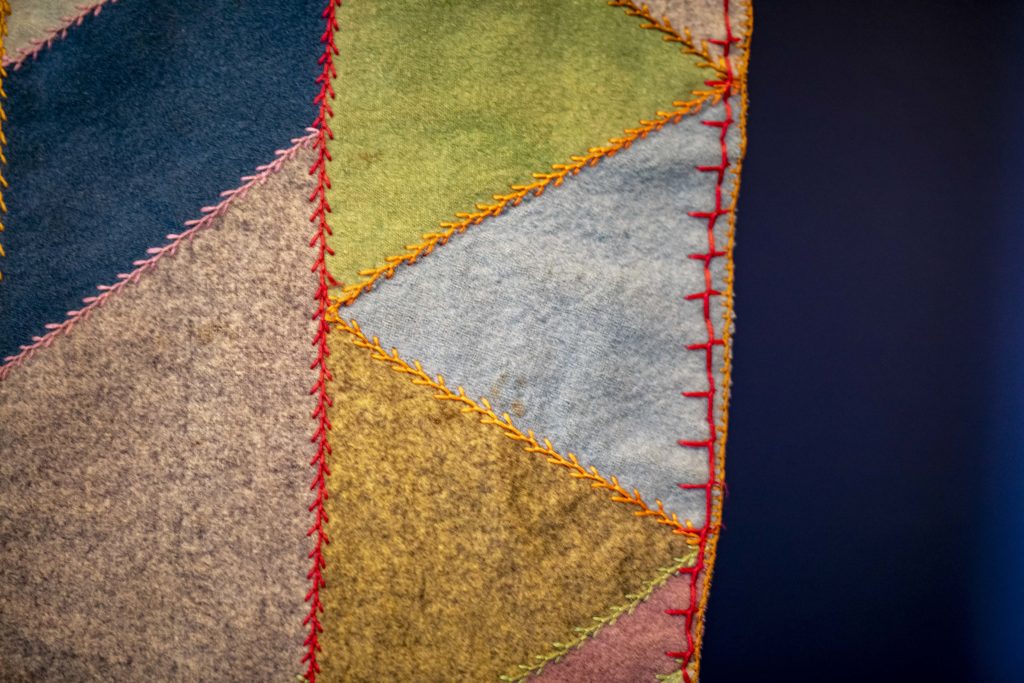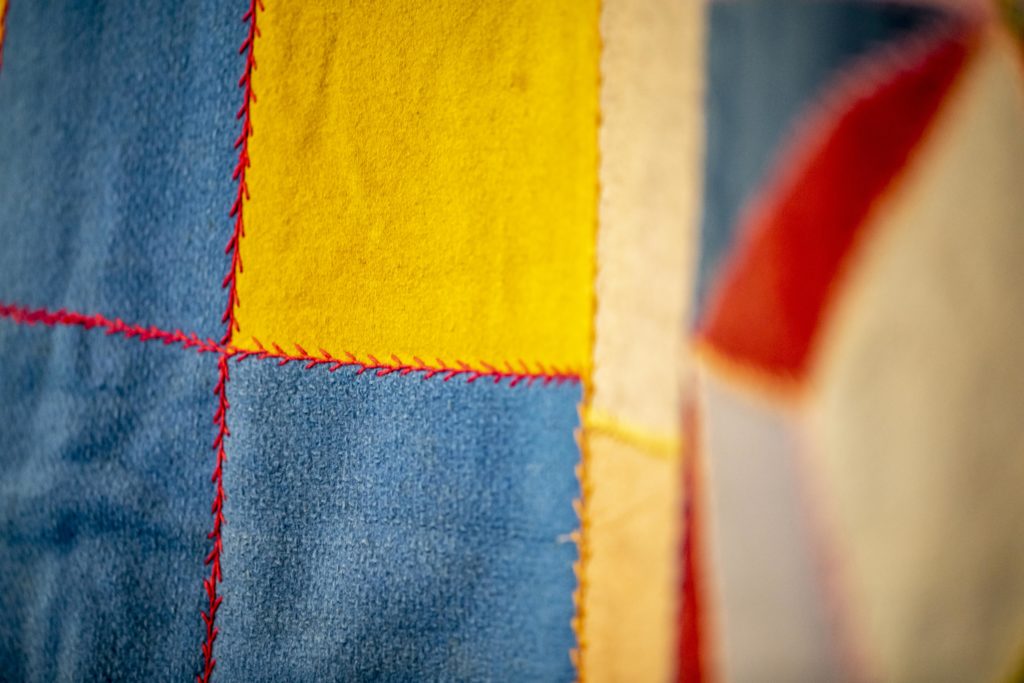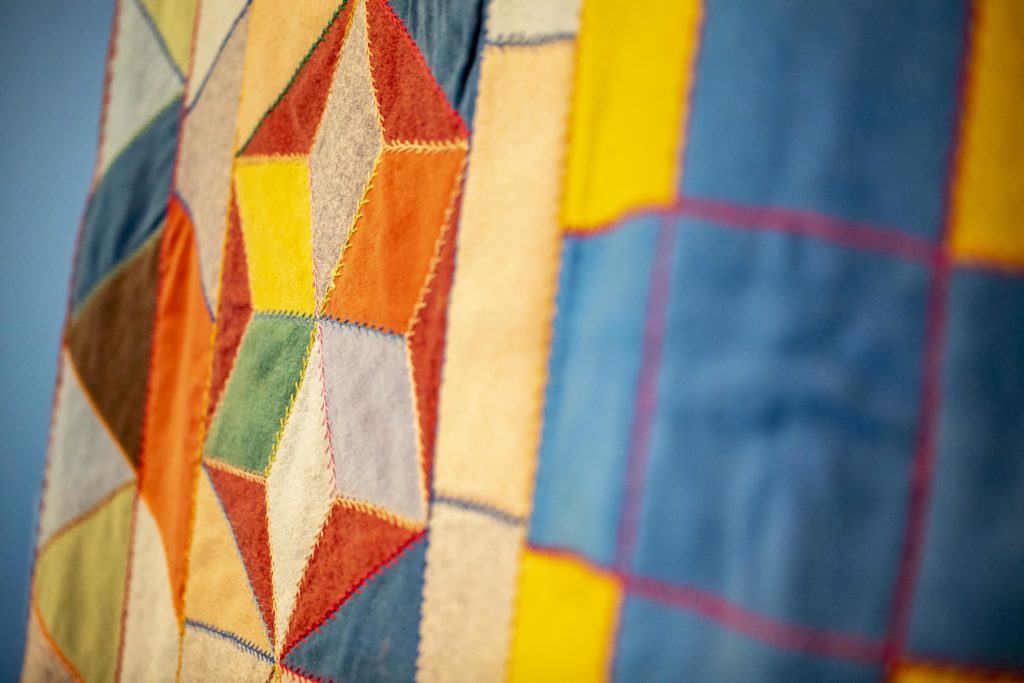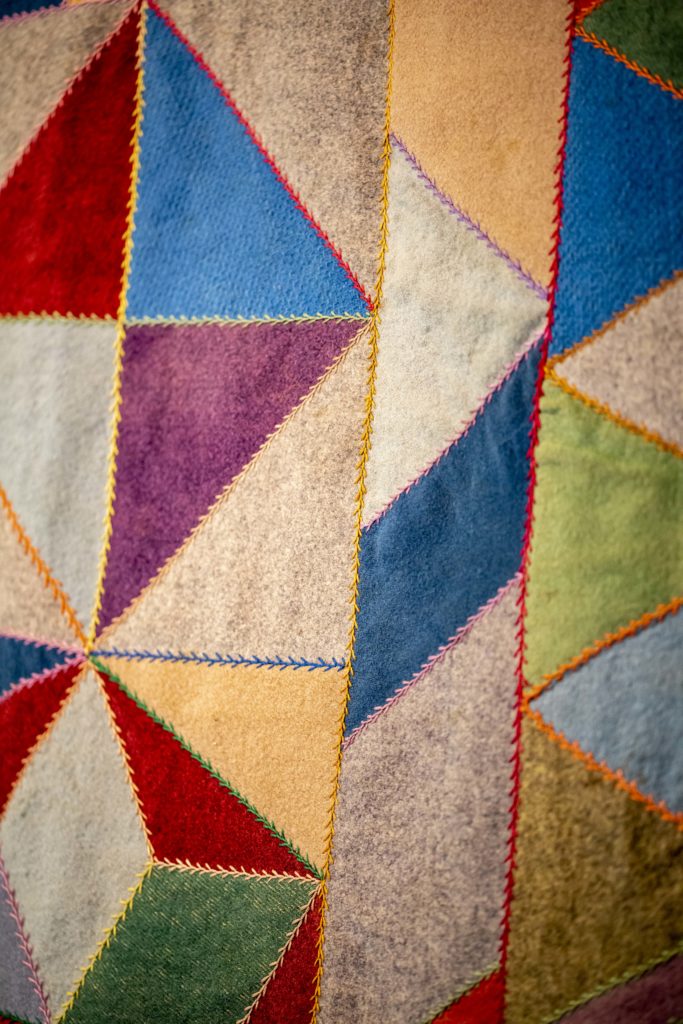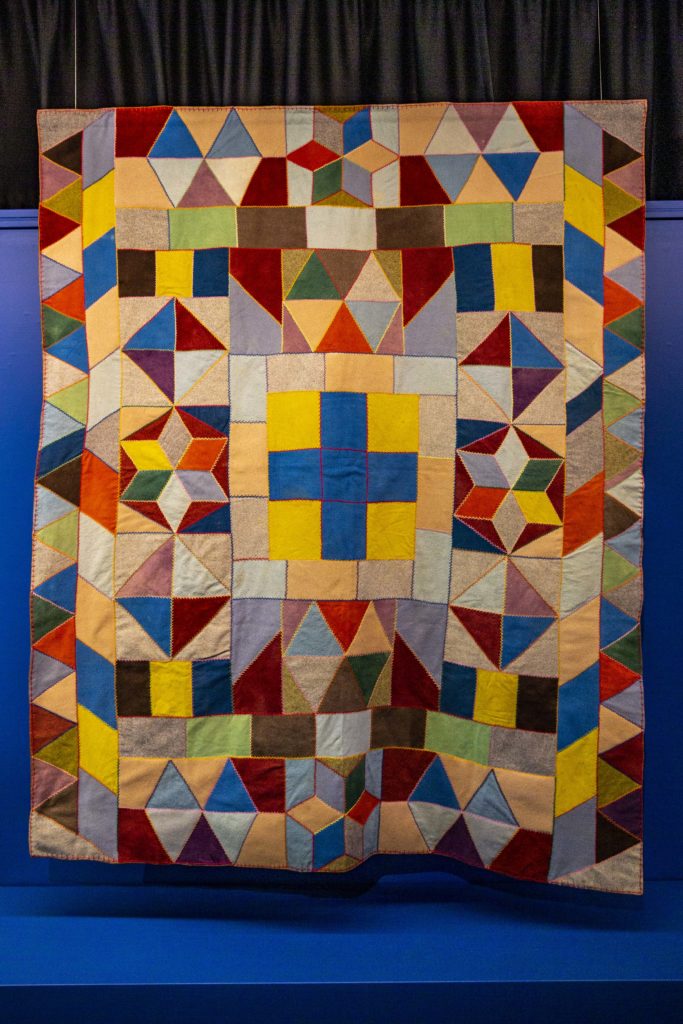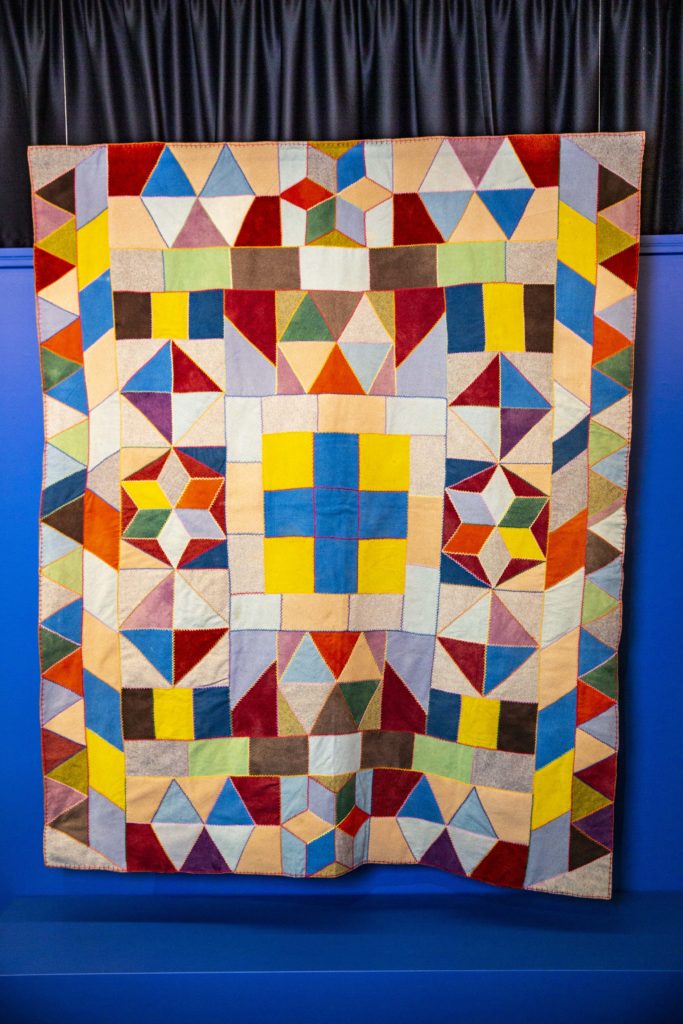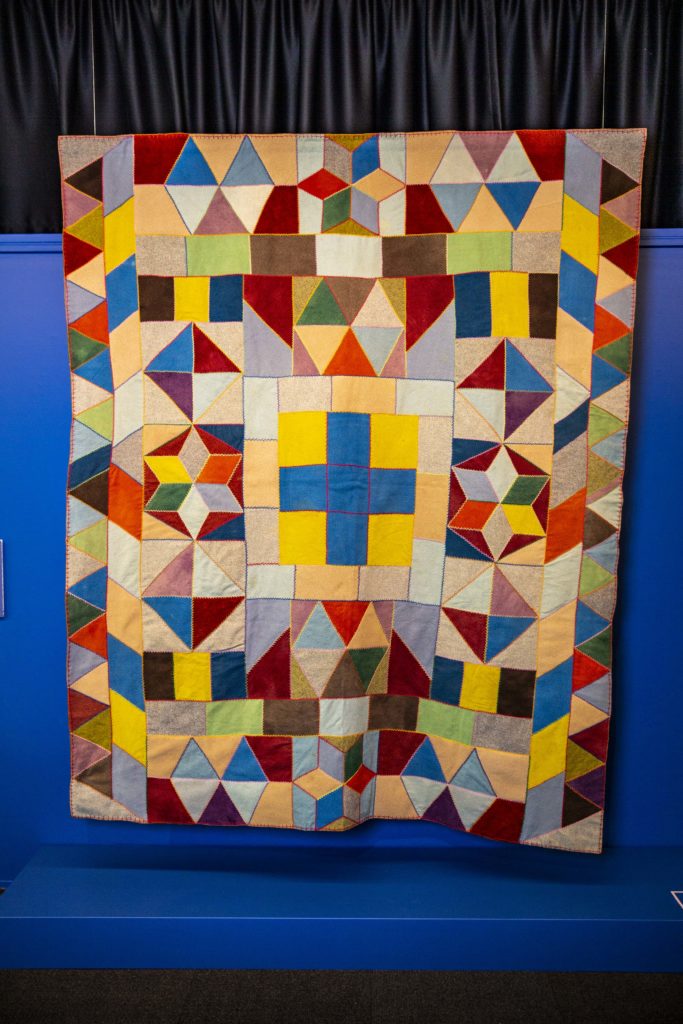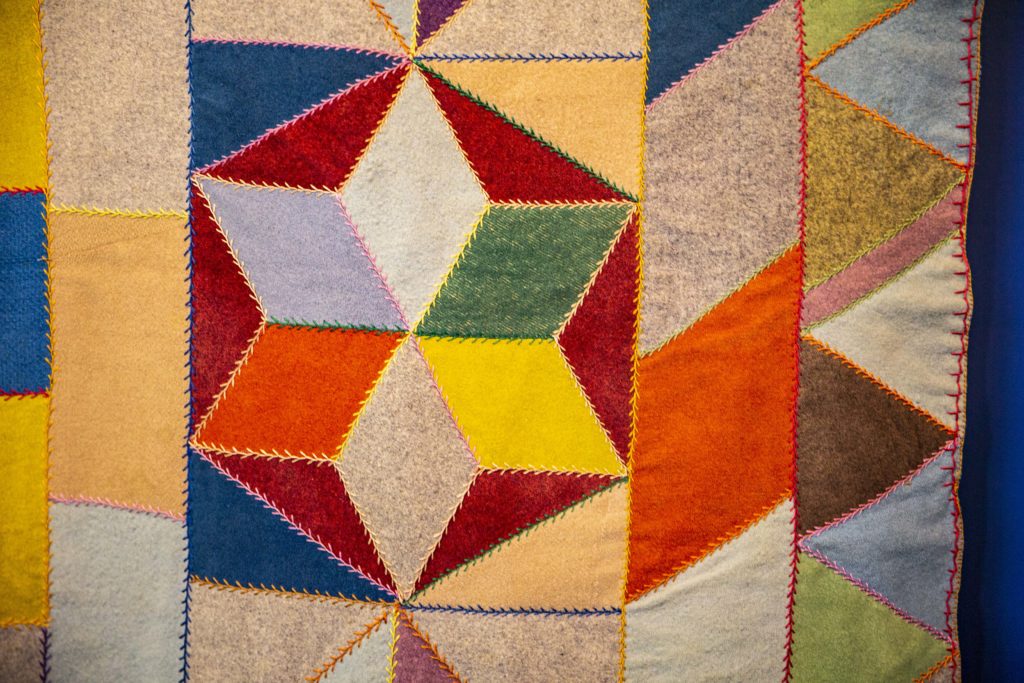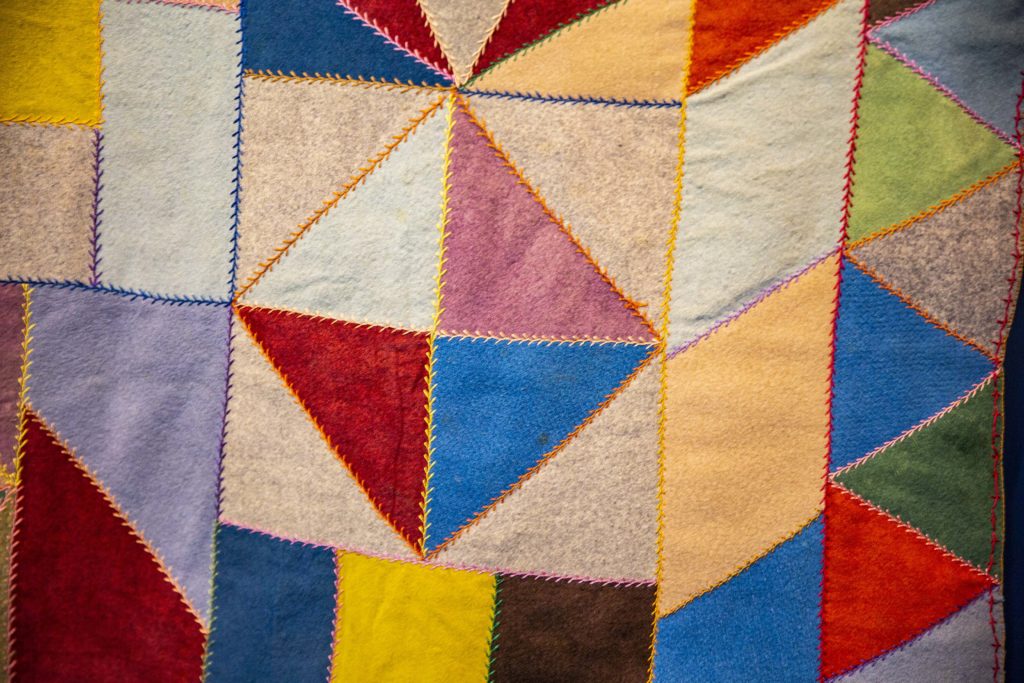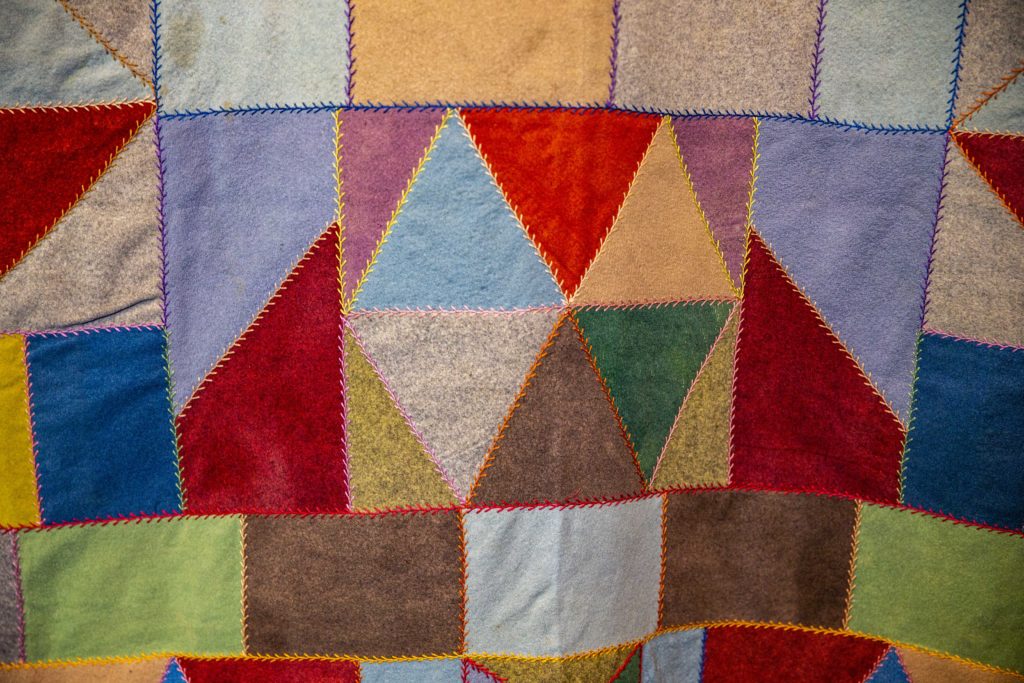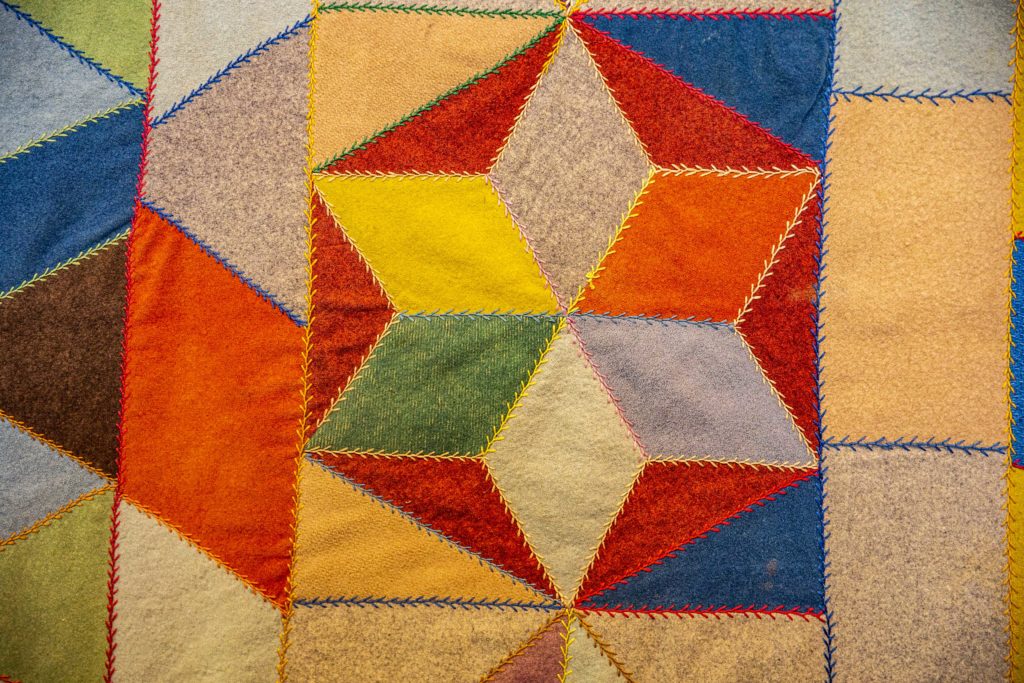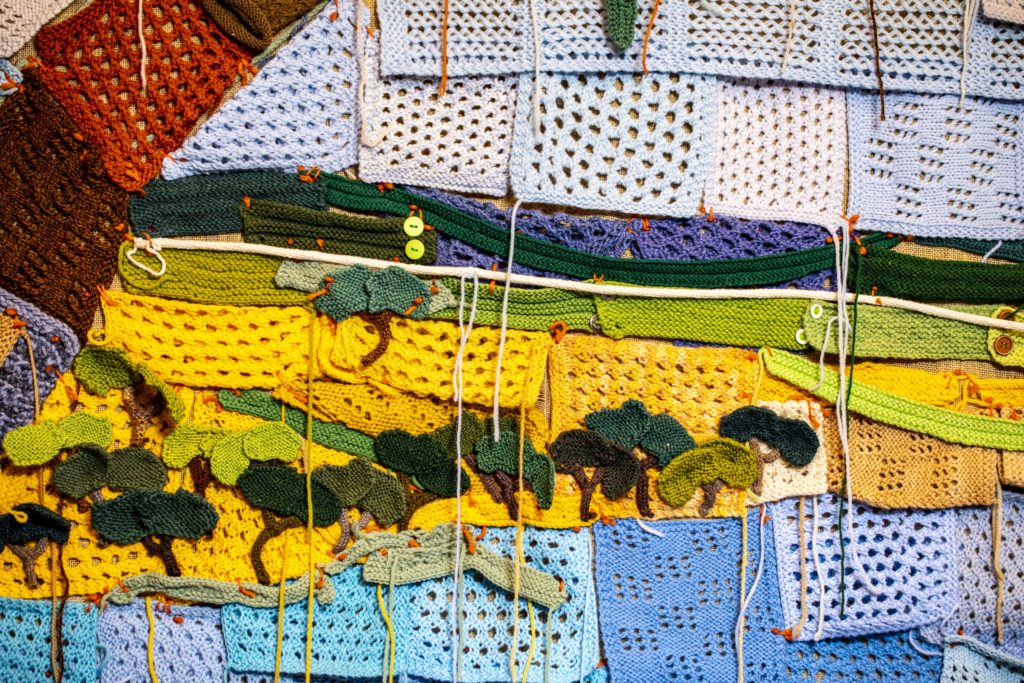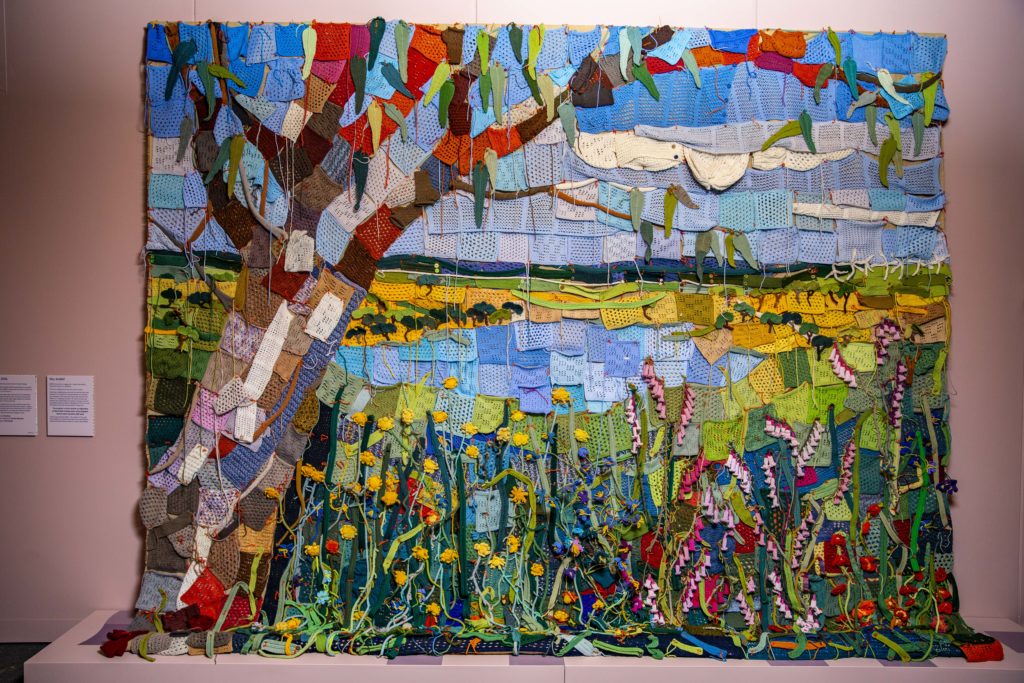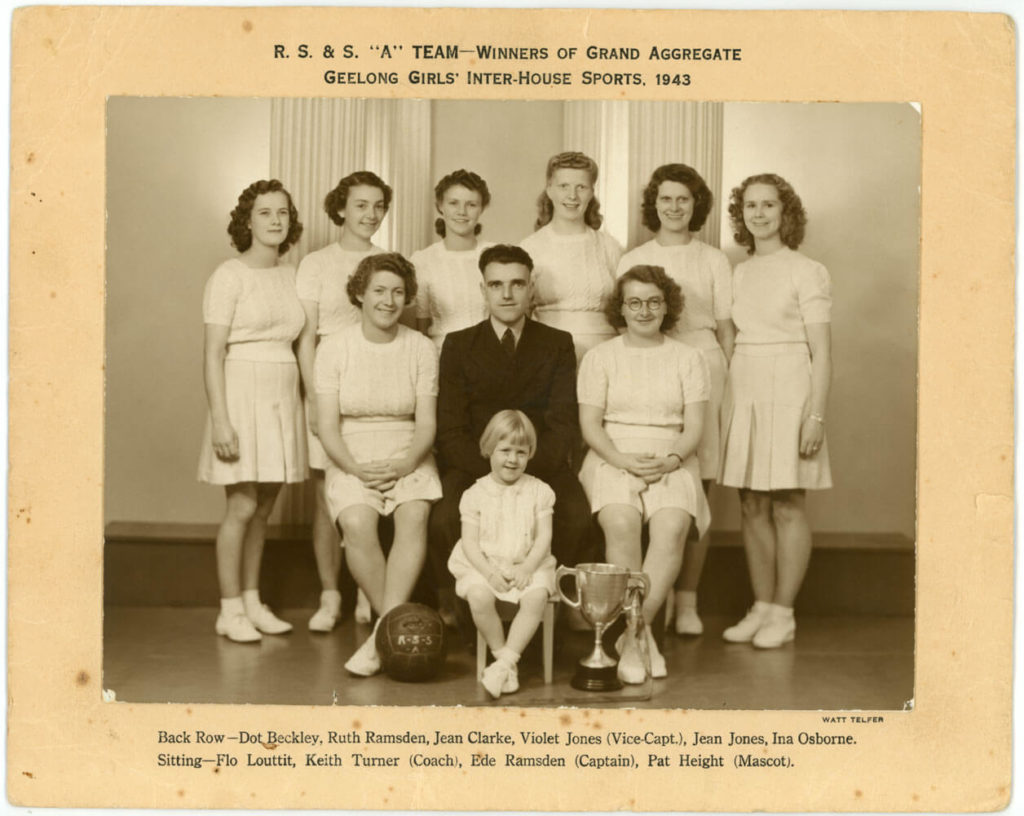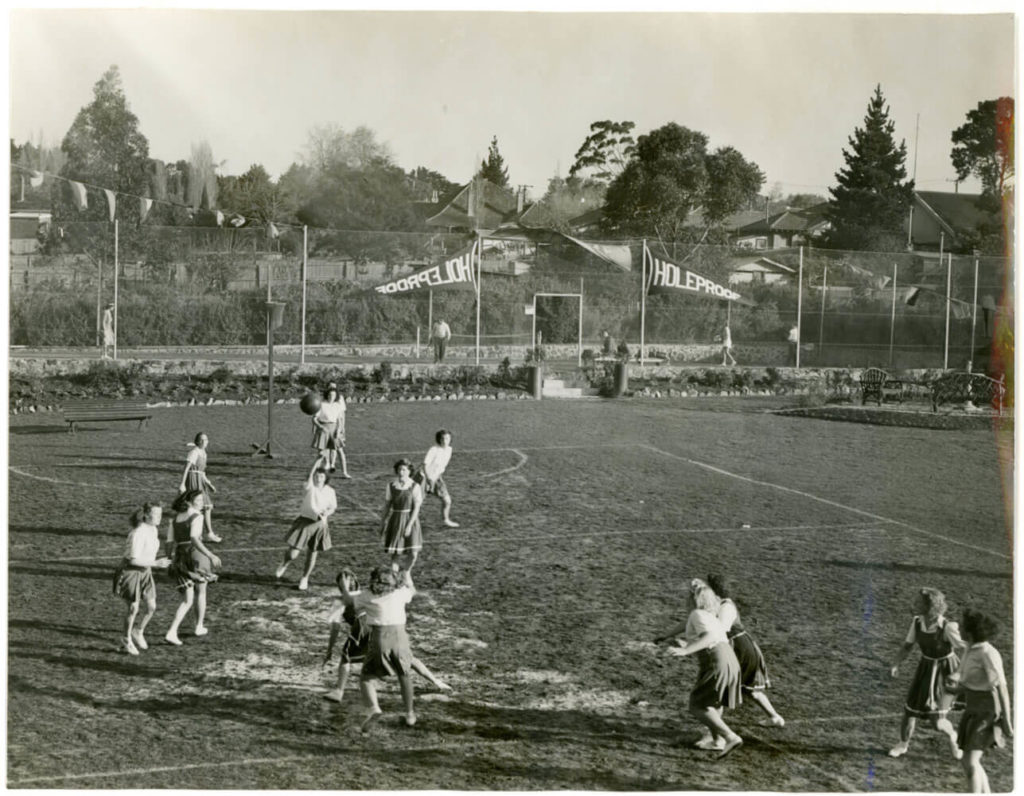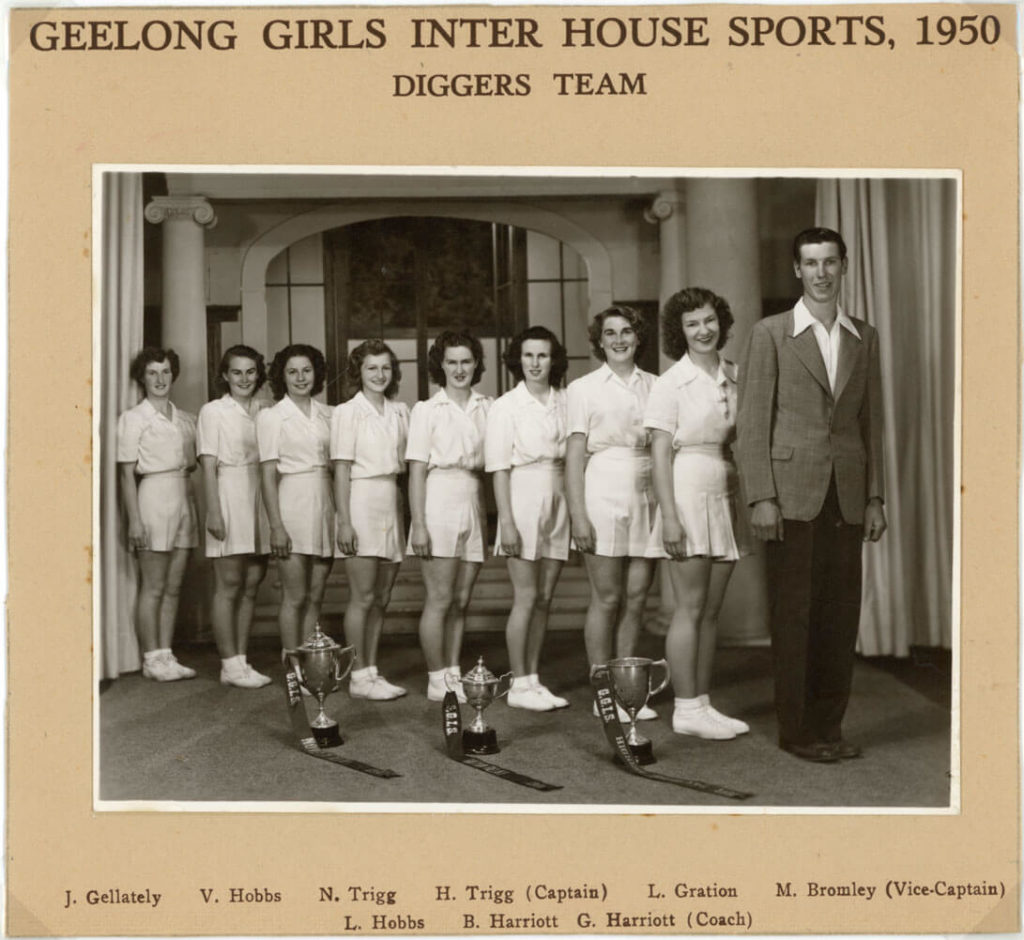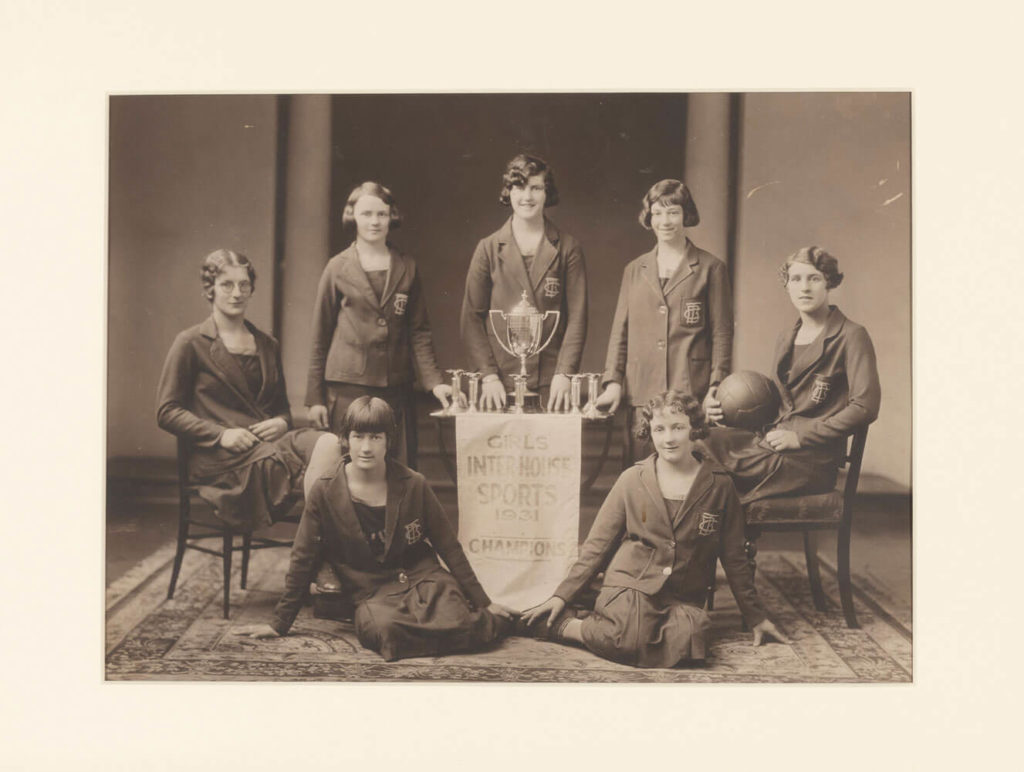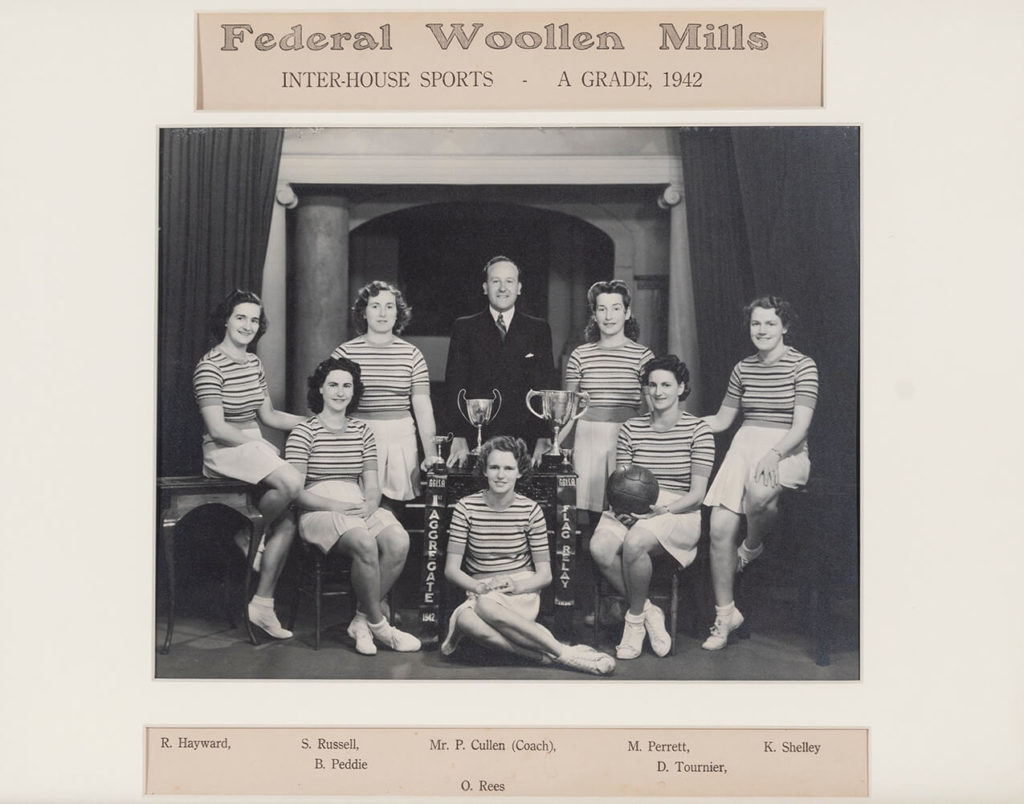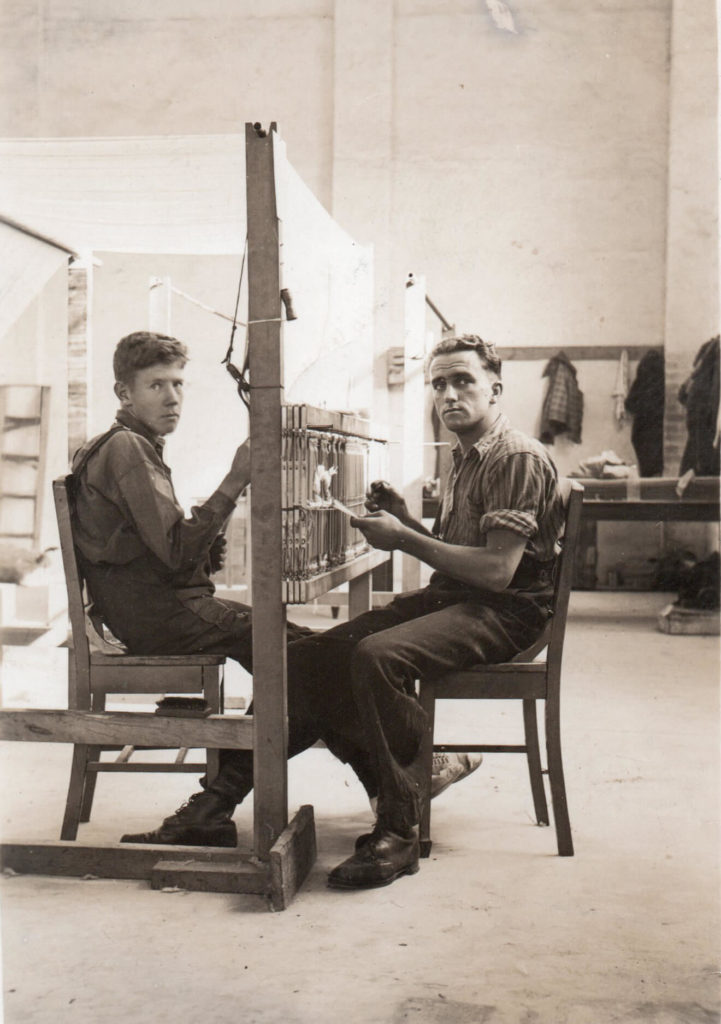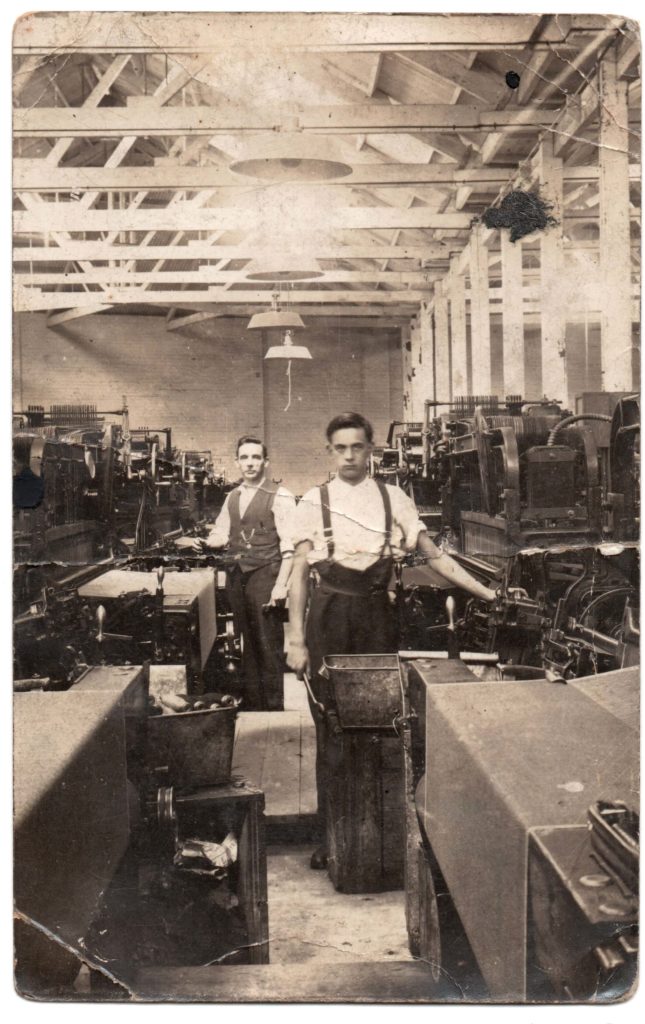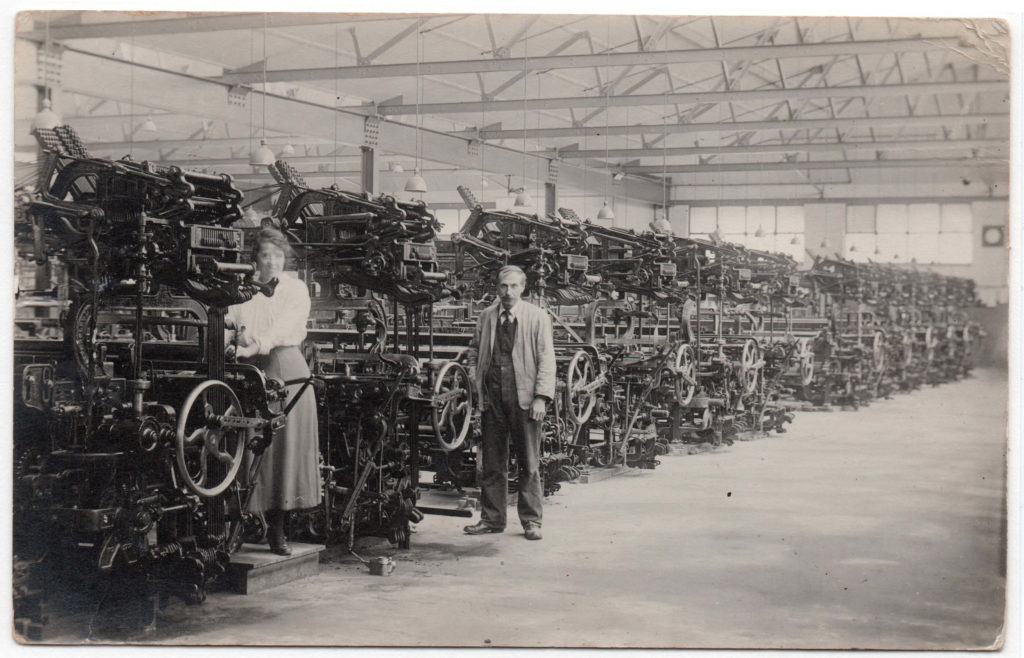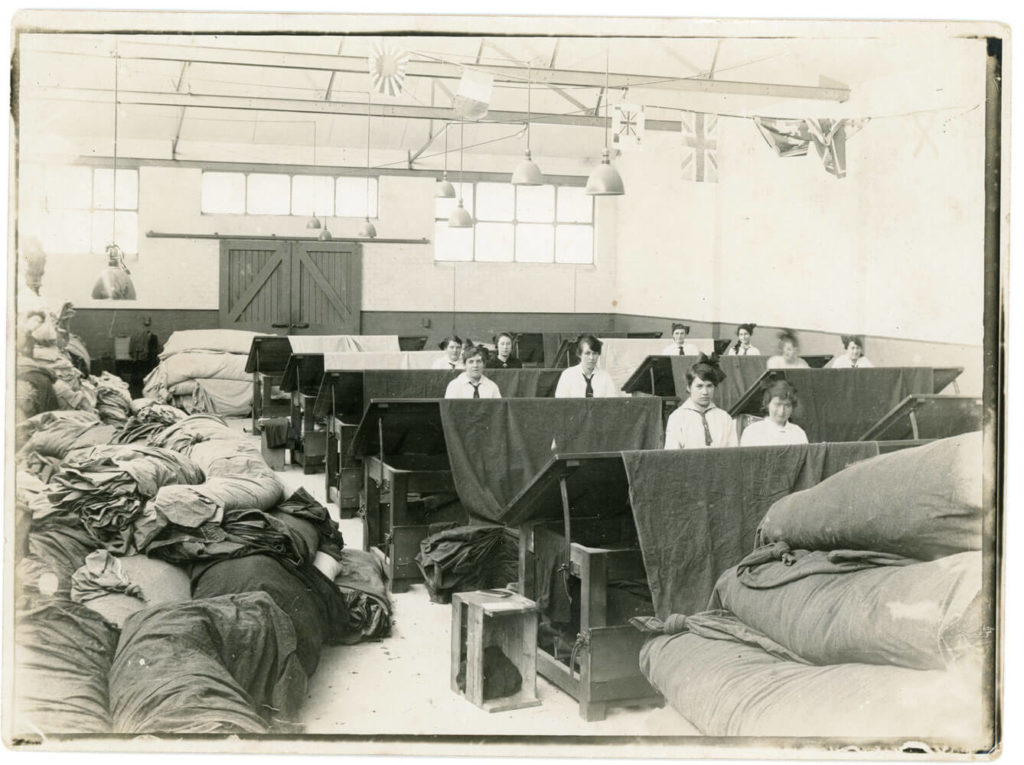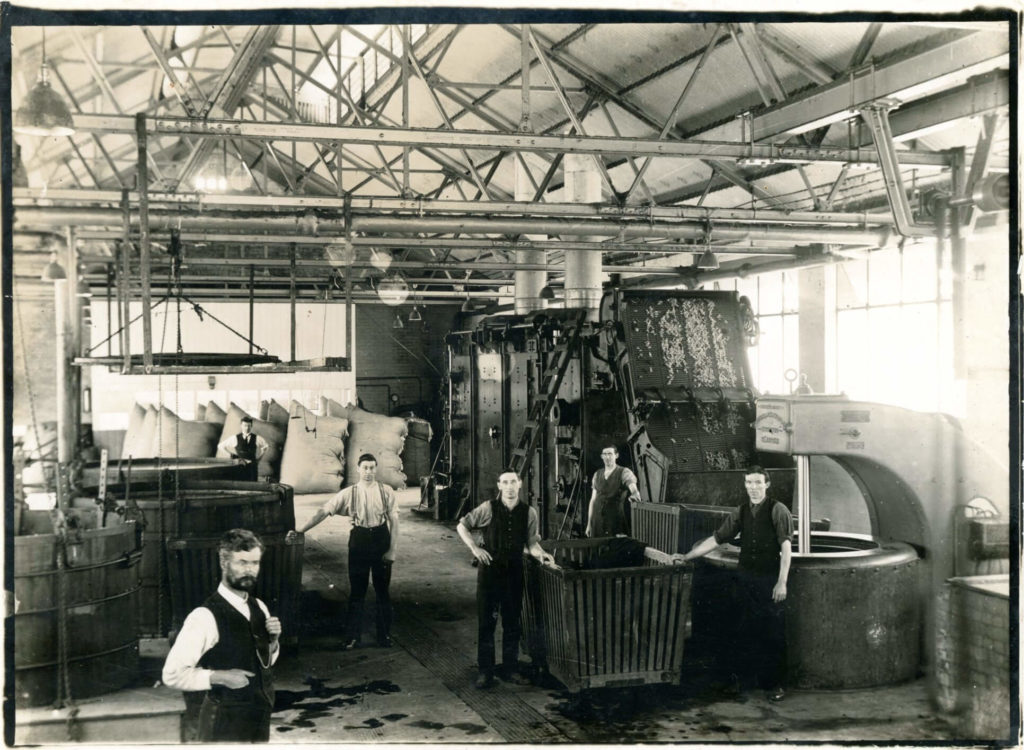Green Wheat Bag Wagga and Wheat Bag Wagga, 1945
These waggas were made and owned by Percy Perkins. He was a keen fisherman and hunter his first love was sitting on the banks of the Murray River with a fishing rod in his hand. Family camping trips were spent by the river where everyone slept on stretchers with several army blankets underneath and a wheat bag wagga on top. Perkins joined the police force in his early twenties and apart from an eighteen-month posting in Melbourne, spent the rest of his career serving communities in country Victoria. A good wagga accompanied Percy on all his fishing and hunting journeys. The green colour of the wagga is from ‘Dekkol’, a preservative which Perkins used to protect his cotton fishing nets from rotting. The second wagga is made from two standard sized jute wheat bags split and hand bound along the seams. It is typical of a basic wagga made by shearers, farmers and swagmen. The paint stains on this wagga display signs of later use as a painting drop sheet by descendants who inherited the quilt.
Domestic Wagga
Mrs Faulkner of Bendigo made this wagga for her father in his later years when a hot water bottle was considered too dangerous and a blanket was not warm enough. It was donated to the Running Stitch Collection by Mrs Faulkner after she saw their memorabilia exhibition curated by Murray Walker at the Museum of Victoria in 1985. Mrs Faulkner sent the wagga down on the train and Lois Densham picked it up from ‘Travellers Aid’ at Spencer Street station. Many of the quilts in the National Wool Museum Collection were originally part of the Running Stitch Collection.
Suiting Wagga
This small woollen suiting wagga was machine stitched, backed with orange cotton and edged with brown navy and white striped braid. It shows how important old and disused suiting fabric was for quilt making during World War Two.
World War Two Wagga
This wagga was made during World War Two from disused patterned rayon patches. The wagga is filled with jute bags. The maker of the quilt is unknown. The quilt shows the persistence of wagga quilt making right through to the 1940s.
Green & Pink Wagga Filled with Jute Bags
This large wagga is made from fabric pieces that were handstitched together and lined with jute wheat bags. The fabric pieces are roughly rectangular and of various sizes. They are made from cut-down pink and green cotton knit garments. The wagga was once described by early collectors as the ‘world’s worst wagga’. Today, it is considered one of the most significant waggas in the National Wool Museum’s extensive collection. Unfortunately, very little is known about the maker of this wagga.
Patchwork suiting wagga
This patchwork quilt is made from suiting and fabric offcuts. It is machine stitched with red diamond and rectangle motifs at strategic positions. Little is known about the maker or owner of the quilt but the red triangles and squares show a flourish of creativity for the humble wagga quilt.
Child's Wagga Quilt
This homemade wagga was purchased from the Old Bank Auctions, Geelong on 2 December 2000 for $20.00. The regular size of the patchwork and the varying colours show that the fabric was most likely sourced from a disused men’s suit fabric sample book.
Mr Stephens' Wagga
This wagga is made from men’s suits and coats, unpicked and sewn together. It was made by the great uncle of George Stephens. Mr Stephens was a mining engineer from 1885 to 1915 in Stawell, Main Lead (near Beaufort), Diamond Creek and Costerfield in Victoria. His last residence was at Bosterfield, where the Wagga was used as a bed quilt until the 1940s. Not just a maker of wagga quilts and an engineer, Mr Stephens was also a hero – in 1910 he saved the life of a blacksmith at Diamond Creek Gold Mine.
Child’s Cot Cover Insert
This wagga was made by Jean Hepner’s grandmother from used woollen garments during the Great Depression. The garments were hand stitched on to an old woollen blanket. The quilt was used by at least five of the seven children in the family. It had assorted covers that were replaced when needed. In later years, it was also used by Hepner’s grandchildren.
Jute Wheat Bag Wagga
The simplest form of wagga quilt is the jute wheat bag wagga. This wagga was made of several two-bushel bags hand bound together. Two rows of red jute and one of orange run the length of each side. Two holes have been mended with white string. Green, purple and black markings have been stamped into the bag. Although the maker is unknown, the size shows that this quilt was created for a child to sleep inside.
Wagga Lily Rolled Flour Bag
This ten-kilogram flour bag came from the Murrumbidgee Milling Company Limited, Wagga Wagga, NSW. The name ‘wagga quilt’ takes its name from the flour mills that operated in and around the NSW town. As you will see throughout the exhibition, bags like this one were used as the interior layer of early wagga quilts.
Harry Walter Wilton’s Quilt
This quilt was made by Harry Walter Hewitt Wilton (1872-1950). Harry joined the Essex Regiment and served in the British Military in India and also served in the Second Boer War. He married the seamstress Mary Elizabeth in India in 1895. Harry was injured during battle and made this quilt as part of his rehabilitation. The quilt was made using woollen army singlets. Harry and Mary moved to a farm near Orbost, Victoria, in 1914. The quilt remained in the family until 2019.
WARM
WARM was a community project about why the earth is warming and what people can do about it. It was led by the artist collective called SEAM – Sustainable Environment Arts Movement. It comprises two large-scale artworks created by Lars Stenberg. First, a landscape scarred by coal mining. Second, the same landscape many decades later, regenerated and renewed after the closure of the coal mine. In 2016, 250 knitters from across Australia created more than 1,000 knitted pieces. During several days of installation, these knitted pieces were assembled to create the image of the renewed landscape. WARM was a sustainable project. All knitted elements were from left over, reused or organic wool. Any unavoidable emissions created as a result of delivering the project were offset by trees planted by Fifteen Trees. WARM has recently found a permanent home in the National Wool Museum’s Collection. Paintings by Lars Stenberg
Knitted pieces designed by Georgie Nicholson
Graphic design by Mel Stanger
Ceremonial Hunting Grounds
in the You Yangs by Stanley Couzens
Stanley Couzens, a Gunditjmara man and long-time Geelong resident, painted this story upon commission from the Geelong Wool Combing Company. It depicts hunting in the You Yangs, the distinctive granite peaks that overlook the region. In 1993, Couzens’ painting was translated into a pattern by textile designer Jenny McMahon. It was then turned into a jumper using wool sourced entirely from the region. It was fully processed, from fleece to fabric, in Geelong. The jumper was given to attendees at the opening of the Geelong Wool Combing company on 10 December 1993. Among the many guests, was the Prime Minister Paul Keating.
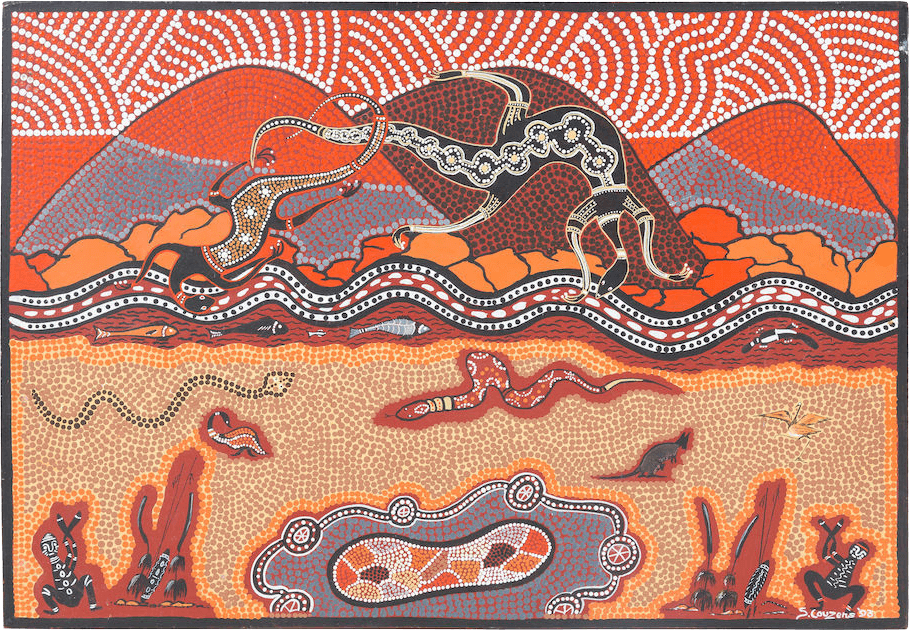
Axminster Loom
The Axminster Carpet Loom was originally built by Brintons in England in 1910 and was later used in their Geelong factory. The loom was in operation until the 1960s and then became a central feature of the National Wool Museum. The loom is known as an Axminster gripper loom. The gripper system was invented by Brintons in 1890 and operates using a gripper shaped like a bird’s beak. This loom also uses a jacquard system for weaving colours. In jacquard weaving, punched cards are used to instruct the loom which colour to use. The system was invented by Joseph Jacquard, a silk weaver from Lyon, and was introduced in 1804. It revolutionised pattern weaving as it had the capacity to create intricate patterns. Charles Babbage was later to adapt Jacquards punch-card system to produce a calculator that was the forerunner of computer programming.
Fragment from MacArthurs first clip
Cloth sample from an opera cloak made in England c1820. Wool for the cloak was clipped from John Macarthur’s merino sheep in 1816. Macarthur is recognised as a pioneer of the wool industry that was to boom in Australia in the early nineteenth century. The British woollen mills were desperate for wool at the time because of the Napoleonic blockade, and the Australian bale sold for a record price. Australia needed a product to sell in European markets which did not perish during long sea-voyages and which offered high value per unit of weight.
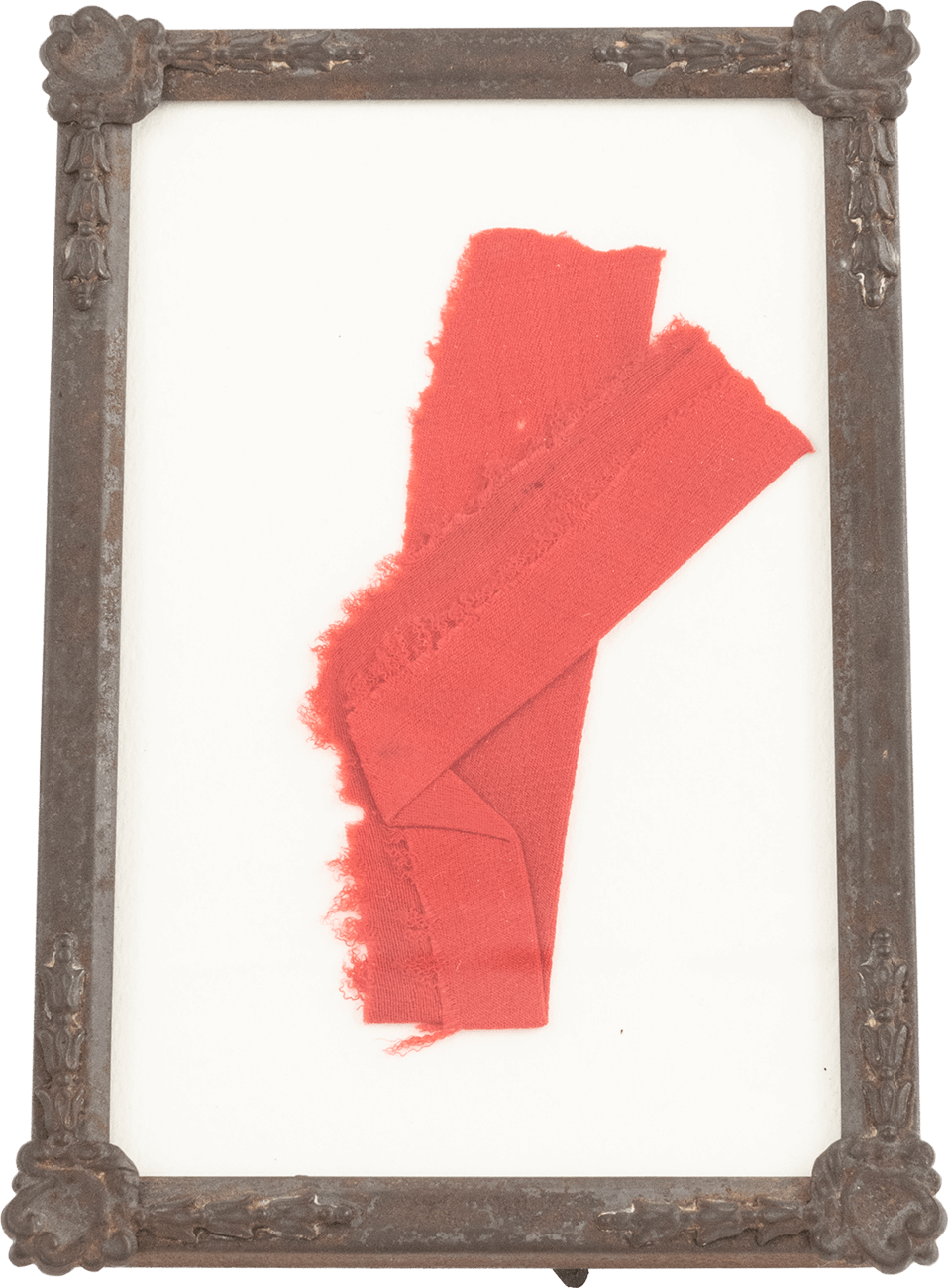
Badges
from Geelong Peace Celebrations
Fundraising badge produced for the Geelong Peace Celebrations in 1919. Many badges were produced at this time for popular causes. Such badges were sold in trams, buses, funds. Funds raised were given to those affected by the War in the Geelong and District region.
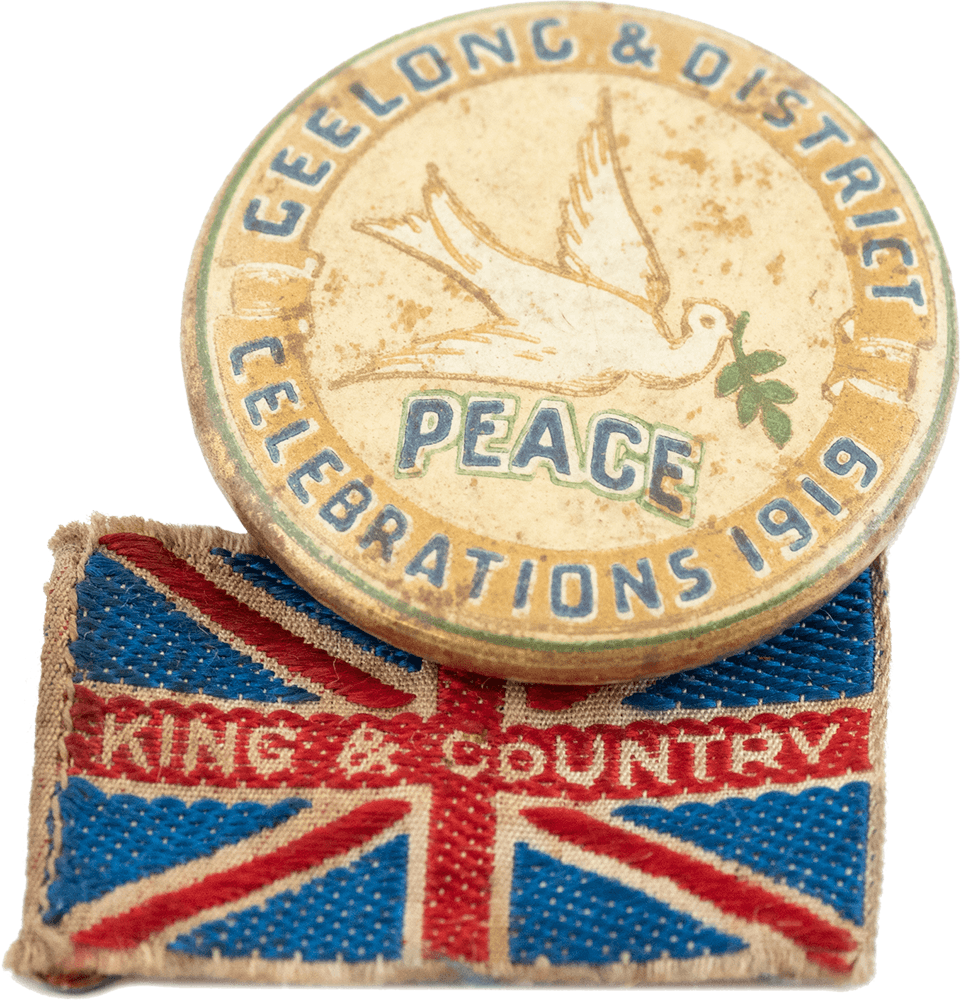
Woollen Textile Fragment
from the Wreck of the Sydney Cove
The Sydney Cove started life as the ship Begum Shaw, she was renamed in 1796 when purchased and used to carry goods to Sydney Cove. She ran ashore on the 9th of February, 1797 on the so named Preservation Island, near Tasmania. She was among the first ships wrecked on the east coast of Australia.
This sample of woven fabric was recovered from the shipwreck nearly 200 years later. It was analysed by the CSRIO as wool with the fibre being rated at 25 microns and weaved in a 2/2 Hopsack structure. This information suggests that it formed part of a coat with an additional fibre identified as hemp also being found on the sample indicating that the jacket would have likely belonged to a member of the crew. The durability of the wool is unquestionable after surviving almost 200 years in the sea floor.
Also of note was the recovery from the shipwreck of the world’s oldest bottle of beer.
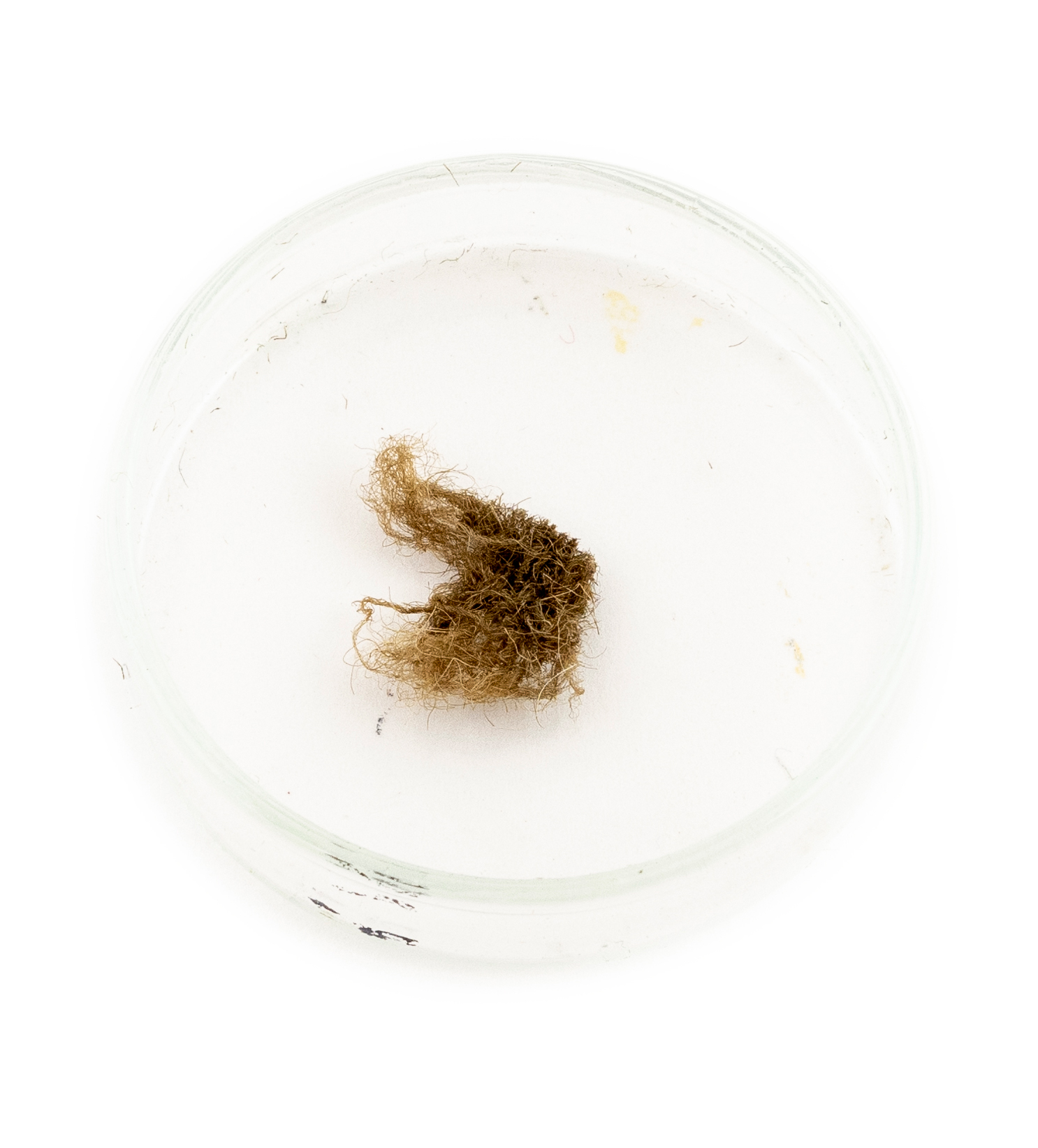
Green Wheat Bag Wagga
This Wagga was made in 1945 in Kyabram, Victoria by Percy Perkins. Perkins was a police officer serving in regional towns in Victoria. He was a keen fisherman and hunter. Family camping trips were spent by the river where everyone slept on stretchers with several army blankets underneath and a wheat bag wagga on top. The green colour of this wagga is from “Dekkol” a preservative which Perkins used to protect his cotton fishing nets from rotting.
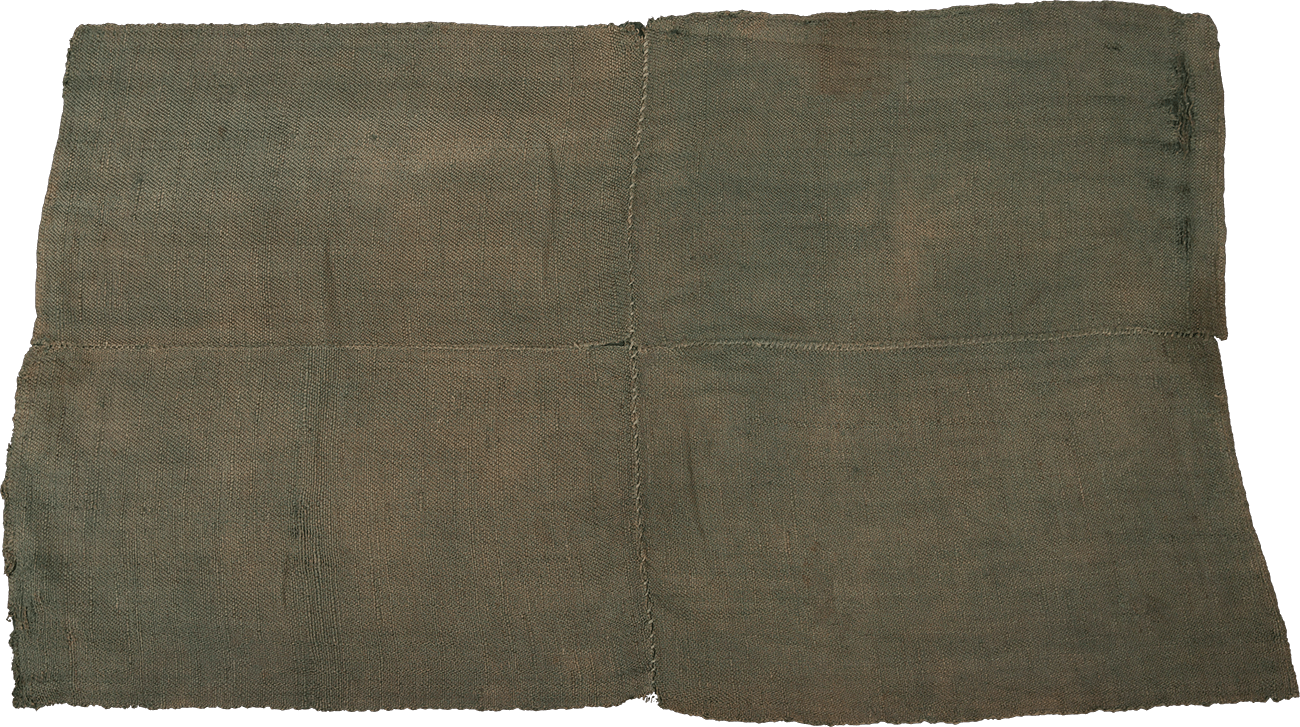
Inter House Athletics Day for Girls
Between the 1920’s and 1950’s the YWCA, Blue Triangle and local committee of representatives organised an Inter House Athletics Day for Girls in Geelong and Melbourne. Local Geelong businesses, such as the surrounding woollen mills, business firms and church clubs formed teams of seven women to compete in a variety of sports, such as bowls, basketball, hockey, cricket and soccer. Events such as these were organised to encourage women to participate in competitive sports and network with other women in the workforce.
Murgatroyd Photography Collection
Fred Murgatroyd studied at Leeds University before moving to Australia and becoming a loom tuner for various woollen mills in Victoria. During this time, he photographed and captured workers and machinery of the Federal Woollen Mills between 1918 and 1920. These photographs showcase the different processes of wool manufacturing during that time.
Fabric Sample Book
Such a book would work as a catalogue of a designer’s previous Mastercards. Mastercards are specification sheets that are sent to mills in order to produce commercial amounts of fabrics for tailoring into final products, such as suits. Keeping a catalogue of previous designs is useful for designers to take inspiration from and for re-releases of iconic designs. Interestingly the sample book was created during the Great Depression, there is a surprising amount of colour with many daring designs.
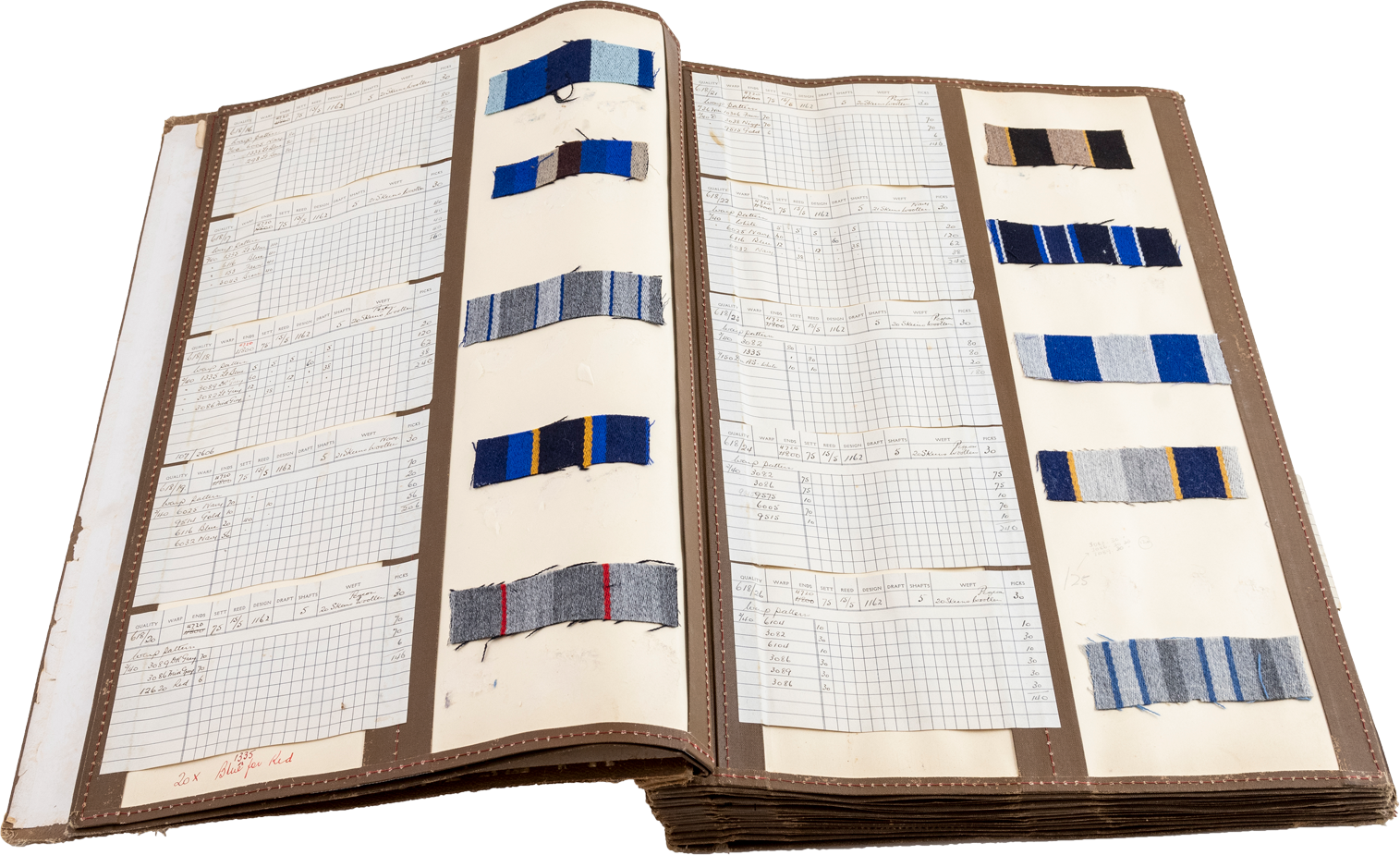
Spinning Wheel
Part of the Zakrzewski Collection of spinning wheels donated to the National Wool Museum by Mr Wlodzimierz Zakrzewski. For many years, Zakrzewski collected, researched and repaired spinning wheels from all over the world. This spinning wheel is from the Nepal/Tibet region. The hole in the crank which holds the stick to turn the wheel is extremely worn, demonstrating its use as a practical item as opposed to being a show piece.
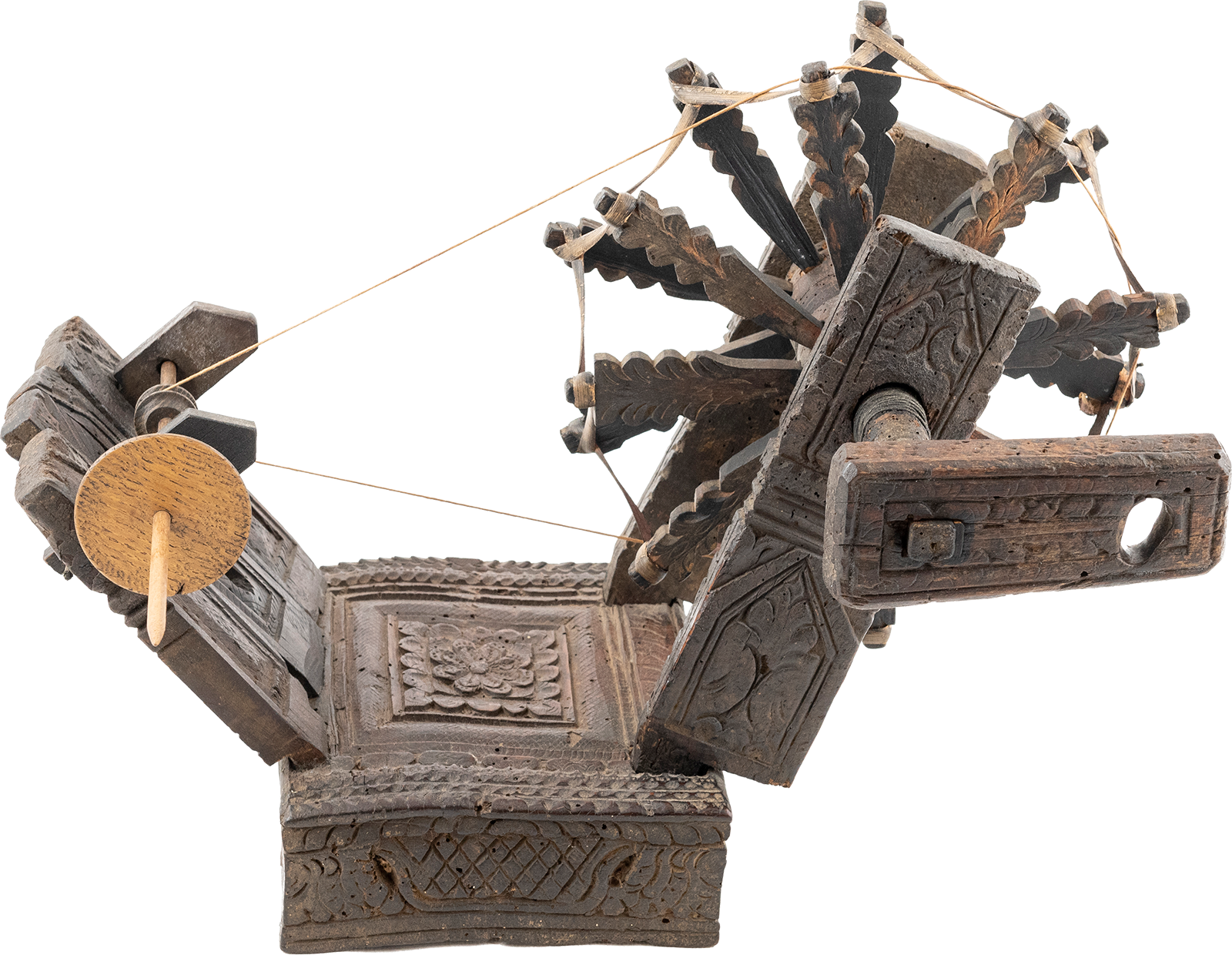
Dressage Quilt
‘Dressage Quilt’ was made by Jan Ross-Manley for the Running Stitch exhibition Wool Quilts Old and New in 1985. The quilt is made from the sashes of winning female participates of Equestrian Sports in Victoria. The central diamond is divided into quarters, one for each woman who won the ribbons. The quilt is about dedication, strength, exertion and achievement.
